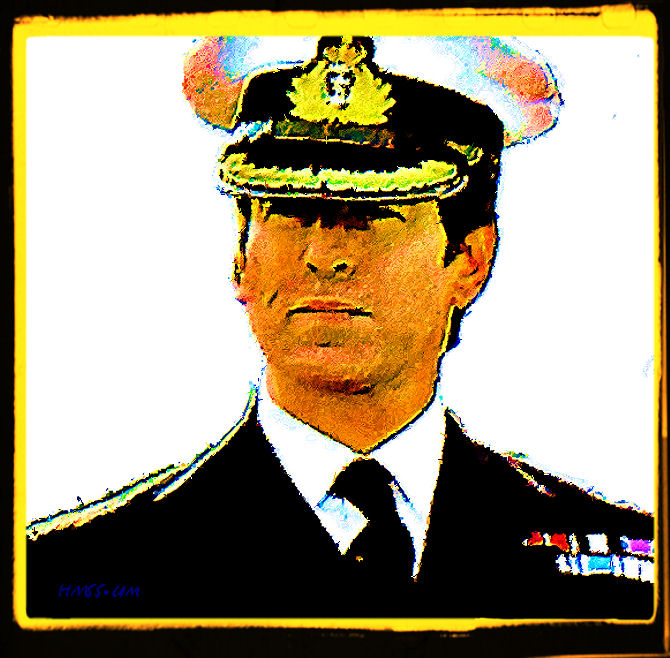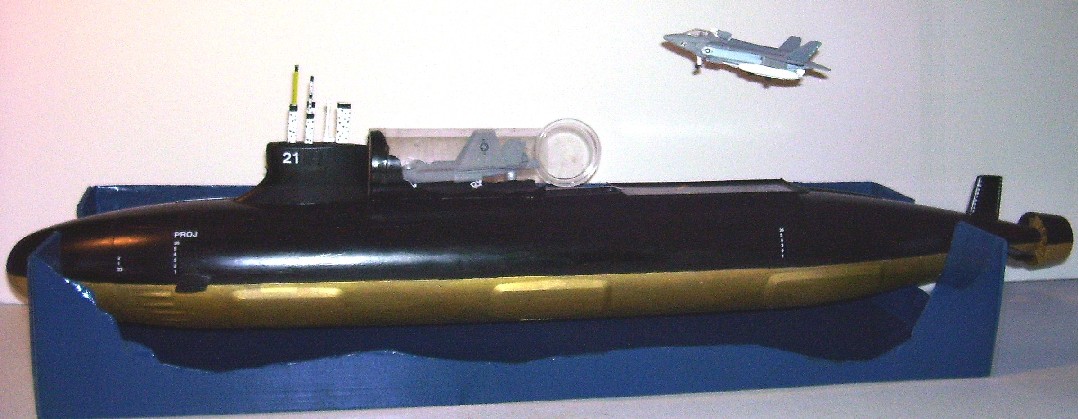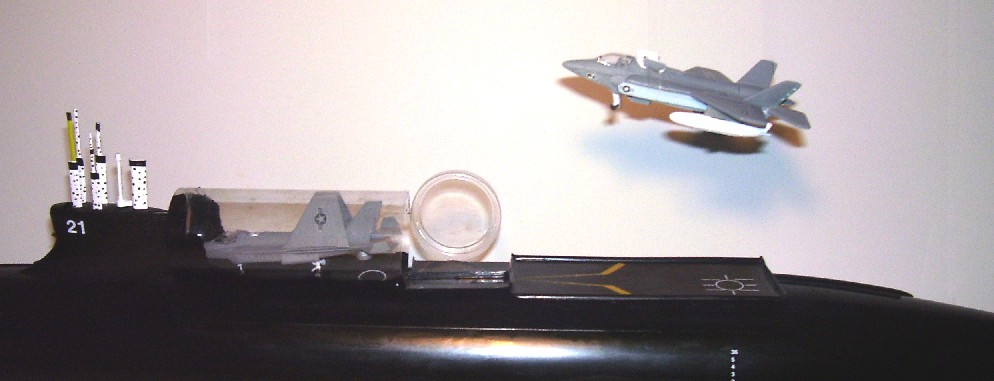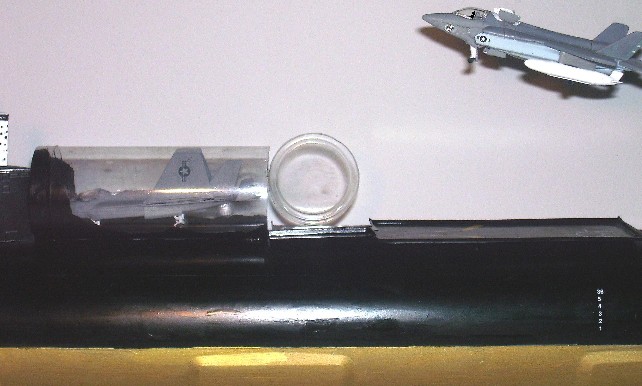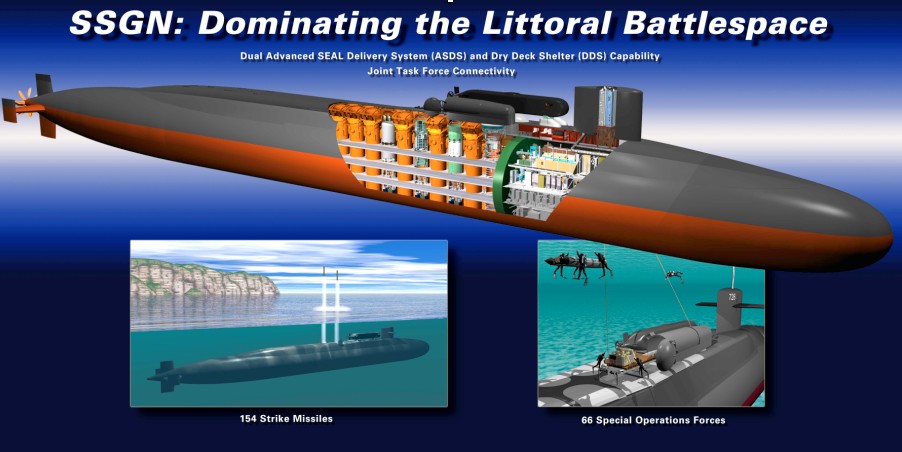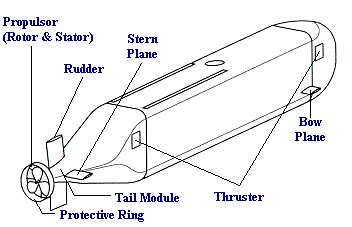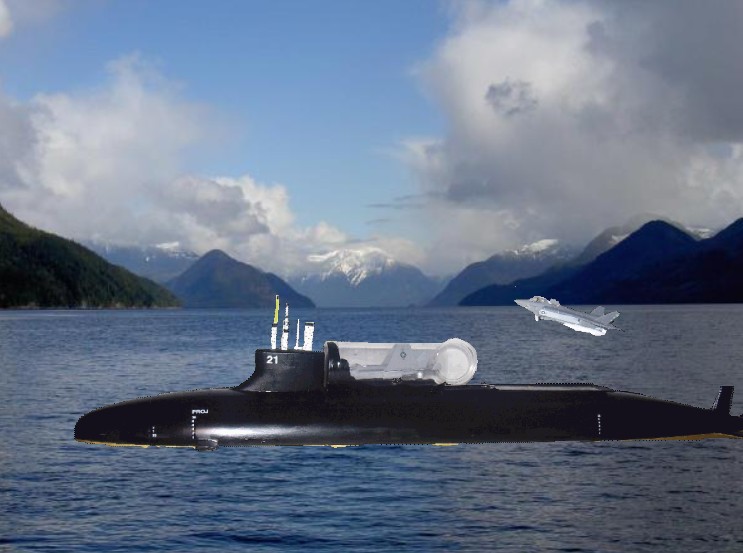
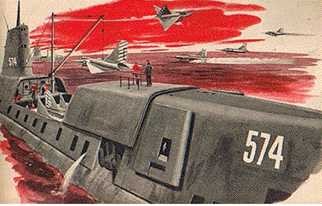
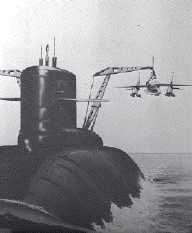
FROM THE PAST:

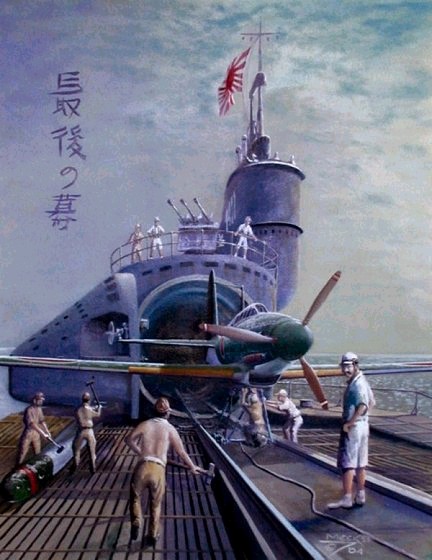

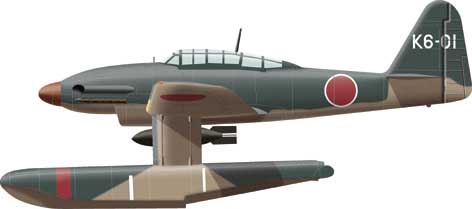
"It is with the submarine that the initiative and full freedom of the seas rests. The aircraft carrier, whatever realistic scenario of action is drawn--that of operations in great waters or of amphibious support close to shore--will be exposed to a wider range of threat than the submarine must face. In a shoreward context it risks attack not only by carrier-borne but also by land-based aircraft, land-based missiles and the submarine itself.... The era of the submarine as the predominant weapon of power at sea must therefore be recognized as having begun."
--John Keegen
Various forecasters and historians have attempted to predict the future of maritime warfare in light of the challenges posed by modern anti-shipping technology and weaponry. Many historians and war futurists have boldly ventured that the future of naval warfare rests with submarines particularly Andrew Krepenevich who created the USN's cruise missile-special operations submarines. This view, a vision of a future populated by "new navies of submarine warships, great and small," is also promulgated to some degree by defense analyst Michael G. Vickers, who envisions advanced nations employing largely submersible navies, including submersible fleet replenishment ships, maritime pre-positioning ships, and assault landing submarines, as well as the traditional attack submarine. But, in Vickers' scenario, complementing these vessels would be a new class of nuclear powered "arsenal ships," incorporating anti-radar "stealth" technology, armed with up to 500 missile launch tubes, lasers, electromagnetic rail guns firing 5-inch projectiles (perhaps as many as 200,000 per ship), and sophisticated unmanned air vehicles to conduct maritime reconnaissance.
It is likely that some portions of both of these visions will indeed become true. It is often missed that the submarine itself has been a projector of forms of air power, and that virtually all major nations have, at one time or another, experimented with "operating aircraft from submarines". The French, in the years prior to the Second World War, produced a series of small, submarine-launched floatplanes designed by Marcel Besson to be carried and flown by a large "submarine cruiser," the Surcouf.


Indeed, in the Second World War, a small Yokosuka E-14Y1 [Glenn] scouting floatplane launched from the Japanese submarine I-7 conducted a reconnaissance flight over Pearl Harbor after the attack to assess damage. Later, off Oregon, the I-25 launched another E-14Y1 that, in two attacks, dropped four phosphorous bombs triggering small forest fires; other Japanese submarines used these airplanes to conduct reconnaissance flights over the Aleutians, Australia, New Zealand, Madagascar, and Africa. Japan had even more ambitious plans to bomb the Panama Canal with larger Aichi Seran M-6A1 attack planes launched from the huge (for their day) I-400 class submarines, as well as other I-boats. The end of the Second World War likewise brought an end to actual attempts to build submarine-launched airplanes, but marked the beginning of efforts to incorporate both cruise and ballistic missiles in the armament suites of newer submarines. As a result, the international submarine community fully embraced the missile revolution, starting with early generation cruise missiles (typified by the American experience with the Republic Loon and the Chance Vought Regulus I and II), next with nuclear-armed ballistic missiles (exemplified by the Polaris, Poseidon, and Trident), and finally with nuclear and conventionally armed advanced cruise missiles (such as the Harpoon and Tomahawk). It is virtually a certainty that, at some point, submarines will serve as launching platforms for sophisticated unmanned air vehicles. For that matter, it is not inconceivable that submarines might some day operate specialized piloted craft as well. To better understand the history of submarine aircraft carriers, you have to start with the Japanese who pioneered this form of military power.
Japanese geared to fight Soviets on land not Americans at sea, Emily patrol seaplane bomber not mass-produced, submarine aircraft carriers slow development
Gibralter, Panama?

The sad truth is the current U.S. Navy and marines geared towards fighting a Soviet "blue water" Navy and Army that doesn't exist and doing ego-gratifying WW2 beach assaults to take advance naval base partial re-enactments are not doing much of anything to help win the 4th Generation War against sub-national al Queda terrorists. Some criticize hindsight as "20-20" implying we have no right to learn from history, well we damn well better or we will "BE HISTORY". Ironically the Navy/mc are in the reverse situation the Japanese were in WWII; they think they should be geared to fight at sea (the Imperial Japanese Navy-IJN or AKA: the Japanese Combined Fleet) and take advanced naval bases against a mythical nation-state foe in lieu of fighting an inland foe, which to do well means no foot-slogging from wheeled trucks. This is because the Navy/mc are still organized in a knee-jerk fashion against the Japanese surprise aircraft carrier and submarine attacks at Pearl Harbor and island conquests across the Pacific. After WWII, the Soviet communist threat was exchanged for the Japanese to perpetuate the bad, do-only-what-strokes-our-ego WW2 re-enactment force structure. We did say BAD; because the good aspects of the WWII effort; seaplanes, raiders, dazzle paint etc., a spirit of innovation were shit-canned by the U.S. Navy/marines in favor of a stale, pale gray ww2 re-enactment orthodoxy that makes the stodgy Royal Navy look like radical reformers.

Fortunately for us, the Japanese were geared primarily to fight the Russians and Chinese on land when they unwisely attacked us at Pearl Harbor to cover their conquests of the rest of mainland China and the East Indies to get badly needed oil supplies. They had not mass-produced Emily 4-engined flying boats, patrol submarines and only had a slight advantage in aircraft carriers. Admiral Yamamoto was obsessed with destroying our fleet in glorious battle even more than our own Admiral Nimitz; his submarines were used to recon ahead for the IJN instead of sinking our troop and supply ships. The IJN though they had THE BEST SEAPLANES of the war, overlooked supplying a seaplane to their cargo ships to ward off our submarines, which is what actually defeated them; we starved their ground troops out by MacArthur's "tri-phibious" warfare that bypassed strongpoints like Rabaul and let them wither on the vine. So even if Yamamoto and Nimitz got to duel each other's capital ships to the death, it would not have mattered since it was WHO CONTROLLED THE LAND ISLANDS that counted...and that takes supplies and if you don't stop the enemy's submarines with ASW you lose. Next, for some strange providential reason, they did not block the Panama canal to stop us from quickly moving forces from the Atlantic to Pacific oceans (or vise-a-versa) as the Germans strangely did not take the Straits of Gibraltar to block the Mediterranean sea. At the end of WW2 they were getting ready to strike the locks of the Panama canal with I-400 submarines launching Aichi Seran seaplane fighter-bombers. The videos below detail this near disaster that we averted by the war ending before the Japanese I-400 submarine aircraft carriers could reach Panama.
THE JAPANESE 1945 SUBMARINE-SEAPLANE FIGHTER-BOMBER RAID ON THE PANAMA CANAL
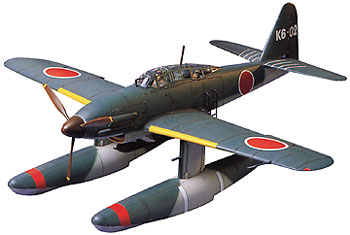

Rare Combat Footage, Stills and CGI animation of the raid
 www.youtube.com/watch?v=12u-ppn_Q3M
www.youtube.com/watch?v=12u-ppn_Q3M
CGI animation of the Aichi Seran Seaplane fighter-bomber launching from an I-400 class submarine aircraft carrier
 japaneseAICHISERANlaunchfromsubmarineaircraftcarrier.wmv
japaneseAICHISERANlaunchfromsubmarineaircraftcarrier.wmv
FULL-LENGTH DOCUMENTARY VIDEO PART 1
 (In Japanese)
www.youtube.com/watch?v=fCPizDLIiek&mode=related&search=
(In Japanese)
www.youtube.com/watch?v=fCPizDLIiek&mode=related&search=
FULL-LENGTH VIDEO PART 2
 www.youtube.com/watch?v=znhmWkGZMc4&mode=related&search=
www.youtube.com/watch?v=znhmWkGZMc4&mode=related&search=
 www.youtube.com/watch?v=KdytwjZXt_Q
www.youtube.com/watch?v=KdytwjZXt_Q
Then of course, there is the Suez Canal that was not taken, either. The point is that had Japan waited and built up her Navy instead of attacking at Pearl Harbor in 1941, and perhaps just taken the oil fields, America probably would have slept a lot longer before joining the war. After Pearl Harbor, Hitler as Japan's ally declared war on the U.S. Conspiracy theorists are right to suggest FDR used poorly defended Pearl Harbor as "bait" to get the Japanese to pre-maturely attack us and get Germany to declare war on us. We must remember Japan's mortal enemy, Russia (Soviet Union) did NOT declare war against her until the war was almost over in 1945.
Think about it.
Had Pearl Harbor NOT happened in 1941, its likely America would not have joined the war until late 1942 and then against Germany after pushed into it by some incident like U-Boats (German submarines) sinking a surface ship with a lot of Americans killed (like the WWI Luisitania incident). We would have proceeded to defeat Germany until 1946-47 while ignoring Japan just as Russia had done. THEN--all the imperial hotheads in Japan would still be around and their fleets ready with carriers, submarines and long-range seaplane patrol bombers and army rested and ready for a hard fight. The second PHASE of WWII could have lasted another 5 years from 1947-1955, and WHO SAYS WE WOULD HAVE WON? It may have unfolded that we turned to the threat of or actual atomic bombardment of Japan after 1947. Had the Japanese sued for peace with her military machine matured and imperial hotheads still in power we might have went into a "Cold War" three-way superpower rivalry of the West vs. the Soviets vs. the Japanese East. Would Coca Cola and blue jeans appealing to the younger generation have brought down the Japanese WWII era hotheads as they grew old or would killing them off still be required? Japan not humbled by WWII could have been in the same situation as Red China is today.
The Past is Prologue
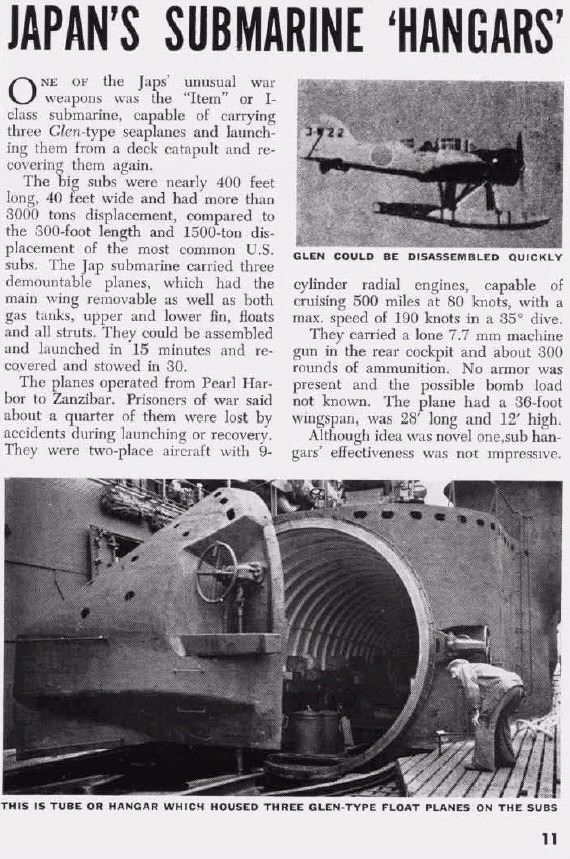

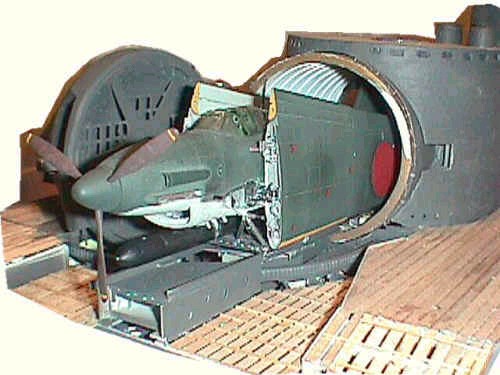
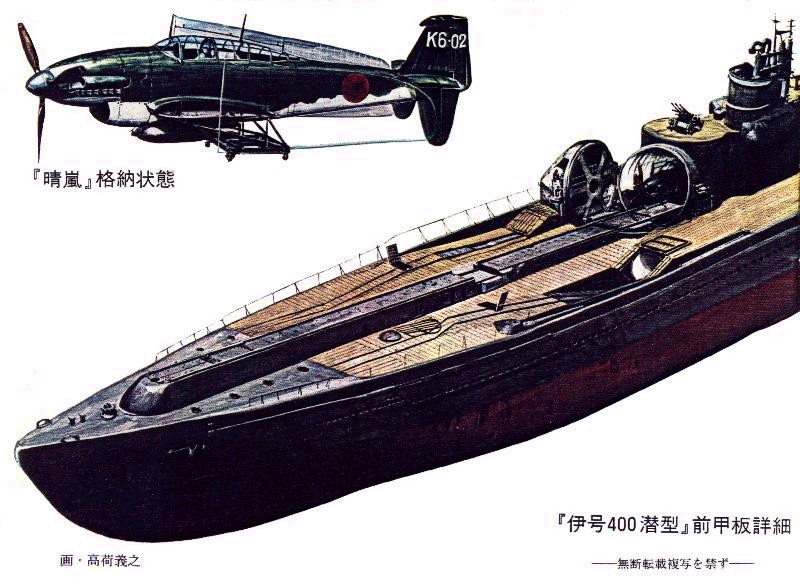
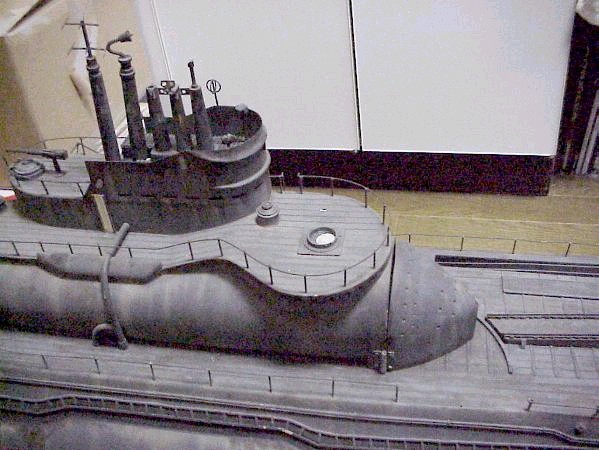


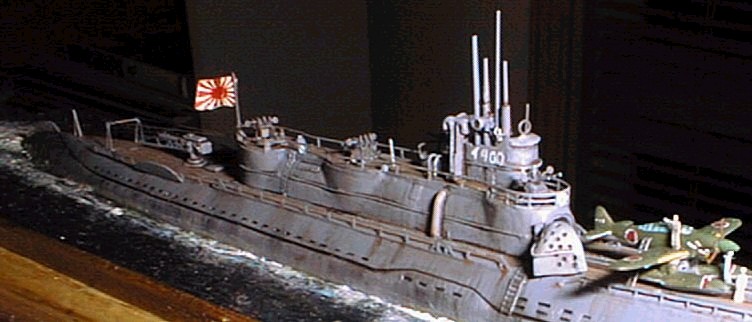

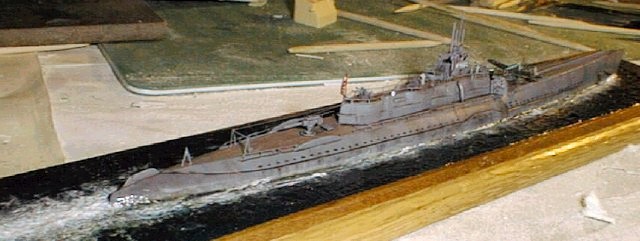
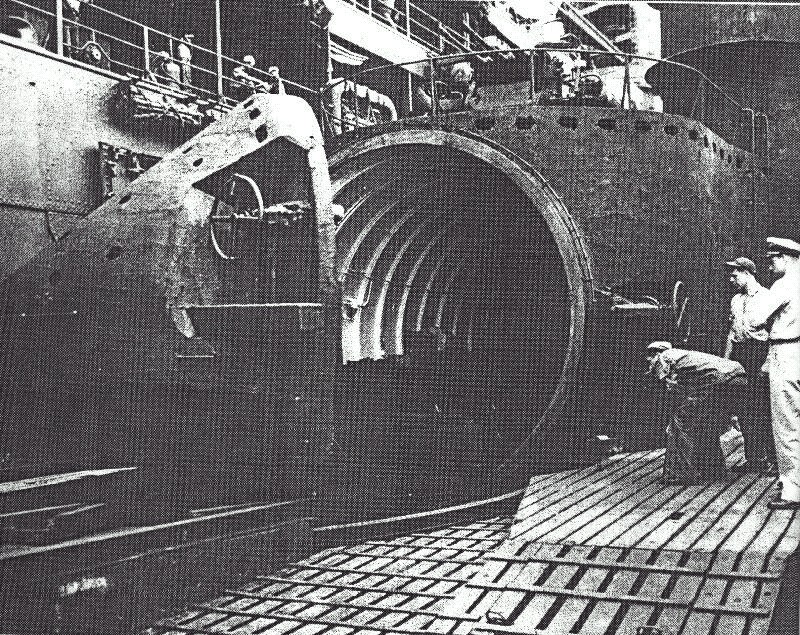

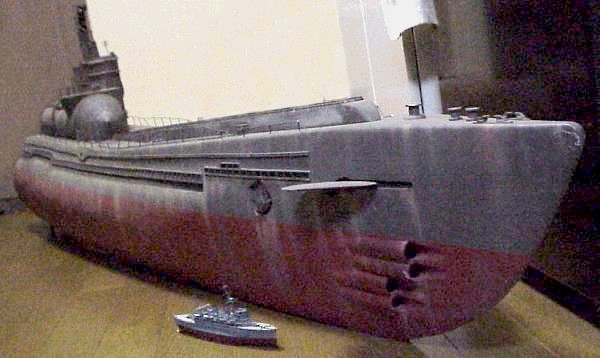
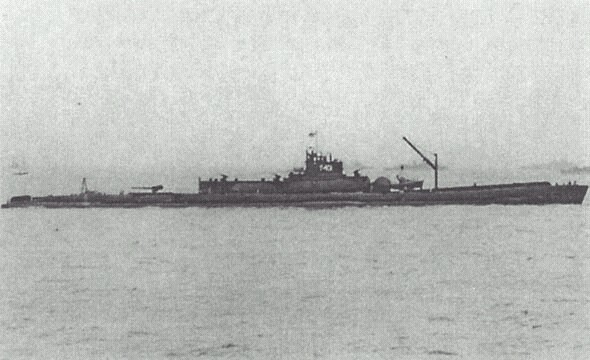
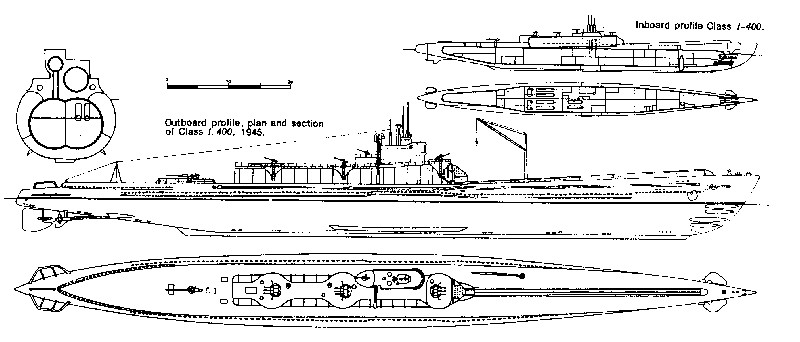
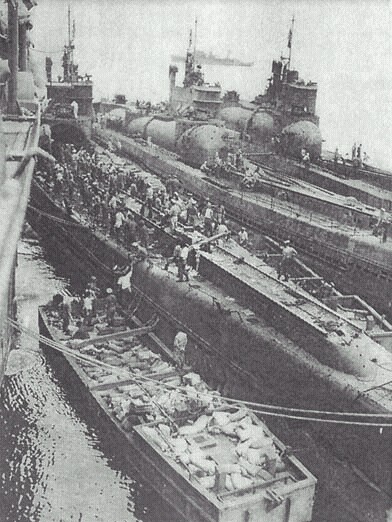

The point of all of this is the smug, self-serving dismissals of the current generation to the methods the Japanese took in the war they were not fully ready to fight are wrong spirited and wrong in fact. You can see this American "Midway Myth" surface aircraft carrier triumphalism began immediately after WW2 by their condescending remarks about the Japanese submarine aircraft carriers showing an idea we Americans didn't think of (see NANEWS article above). The first thing America did after Pearl Harbor was to send out all her long-range Gato class patrol submarines to sink every supply ship in sight to starve/isolate the Japanese islands. Many military professionals and historians note it was our submarines not our aircraft carriers that starved the Japanese into submission. Many a Japanese Army ground offensive withered more due to a lack of supplies than low-grade marine corps fighting skills. Flying overhead were 4,000 PBY Catalina seaplane patrol bombers searching out for their supply and warships to destroy them and vector in our submarines like the Germans used the FW200 Condor except most of our patrol planes were more versatile and could land on the sea. Unlike the clever Churchill, the Japanese were unable to put together adequate convoy defenses and point air defense fighters like the Hurricat into service to defeat our PBYs. This is weird because they had arguably the best fighter floatplanes of the war (Rufe, Rex) and simply could have put one on each merchant ship to ward off both U.S. submarines and planes. The U.S. Navy/mc on the other hand, reacted to the Japanese Navy's set-up and created a force structure to gobble up islands with frontal marine beach assaults covered by aircraft carriers and battleship/cruiser bombardment to one-land-chunk-at-a-time keep the Japanese Navy away by Seabee-constructed air base air power. This WW2 island-hopping force structure is still somewhat with us today with a Navy with 11 huge aircraft carriers and a marine corps still packing men by the thousands in amphibious ships to do WW2 re-enactment beach assaults to take islands from a nation-state enemy that doesn't exist. Even worse, the enemy is now sub-national and fights far inland shielded from predictable air strikes by difficult terrain, civil populations and C3D2, which requires force be applied against land not sea-based targets. Dollar-for-dollar the best way to bombard land by airplanes is by heavy bombers which are best land based or seaplanes that can operate with just tender resupply ships not aircraft carriers. However, the corrupt Navy/mc bureaucracy gave up on seaplanes in 1960 just as they had matured into performance capabilities superior to land based planes because they realized they can soak up more billions of tax dollars operating aircraft carriers than more efficiently bombarding land foes with jet seaplanes and Iowa class battleships. "Cash cow" platforms for bureaucracy empires today are more important than functional efficiency in wars that may never happen tomorrow. The Navy/mc has consciously chosen to relive the WWII "Victory at Sea" fantasy ever since. Had the Japanese won WWII by delaying until they were fully ready we would be emulating their innovations like long-range patrol seaplane bombers and submarine aircraft carriers not what we defaulted to in a knee-jerk of WW2 expediency.
Where is the surprise against nation-state enemy Surveillance Strike Complexes?
SSCs: surface ships are finished unless stealthy; large aircraft carriers sitting ducks from space
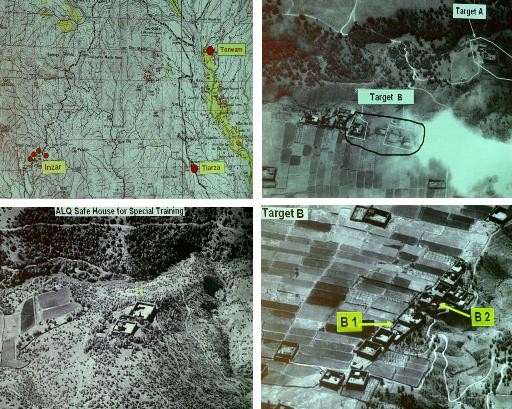
Because we had command-of-the-air after the battle of Midway in 1942 when we sank the majority of the Japanese large aircraft carriers, the Navy/mc have gotten into the very bad habit of operating openly on the surface. At war's end off the shore of Okinawa, Japanese humans acted as precision guidance means and attacked our fleet with the first all-out guided missile attacks. Had the war continued and the Japanese improved the speed and number of these kamikaze guided missiles, the entire viability of the large aircraft carrier and packing marines like sardines in amphibious ships would have been put into question in 1946. The Geiger board warned the USMC to get out of the habit of massing troops by the thousands in vulnerable surface ships and to use seaplanes citing the threat of nuclear weapons which could easily wipe out entire fleets. Today the precision-guided missile and torpedo can render the same fleet-annihilating effects but the Navy/Mc continue to operate like its a WW2 cake-walk. Instead of thinking ahead and adapting to nuclear and guided weapons and submerging or heavily armoring ALL ships, the Navy's carriers and flimsy cruisers/destroyers have emasculated themselves because they have had a free ride of geostrategic peace where they could launch planes from garbage scows if they wanted to; no one was actively attacking them at sea. This day is coming to a close.
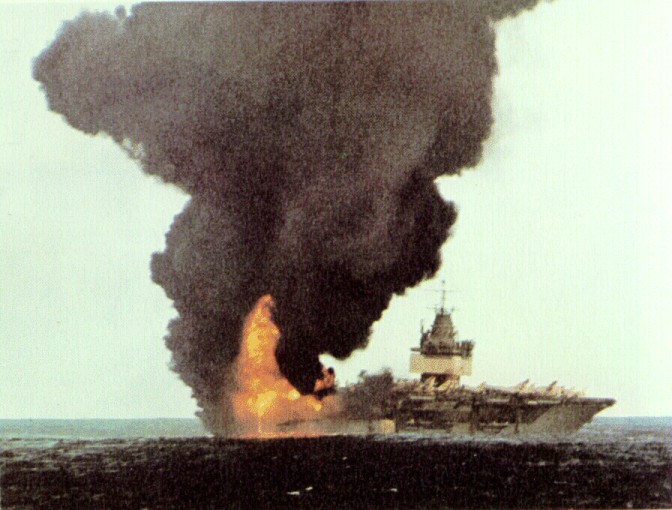
If the Navy has to defend Taiwan from nearby Red China it will be conspicuously visible from space and targeted in their "surveillance strike complex" (SSC). Hubrists within the Navy beating their chest about how superior they think our pilots/aircraft are don't get it: a F/A-18 with 8 missiles isn't going to win a fight against a lesser 9th CHICOM fighter whose missile is "good enough" to hit it or make it run for the home aircraft carrier. If the CHICOM second wave follows the empty F/A-18 back to the carrier the explosions/fires on the USS Forrestal and Enterprise in the Vietnam war warn us that all it takes is one hit and the carrier's flight operations are over and a fight to simply survive is all that's left.
If you doubt how screwed up the large aircraft-carrier-centric U.S. Navy is, here's an early version of the Thompson report:
Is the U.S. Navy Overrated?
www.knightsbridgeuniversity.com/documents/Is%20the%20US.%20Navy%20overrated.pdf.
A Knightsbridge Working Paper
By Roger Thompson
Professor of Military Studies and Senior Academic Advisor
Knightsbridge University
May 2004
Introduction
In 1981, The NATO exercise Ocean Venture ended with much embarrassment for the U.S. Navy, and more specifically, its enormously expensive aircraft carrier battle groups.
During the exercise, a Canadian submarine slipped quietly through a carrier's destroyer screen, and conducted a devastating simulated torpedo attack on the ship. The submarine was never detected, and when the exercise umpire, a U.S. Navy officer, pronounced the carrier dead, his official report was promptly stamped classified to minimize the potential fallout. Unfortunately, a Canadian submariner leaked the story to a local newspaper, and indicated that this successful Canadian attack on an American supercarrier was by no means an isolated incident. This news caused quite a stir in Congress, and the U.S. Navy had a lot of explaining to do. Why indeed had a small, 1960s-vintage diesel submarine of the under-funded Canadian Navy been able to defeat one of America s most powerful and expensive warships, and with such apparent ease?
There are several possible answers. Firstly, Canadian submariners are extremely well-trained and professional. Secondly, at that time, the Oberon submarines used by the Canadian Navy were probably the quietest in the world. A third possible reason, not so commonly stated, and with all due respect, is that the mighty U.S. Navy is simply over-rated. It is my humble contention that the U.S. Navy is not all it's cracked up to be, and that is the focus of the present article.
Diesel Subs Feast on U.S. Carriers
While Canadian submarines have routinely taken on U.S. Navy carriers, other small navies have enjoyed similar victories. The Royal Netherlands Navy, with its small force of extremely quiet diesel submarines, has made the U.S. Navy eat the proverbial slice of humble pie on more than one occasion. In 1989, naval analyst Norman Polmar wrote in Naval Forces that during NATO s exercise Northern Star, the Dutch submarine Zwaardvis was the only orange (enemy) submarine to successfully stalk and sink a blue (allied) aircraft carrier Ten years later, there were reports that the Dutch submarine Walrus had been even more successful in the exercise JTFEX/TMDI99.
During this exercise the Walrus penetrates the U.S. screen and sinks many ships, including the U.S. aircraft carrier Theodore Roosevelt CVN-71. The submarine launches two attacks and manages to sneak away. To celebrate the sinking the crew designed a special T-shirt. Fittingly, the T-shirt depicted the USS Theodore Roosevelt impaled on the tusks of a walrus. It was also reported that the Walrus also sank many of the Roosevelt's escorts, including the nuclear submarine USS Boise, a cruiser, several destroyers and frigates, plus the command ship USS Mount Whitney. The Walrus herself survived the exercise with no damage.
Not to be outdone by the Canadians and Dutch, the Australian submarine force has also scored many goals against U.S. Navy carriers and nuclear submarines. On September 24 2003, the Australian newspaper The Age disclosed that Australia's Collins class diesel submarines had taught the U.S. Navy a few lessons during multinational exercises. By the end of the exercises, Australian submarines had destroyed two U.S. Navy nuclear attack submarines and an aircraft carrier. According to the article: The Americans were wide-eyed, Commodore Deeks (Commander of the RAN Submarine Group) said. They realized that another navy knows how to operate submarines.
They went away very impressed.
Not surprisingly, NATO and allied submariners are extremely confident in their ability to sink American carriers. In his book The Threat: Inside the Soviet Military Machine, Andrew Cockburn wryly noted that European submariners on NATO exercises were far more concerned about colliding with noisy American nuclear submarines (running fast and therefore, blind) than about being attacked by American ships.
The Russians mug the USS Kitty Hawk
These examples provide ample evidence of the vulnerability of U.S. Navy carrier battle groups to attacks from diesel submarines, but of course there are other ways to sink a carrier, as the Russian Air Force knows well. In October 2000, the aircraft carrier USS Kitty Hawk was mugged by Russian SU-24 and Su-27 aircraft, which were not detected until they were virtually on top of the carrier. The Russian aircraft buzzed the carrier s flight deck and caught the ship completely unprepared. To add insult to injury, the Russians took very detailed photos of the Kitty Hawk's flight deck, and very courteously, provided the pictures to the American CO via e-mail. In the December 7, 2000 edition of WorldNetDaily, Jon E. Dougherty said that the Russian photographs made it clear that there was panic aboard the Kitty Hawk. As one U.S. Sailor quipped, The entire crew watched overhead as the Russians made a mockery of our feeble attempt of intercepting them.
Russia's air force is now only a faint shadow of what it once was, but even now, they can demonstrate that they can, if necessary, do significant damage to the U.S. Navy. It's little wonder then that a Russian newspaper gloated that If these had been planes on a war mission, the aircraft carrier would definitely have been sunk. Perhaps they are right. But its not just the Russians, Canadians, Dutch and Australians who think the U.S. Navy s carrier battle groups are over-rated, expensive and extremely vulnerable. Admiral Hyman Rickover himself didn t think much of the American carrier-centered Navy, either. When asked in 1982 about how long the American carriers would survive in an actual war, he curtly replied that they would be finished in approximately 48 hours.
This isn't Top Gun
As we ve seen, U.S. carriers are remarkably vulnerable to attacks by submarines and aircraft, but what about the much-vaunted American naval aviators? How would the U.S.N. pilots fare in a dogfight with a well-trained enemy? The evidence is not encouraging. Canadian pilots routinely outperform U.S.N. aircrews in exercises, and have done so for many years. During the days of RCN carrier aviation it was well known that H.M.C.S. Bonaventure could put more planes in the air than much larger U.S.N. carriers. In the early 1980s it was revealed that the average pilot in the Canadian Air Force flew about 300 hours a year, whereas his U.S. Navy counterpart flew only about 160 hours annually. Even in this day of advanced flight simulators, there is still no substitute for the real thing (flying).
U.S. Naval aviators pride themselves as being supposedly far better than any Air Force pilots, but one merely has to look at the Canadian, Israeli and Chilean air forces to cast doubt on that assumption. The Israeli Air Force has bested the pride of the U.S. Navy, and they have done so even with less capable aircraft. A joint U.S.N.-I.A.F. air combat exercise in 2000 underlines and highlights the thesis that the U.S. Navy is overrated. On September 14, 2000, The Jerusalem Post announced that the Israelis soundly dispatched the air wing from the USS Theodore Roosevelt (which, incidentally, was the same carrier the Dutch destroyed in 1999). Israeli F-16s squared off against American F-14s and F-18s, both of which are said to be more capable than the F-16. The final results were astonishing. The Israelis shot down a whopping 220 U.S. aircraft while losing only 20 themselves. The 10:1 kill ratio was so embarrassing that the results were not officially published to save the reputations of the U.S. Navy pilots.
Chile is certainly not a great military power, but its air force is well trained, and they too have given the U.S. Navy reason for pause. In the late 1980s, it was reported that Chilean Air Force pilots, flying the relatively unsophisticated but nimble F-5, had trounced an American carrier air group in air combat exercises. Like the Israelis, the kill ratio was 10:1 in favor of the Chileans. As usual, this incident did not receive much press coverage in the United States.
Lack of Training
Despite its vastly superior numbers, resources and weapons, the U.S. Navy, the world's only true heavyweight navy, continually fails to vanquish welterweight and lightweight naval powers. This would indicate that training, not big, expensive ships, is the key to naval power. It is training, or lack thereof, that truly undermines the performance of the U.S. Navy. For example, even though the U.S. Navy maintains the most capable submarine fleet in the world (because the Russian fleet is mostly tied up at dockside), their submariners do not currently receive escape training. The Canadian submarine force is tiny, and yet it has the most advanced submarine escape training facility in the world.
The U.S. Navy boasts that its Blue Angels flight team is the world s best, but with their preference for high speed maneuvering over aerobatic artistry, combined with the team's grossly inflated number of maintenance technicians, one has to wonder. The Blue Angels perform with only six F-18 jets, whereas the Canadian Snowbirds fly nine Tutors, which are much older. The Canadian team flies more airplanes, but has a much smaller maintenance team. The Blue Angels have approximately 100 technicians, but the Snowbirds have only about ten.
American technicians are very specialized, and as a result they need lots of them to do the same job that just one Canadian technician can do. This does not sound like an efficient or cost-effective arrangement, to say the least. Through his many best-selling books and movies, author Tom Clancy has created a crisp, sharp, spit-polished, efficient, and patriotic image for the U.S. Navy. Some think he should be a paid Public Relations consultant or recruiter for the U.S. submarine force. It may come as a shock to some of his readers, however, that the American Sailors in his books are too good to be true, and that even some American submariners admit their training is not very good. Several recent books have effectively stripped off much of the shiny Hollywood polish on the American submarine force, most notably Petty Officer Andrew Karam's account of life on the USS Plunger, Rig Ship for Ultra Quiet (2002), and Douglas C. Waller's Big Red (2001). Both authors (Karam served on the submarine USS Plunger) said that there is a lot of hype regarding U.S. submarine training, but the reality is much less impressive. As for the legendary assertion that all U.S. submariners are experts on every system in their boats, one Sailor told Waller that was all bunk. Waller explained that The (submariner's) qualification only made you familiar with the rest of the boat. It didn't mean you could actually run other parts. If (the Sailor) and the other missile techs suddenly died, those nukes in the back wouldn't have a clue how to fire these rockets. Petty Officer Karam, an Engineering Laboratory Technician, concurred, and acknowledged that he could only work on other systems in a pinch. He continued the Plunger, and, for that matter, any nuke boat, was sufficiently complex that one person simply could not learn everything to that level of detail in the 14 months we were given to qualify. Not if they were doing their own jobs, too.
British allies, of course, have long ridiculed American submariners for spending too much time and effort learning about nuclear reactors. Surprisingly, Waller wrote that some U.S. Navy officers quietly agree. The Drill Coordinator on the USS Nebraska, Lieutenant Brent Kinman, told Waller that American submariners talk too much about the reactor, like mechanics, and not enough about how to fight the ship effectively: That was the problem with today's submariners, Kinman thought. They were technicians rather than warriors. The average lieutenant riding these boats considered himself a nuclear engineer first and a submarine officer second. It almost feels like we re out there just driving the reactor around. This overemphasis on engineering might explain why diesel submarines are so often triumphant against U.S.N. nuclear submarines during exercises.
Conclusion
The U.S. Navy is the largest navy in the world, and on paper, certainly the most powerful. Of that there is no doubt. With the Russian Navy all but gone, the American navy remains the dominant sea power in the world. Yet, as we have seen here, this heavyweight navy often has great difficulty handling the little guys. Indeed, if the U.S. Navy were a boxer, one might say that his dominance is due mostly to his sheer size because he punches well below his massive weight. In this era of asymmetrical warfare, of David versus Goliath conflicts, perhaps it is time for America to rethink its naval strategy, lose some weight, and as sports announcers say, focus more on the fundamentals.
For all the money America spends on its huge navy, it really needs to be much better.
The Author
Roger Thompson is Professor of Military Studies at Knightsbridge University and a Fellow of the Inter-University Seminar on Armed Forces and Society. His book Brown Shoes, Black Shoes, and Felt Slippers: Parochialism and the Evolution of the Post-War U.S. Navy was published in 1995
References
Periodicals (print and online) Collins Subs Star in Naval Exercises, The Age (online version). 24 September 2003.
This article can be viewed at:
www.theage.com.au/articles/2003/09/23/1064082993693.html?from=storyrhs
U.S. Pacific Fleet No Match for the Russian Air Force, Discerning the Times Digest and Newsbytes. November 2000.
This article can be viewed at: www.discerningtoday.org/members/Digest/2000Digest/November/u.s._fleet_no_match _for_russian_airforce.htm
Dougherty, Jon E. Russian flyover takes Navy by Surprise, WorldNetDaily. December 7, 2000.
This article can be viewed at: www.worldnetdaily.com/news/article.asp?ARTICLE_ID=15625
O Sullivan, Arieh. Report: IAF Whips U.S. Pilots in Exercise, The Jerusalem Post (online version). September 24, 1999.
This article can be viewed at: www.jpost.com/com/Archive/24.Sep.1999/News/Article-3.html
Books
Cockburn, Andrew. The Threat: Inside the Soviet Military Machine. (New York: Vintage Books, 1984.) Pp. 397-438.
Karam, Andrew. Rig Ship for Ultra-Quiet. (Sydney: Sid Harta Publishers, 2002). Pp. 192-193.
Waller, Douglas C. Big Red: The Three Month Voyage of a Trident Nuclear Submarine. (New York: Harper Torch, 2001). Pp. 87, 318,
Online Resource
www.dutchsubmarines.com
An excellent site maintained by Dutch submariners. It has extensive entries on Dutch successes against USN carriers and periscope photos as well.
Creating a U.S. Navy of Undersea and Armored Warriors---not Bureaucrats and Welfare Recipients-in-uniform in horizontal Buildings that Float
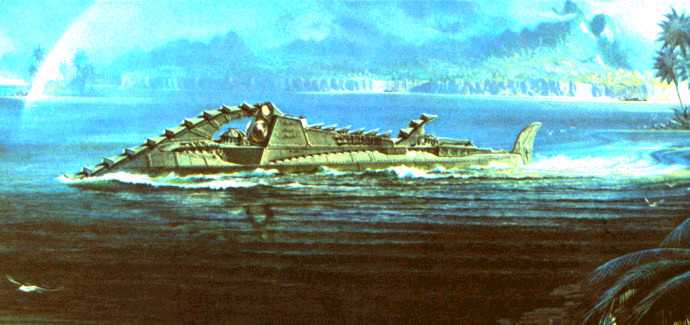
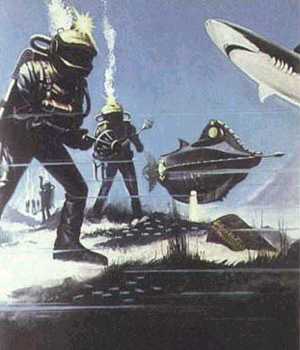
We need to create a HEAVILY ARMORED, extremely FAST, low-profile, well-camouflaged Civil-War style "blockade runner" ship (BRS) that would NOT have complex electronics but would be a training ship for ALL Navy personnel to "know what RIGHT looks like" via a short training cruise to "earn" surface warrior rating. A sort of at-sea armored M113 Gavin, but for the Navy. Thus, for at least 1 period of time, the Sailor would know what a FIGHTING ship and a FIGHTING crew would and should be like; setting the PHYSICAL standard that the larger, cluttered with electronics and bureaucracy ships need to address.
Training BRS crews would:
a. Defend selves from simulated port attacks with infantry weapons and ship guns
b. Attack pirates at sea and board their vessels
c. Launch/recover SEALs
d. Perform actual firefighting and damage control to save the ship
e. Actually go into the water and have to swim selves to shore and survive using SERE techniques, taking along their weapons and survival gear
f. Fight off a simulated enemy ground force using infantry weapons
g. Simulate torpedo attacks on larger enemy vessels
Operational BRS ships would be obtained to replace the failed under 1, 000 ton Patrol Coastal (PC) class of ships as NAVSPECWAR insertion/extraction means as the "low" end to the planned 3, 000 ton Littoral Combat Ship (LCS) which would be the "high" end of a high-low naval force mix. Sort of realizing their error (post 9/11 all the action is taking place fighting sub-national terrorists), USN as "Indian givers" now want the PCs back, but this still doesn't solve the draft of the ship preventing them from getting close enough to insert/extract SEALs in small boats. The LCS at 3, 000 tons is probably going to be even more limited at closing on shores than the PCs, so a smaller "low" end ship is needed, hence the BRS.
www.nationaldefensemagazine.org/issues/2006/June/NavysSmallest.htm
June 2006Navy's Smallest Fighting Ships Prove Littoral Warfare Concepts
By David Axe
LITTLE CREEK NAVAL AMPHIBIOUS BASE, Va. - The Navy's smallest fighting ships - Cyclone-class patrol boats - are blazing the way for a future fleet of littoral combat ships.
Little Creek is slated to receive as many as 22 LCSs in coming decades, according to base spokesman Scott Mohr. But until the LCS ships arrive, these 180-foot vessels may be one of the Navy's most useful assets for littoral warfare, officials say.
Fourteen Cyclone-class boats, known to sailors as PCs, were commissioned beginning in the early 1990s to support the special warfare community. The PCs proved to be too big for special operations in very shallow water, so the Navy began to dispose of them.
It donated one to the Philippines and transferred five to the Coast Guard, which has used them for maritime law enforcement. The remaining eight ships were slated for disposal when the war on terrorism intervened and, simultaneously, the Navy began to take littoral or "green water" operations more seriously.
In the aftermath of the 2003 invasion of Iraq, the Navy found itself tasked with protecting the country's two offshore oil terminals in the shallow waters of the northern Arabian Gulf. Large warships drew too deeply to get in close to the platforms, but the patrol boats, with only eight feet of draft, were just right.
In 2003, the Navy deployed four PCs to the Gulf. This year, a fifth boat joined them.
Last year, recognizing the utility of these craft in green waters, the Navy halted all efforts to dispose of the remaining boats and even began negotiations with the Coast Guard to take back the transferred PCs. The Navy moved two West Coast-based boats to Little Creek, a move that consolidated all operations and training at the Virginia base. At any given time, three boats are at Little Creek for drydocking and training while the rest remain forward deployed.
Thirteen 30-person PC crews that are based at Little Creek fly out to the Fifth Fleet in the Persian Gulf, on six-month rotations.
Lt. Marisa McClure and Lt. Cmdr. Brent Devore, both PC skippers, say their boats are ideal for green-water operations. Their light tonnage, powerful propulsion plants and shallow draft mean they can move nimbly in crowded coastal waters. Recent modifications - including additional small-caliber weapons, such as machine guns and grenade launchers; a digital navigation system, and a stern ramp for launching and recovering small boats - have only increased the patrol boats' effectiveness in littoral missions.
"The Navy is starting to branch us out," says McClure, currently commanding Thunderbolt (PC-12), one of the training vessels at Little Creek. "Our main mission is with the Fifth Fleet. We are defending the oil platforms in the northern Arabian Gulf. But we do other missions in the Gulf as well, like maritime interdiction."
"Maritime interdiction," in Navy parlance, means boarding and searching vessels that are suspected of ties to terrorists or criminals. It's a staple of day-to-day naval operations and a huge growth business for the world's navies, especially in green waters. The shift towards maritime interdiction in shallow waters is one of the major factors in the LCS development.
In terms of missions and crew size, the PCs increasingly look and operate like "baby" LCSs.
The Navy in 2004 issued contracts to both Lockheed Martin and General Dynamics to build prototype LCS, each to their own design. Both designs emphasize modularity, maneuverability and shallow draft. Littoral combat ship hulls will accommodate a wide range of specialized modules tailored to missions such as anti-submarine warfare, surface warfare and mine warfare. While displacing around 3,000 tons, almost as much as an Oliver Hazard Perry-class frigate, LCS will be crewed by only 75 people, versus a Perry's 300.
Just 30 sailors serve aboard the 380-ton displacement PCs, which leaves little or no reserve in most tactical scenarios. "To put a [small] boat in the water takes the majority of my crew," McClure says.
LCS crews are tasked with even more diverse missions, and with twice as many sailors as a PC, perhaps face even greater personnel problems.
Devore, commanding Hurricane (PC-3), also a training vessel, says the sailors on his crew are already hybrid sailors. "On bigger ships, you'll have 30 people in each skill set," Devore says. "On a ship [the size of a PC], you have 30 people to do everything. That's hard."
"It's very senior," McClure says of her crew, "'mainly because they're asked to do a lot of things outside their ratings."
Thunderbolt Boatswain's Mate 1st Class Gary Jeter exemplifies this trend. Besides handling the PC's small boats, he also stands watch as an officer of the deck - a responsibility usually reserved for officers, of which a typical PC has only four. "I have, like, five other jobs besides officer of the deck and boatswain," Jeter says. "You've got to be flexible."
Having so many jobs means a lot more training than what a typical sailor might require. The PC community's rotation schedule - a six-month deployment every 16 months - leaves just enough time at Little Creek for schooling, under way exercises in the Chesapeake Bay and downtime for sailors, whose workloads are often greater than anything they've experienced before.
Devore says the small size of PC crews creates a family dynamic that helps sailors cope with the high stress level. Somewhat uniquely, a PC crew's morale does not seem to be tied to any particular hull. While on deployment, a crew will fall in on whatever Fifth-Fleet PC is available in theater. '[Crew-swapping] is the same as having a car at home and getting a rental car when you're traveling," Devore says. "The rental car's got a gas pedal and brakes just like the car back home. It just takes a little time to get used to the nuances."
The differences among the eight PCs are "very subtle," Devore adds.
The way the PC crews rotate onto forward-deployed boats is an outgrowth of the Navy's Sea Swap experiments that saw destroyer crews share hulls - and another preview of the way future hybrid sailors will man the LCS fleet.
The Navy's goal in swapping crews is to reduce the wear and tear that comes with repeated ocean crossings ... and to squeeze more operational utility out of fewer vessels by keeping them in the combat zone longer without overtaxing sailors.
The strategy appears to be working for the PC sailors. An eight-boat force with 13 crews has maintained five boats in the Arabian Gulf for three years.
Changes are looming for Little Creek's PC crews. McClure and Devore both speak of the day when the new Iraqi Navy assumes responsibility for the country's national waters, at which point the forward-deployed PCs will return home. When that happens, Devore says, he expects the Navy to exploit some of the boats' other strengths - namely, their similarity to the vessels operated by the world's small navies.
"The Gulf is far from being all we're capable of," Devore says. "The future of these boats is in international cooperation ... Navies in South America, the United Arab Emirates... they have a bunch of these 200-foot ships for coastal defense and combating piracy," Devore continues. "That's what we're suited to."
He says he expects Southern Command to request PC deployments for exercises and operations with friendly navies as soon as the boats become available.
LCS also will play a critical role in multinational missions, notes Chief of Naval Operations Adm. Mike Mullen, who in a speech at the Naval War College called for a '1,000-ship-navy' with vessels from all over the world operating together to keep the seas free from terrorists and criminals.
The BRS would have the following features:
a. Hanger & helicopter pad for 2 x NOTAR stealthy MD-900 helicopters or Centaur folding-wing seaplane
b. Rear ramp area to launch/recovery F470 Zodiac and RIB boats
c. Anti-Ship Missile and tethered Aerostat (blimp) to see over-the-horizon (OTH) with radar and FLIR for self-defense would be most complex electronic gadgetry on board
d. Mini-Shore bombardment means to lay smokescreen/explosive effects to help insert/extract SEALs
e. Amphibious Invasion smashing BRS variants would have submerged-fire autocannon, and ramming gear
f. Twin bow and aft torpedo tubes with 8 torpedoes each to be able to attack while moving towards and away from enemies
g. Multi-spectral smokescreen-laying capability using diesel engines
Near-Surface Attack
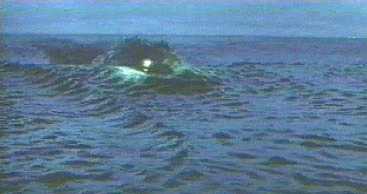
Scene from the 1954 Walt Disney classic; "20, 000 Leagues Under the Sea"
Jules Verne's prophesy of the Nautilus ramming and going under wooden ships to sink them in "20, 000 Leagues Under the Sea" is not yet fulfilled but is full of merit.
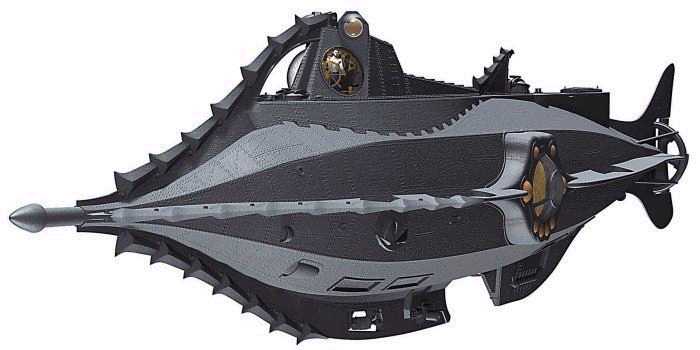
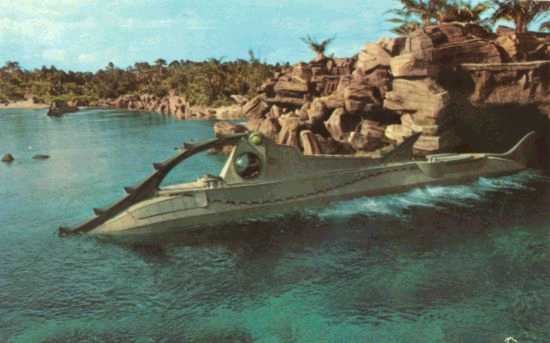
The Russians have been pondering a "dive boat" that would be essentially a surface warship but with a simple and inexpensive ability to sail under the water at a shallow depth.
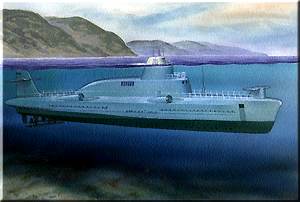
Drug Runners are now using semi-submersible boats to get by our detection means....
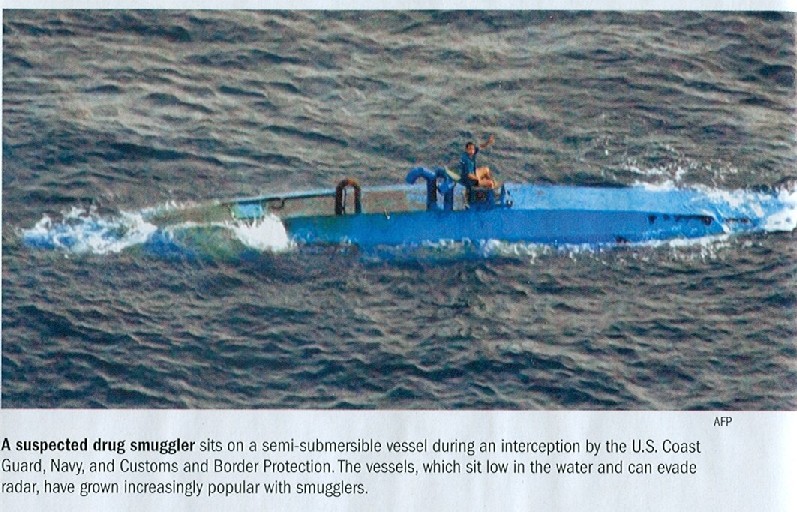
Such a near-surface attack exploits the surprise of a submarine while simplifying the weaponry to do the needed damage upon the enemy that could include cannons that need the air to operate. Torpedoes---essentially miniature submarines sent as sacrificial missiles to "ram" the enemy ship instead of the mother naval craft are expensive and limited in number that can be carried. If you have literally hundreds and thousands of small craft targets, say landing craft and amphibious tanks coming ashore you will be hard-pressed to sink them all with torpedoes as you would with aerial versions--missiles and guided bombs. The enemy invasion could win simply because he's got more numbers than you have munitions to hit him with.
The BRS Invasion smashing ship would look very much like Verne's Nautilus in that it can either attack from the near surface or shallow under surface. The BRS would have two automatic cannon turrets feeding from a very large supply of ammunition below deck that could fire while the majority of the ship is just below the surface. We know that gunfire as soon as it hits water goes limp and ineffective. The BRS USS Monitor II or Nautilus II class would be able to explode hundreds and even thousands of enemy landing craft by deliberately sailing into them after a sub-surface approach, then surfacing just enough for her autocannon turrets to fire.
Jules Verne, 1869
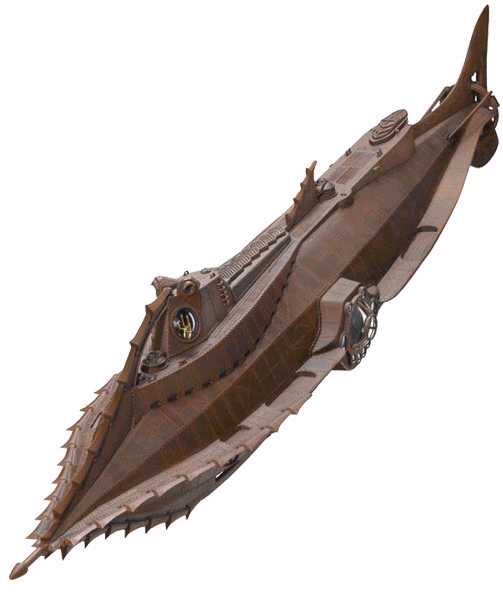
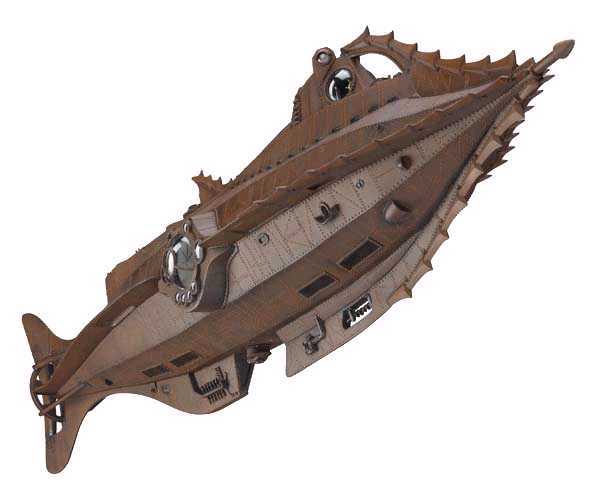
German U-Boats, 1939
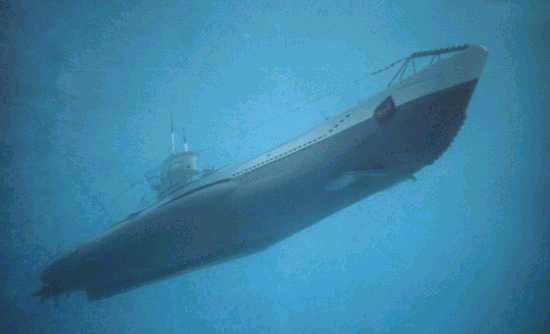
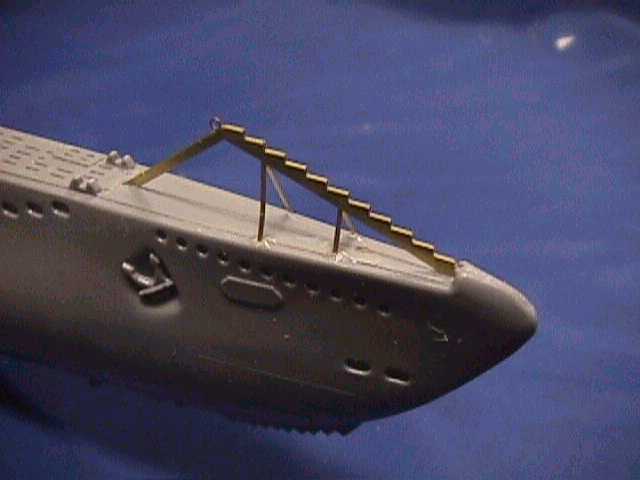
As the BRS force cuts a path through the enemy invasion craft, if they should collide with them they would have a spearpoint and ramming teeth overhead and under the bow like German U-Boats had in WW2 to cut through anti-submarine nets that would smash a landing craft in two. If large enemy surface ships and subs do attack the BRS, it could fire torpedoes at a safe stand-off to sink them or make them back off. After slicing through the invasion landing craft, the force could keep going and lay smoke to escape or turn back in and decimate the enemy's ranks again. Intermingled with enemy landing craft, the BRS force would be hard for the enemy to fire on without harming their own craft.
If I were the Taiwanese, I'd be building dozens of invasion-smashing armored BRS ships to wade into any CHICOM invasion and save the day like the Union gunboat USS Monitor did in 1863 when she turned away the confederate ironclad Merrimac at Hampton roads.
Aircraft Strike From the Beneath the Sea
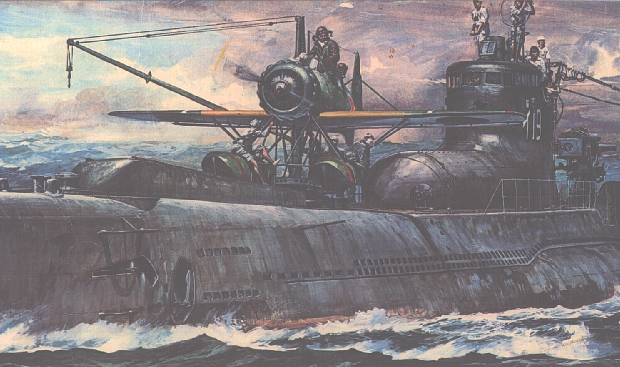
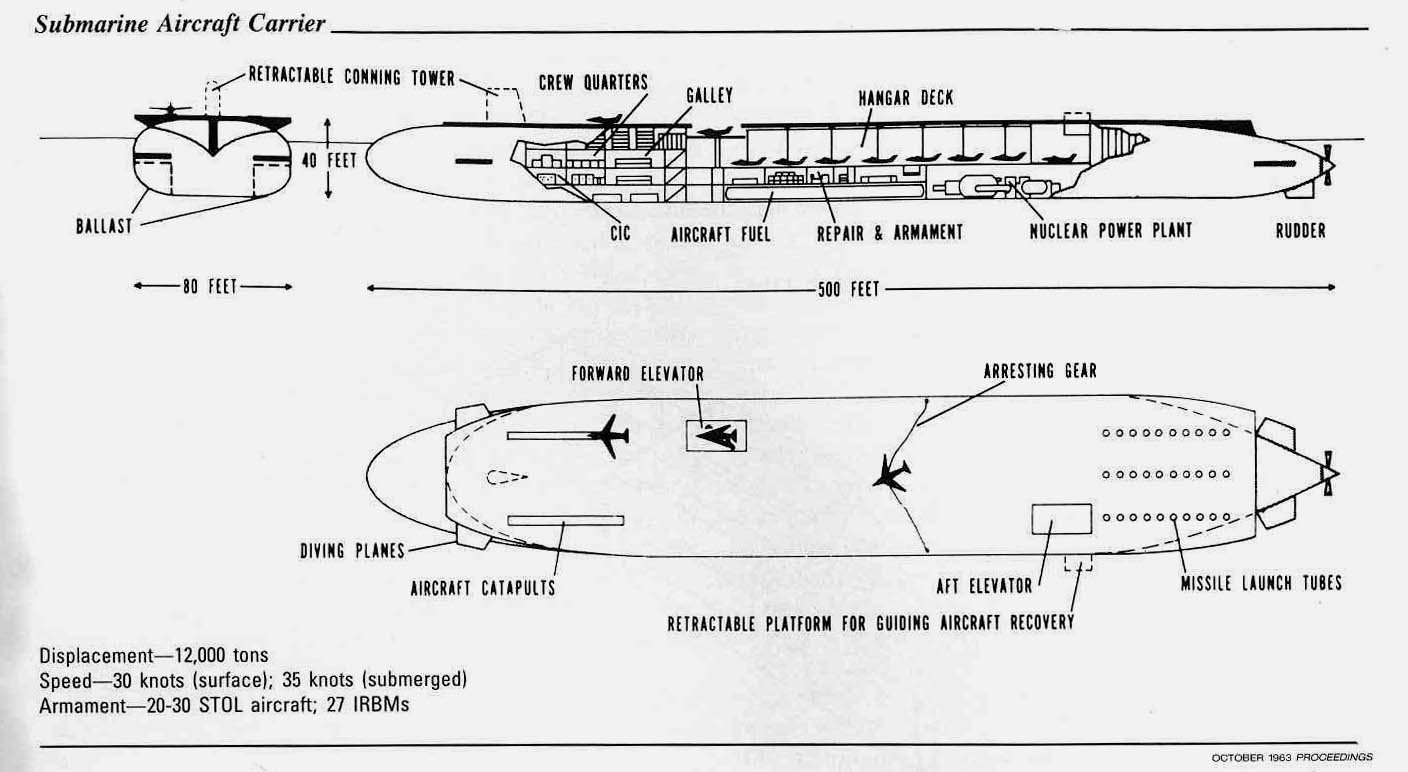
Another lesson here is to do what the Japanese had to do in WW2: use submarine aircraft carriers so the carrier itself is hidden from the enemy until planes are launched so they can catch their targets be they other ships or land targets in a position of vulnerability (element of SURPRISE).
Its common goal of every air force planners to catch the enemy's air force on the ground. This is almost impossible to do like the IAF did in the 1967 war with land-based aircraft in a world where there is no air/space camouflage cover due to satellites and spies reporting through the globally connected telecommunications world. The returning planes need to be recovered by their submarine aircraft carrier that submerges to hide them from enemy reprisals--we cannot afford to lead the enemy back to surface aircraft carriers (a comfy artificial "land" airbase on a ship) like we did at Midway which resulted in the loss of the USS Yorktown.
Norman Polmar's excellent article in Air Force magazine (see below) alludes to the need to catch aircraft on the ground using submarine launched fighter-bombers as an option Boeing and the Navy considered during the Cold War but rejected along with a lot of other good ideas. His superb article "conks out" at the end with the typical cliche that what we have now is so wise and wonderful that we no longer could use seaplane aircraft carriers. Let's examine this. The closest thing we have to submarine aircraft carriers is our current nuclear attack submarines which launch unmanned suicide aircraft we call "cruise missiles" when really they are indeed small airplanes with wings. Could we launch enough cruise missiles by submarines to catch an enemy air force on the ground?
Its doubtful because these are "dumb" missiles that cannot change course on the scene via a human onboard--its either hit or miss, and most likely miss. They can also be easily shot down like the V-1 cruise missiles were in WW2 due to their predictable flight paths. All of the we need manned strike aircraft reasoning the "aircraft carrier mafia" uses also applies to the submarine aircraft carrier because the only difference is one carrier can submerge and the other cannot. Its funny how the aircraft carrier apologists only want to use their reasons when they support their pet platforms not someone else's. But another illogic and hypocrisy comes from the "precision strike" aka missile crowd.
The precision strikers want a billion-dollar DD(X) surface ship to carry and fire lots of expensive cruise missiles and guided cannon shells to hit inland targets. But they only want to talk about FRIENDLY SSC capabilities, they don't want to discuss how the enemy's SSC can target and destoy their fantasy DD(X) (should be renamed the "DD R & D(X)" because its just a Research & Development cash cow not a real fighting shop) visible from air/space on the surface of the water. They also do not want to bring up the fact that their bombardment means are like the sub's unmanned cruise missiles (aircraft) ploddingly predictable and mega expensive such that if the enemy has hardened his key areas deep underground with low-technology, our high-technology is thwarted. What is needed to do precision strike is a large, armored Iowa class battleship that has large 16" projectiles that are qualitatively powerful enough to penetrate hardened targets yet by being shot out of a cannon cheap enough so we can fire lots of them to get quantitative effects. To compliment the battleship's overt presence that can withstand some enemy battle damages, our Navy needs a surprise attack capability that can adapt to the enemy situation quickly enough to strike before he can disperse/hide/react: submarine aircraft carriers.
We must realize we are indeed today in the same situation as the Japanese Navy in WW2 where we do not have sole ownership of the 3D battlespace above us and must be able to submerge under the water to avoid detection.
Submarine Aircraft Carriers: Does the Navy/mc want to contribute to the fight to defeat sub-national terror groups or not?
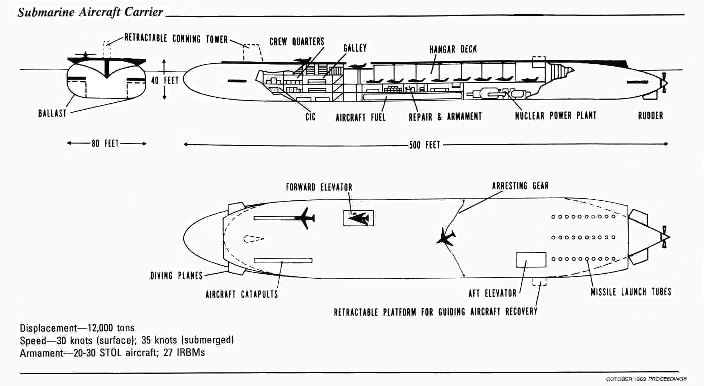
Drawing from the September 1983 Proceedings, "Sink the Navy" by Captain Charles C. Pease, U.S. Navy who in the 1963 Proceedings published a proposal for a submarine aircraft carrier, complete with catapults and arresting gears (15). Now that V/STOL technology is beginning to mature, the submersible aircraft carrier may be more feasible than she was 20 years ago. The first step toward a "sinkable" carrier might be a helicopter hangar installed in a submersible fleet auxiliary. (15) Clark C. Abt, "The Submarine-Aircraft Carrier," Proceedings, October 1963, pp. 149-153.
The days of the large amphibious surface ship packed with marines is over. These ships are too expensive and too vulnerable; if its a sub-national conflict container assault ships can be employed en masse by REAL non-linear warfighting organizations not immature kill/capture narcissist egomaniacs in the USMC to overwhelm sub-national groups and small nation-states without effective navies. Until we fight another nation-state foe, we have a very real fight against malcontent sub-national conflict (SNC) islamofascist terrorists to win. After they struck us with help of traitors within the U.S. Government, using kamikaze airliners on 9/11/2001 the ponderous WW2-re-enactment military began to gear up to go to Afghanistan. The Navy likes to brag that its carriers launched fighter-bombers to bomb mud huts in Afghanistan and later had some marines sit in a dust bowl in the middle of nowhere as proof positive that their entire WW2 force structure is AOK. Let's be brutally honest here; the Afghan northern Alliance already on the ground in tracked armored fighting vehicles and horseback were the ones who defeated the Taliban and all of the Navy's fighter-bomber strikes could have been done by land-based planes. As it was, land-based aircraft did most of the bombing anyway. After the U.S. Army's 10th Mountain Division and Rangers had jumped into southern Afghanistan, the Northern Alliuance had ended most of the resistance. By the time the marines landed in the southern Afghanistan airbase already secured by the Army Rangers, terrorist leader Osama Bin Laden and his underlings were long gone. they are still at large today. When you consider a Nimitz class aircraft carrier houses 6,000 men who all have families full of loved ones--there is no operational security when it leaves port to go bombard an Afghanistan. You could say, well the carrier is already on station in the general area so when routine flight ops turn to actual ordnance-laden flights the enemy will be caught unawares. Well, it didn't work, did it? There is no hiding a nuclear aircraft carrier and what its doing even from a sub-national group.
Again, if instead our Navy had submarine aircraft carriers, the enemy's eyes will not be constantly on a large surface target, they will not know where to look. When the submarine carrier surfaces for just a few minutes, its aircraft will be inbound and it will be back under the water again moving to a new location which to recover its planes. Its nothing more than the common Army "shoot 'n scoot" tactics artillery pieces use to avoid counter-battery fire adapted to a naval environment. And we are not only talking about dropping bombs on people, either, small detachments of troops can be inserted/extracted via submarine aircraft carriers to surveill and encircle the fleeting enemy who is not going to wave a hanky at a spy satellite or a drone plane flying overhead.
We have both the submarines and F-35 STOVL Joint Strike Fighters (JSF) to field submarine aircraft carriers
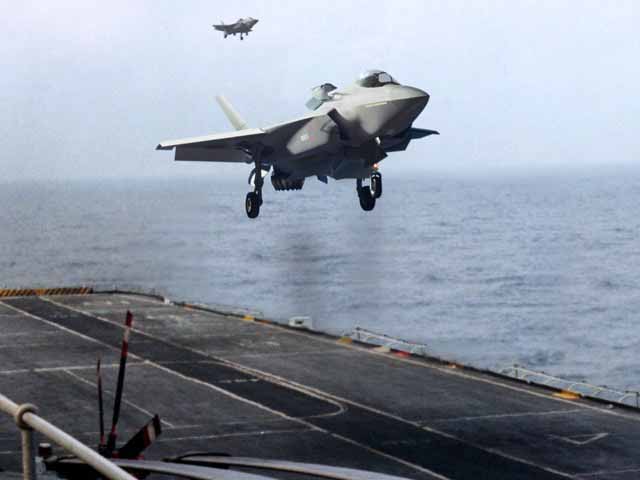
Polmar's article reveals the secret that the engineering studies already exist to field AN-1 submarines operating catapult-launched fighter-bomber seaplanes like the British SR1 or an A-4 SkyHawk Model 640 or AN-2 subs and V/TOL planes.
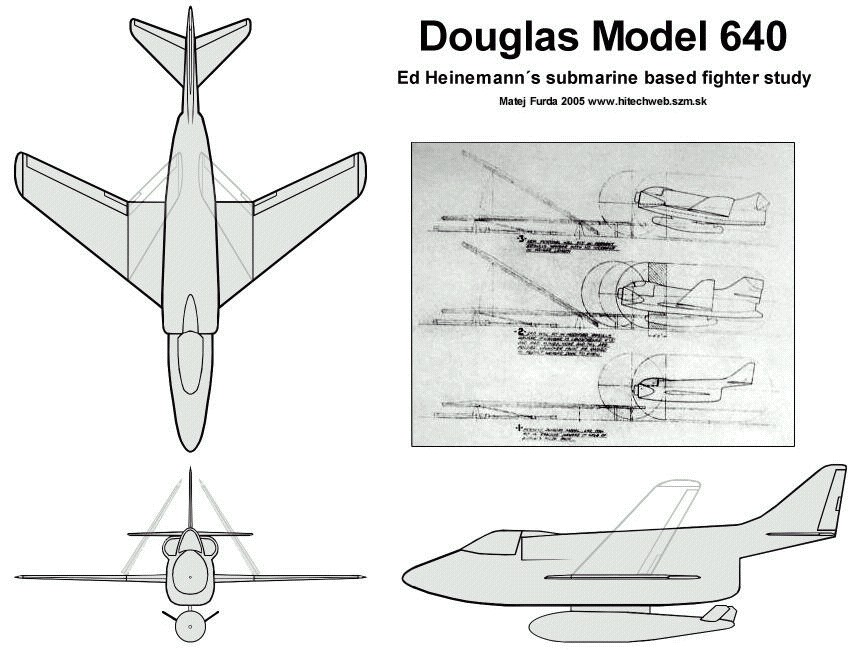
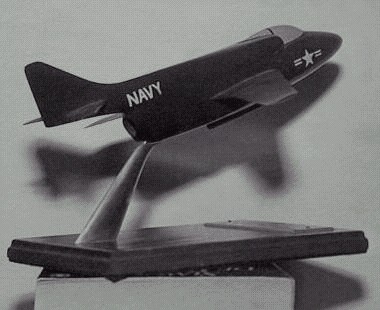
Legendary innovator Ed Heinneman even designed an A-4 SkyHawk with a boat hull for the AN-1 submarine aircraft carrier. The Navy had the "Skate" seaplane jet fighter that could dock on top of a sub to refuel & rearm--all it needed was folding wings and an water and airtight compartment module on top of the sub and the sub could take it with until needed...the Regulus cruise missile (unmanned winged airplanes) boats had these!
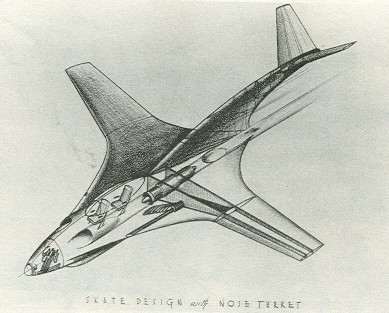
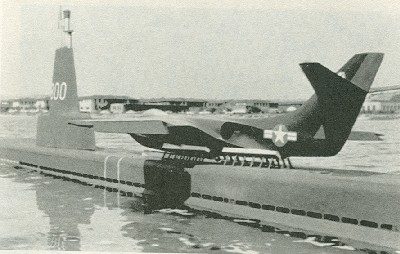
Photos courtesy of William Trimble's superb book, Attack from the Sea
But back in the '50s/'60s we did not have a jet V/TOL aircraft for an AN-2 type approach. The vectored thrust Harrier is a dangerous failure. With the advent of the lift-fan F-35 Joint Strike Fighter we have a legitimate and seriously superior fighter-bomber with radar stealth capabilities that can safely take-off and land from a vertical hover.
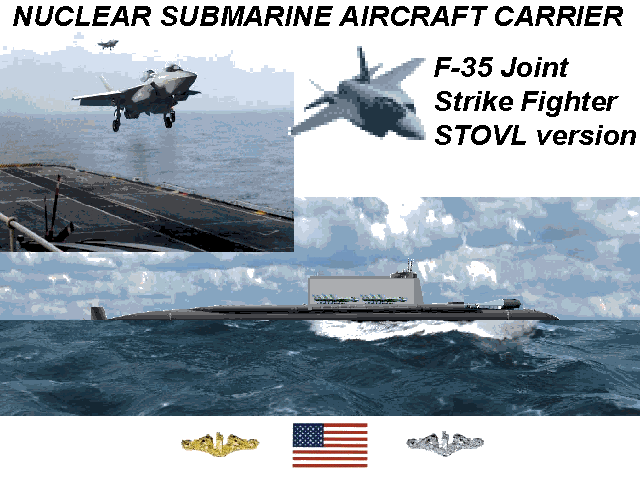
To get maximum bombload, I propose a short take-off run off the bow of a nuclear submarine of the surface with a raised "ski jump". To recover the JSFs, they land vertically at the aft deck of the sub, perhaps with the superstructure opening at front/back to double as hanger and watertight locker for the returning fighter-bombers.
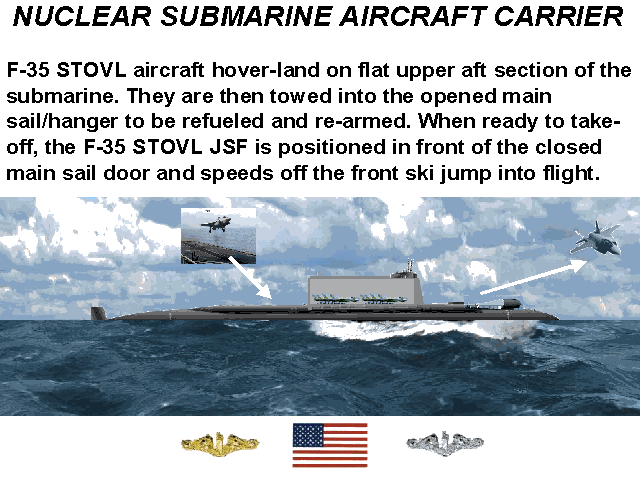
The F-35's wings would fold for compact storage and have skis and pop-out floats in case for whatever the reason it cannot hover land on the sub or another ship deck. This concept is termed "Short Take-Off, Vertical Landing" or STOVL. Special pods called JPODS can be carried by the JSFs to insert/extract 1-2 people per pod. A submarine aircraft carrier with 8 x JSFs could insert/extract at high subsonic speeds with radar stealth 20-30 commandos at-a-time compared to the current fragile troop insertions by helicopter or the abominable V-22 flying windmill/deathtrap.
Submarines + Watertight Containers = Aircraft Carriers

A SeaWolf nuclear submarine with a watertight container has a special folding-wing F-35B STOVL JSF inside depicted in the see-through cutaway model. Coming in to land is another Lightning II with GRIER pods underneath carrying 2 x SEAL or Army SOF commandos each inside.
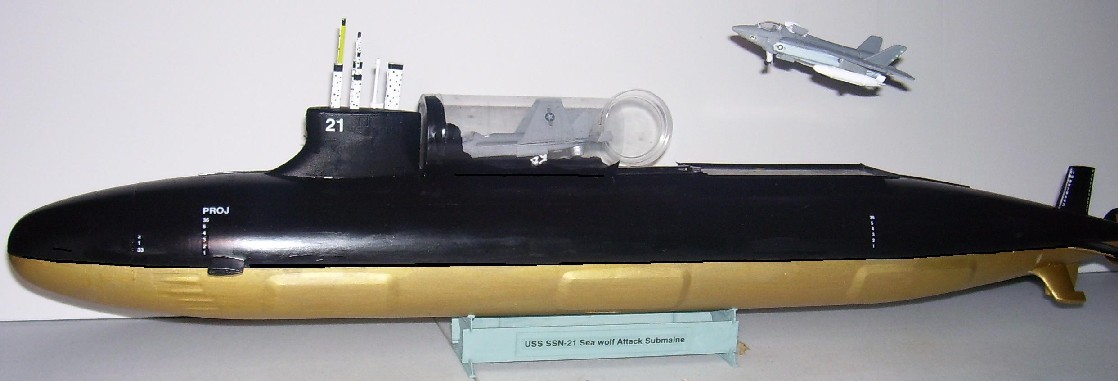
The addition of a watertight container to an existing submarine without having to modify it is a proven technique that has been done by the USN for many years. In the 1950s far-sighted Navy officers had a watertight container large enough to transport an LVTP-6 amtrack from the sub to shore. Such a container to hold M113 AmphiGavins, small seaplanes, helicopters and the new F-35 JSF are possibilities for the near future.
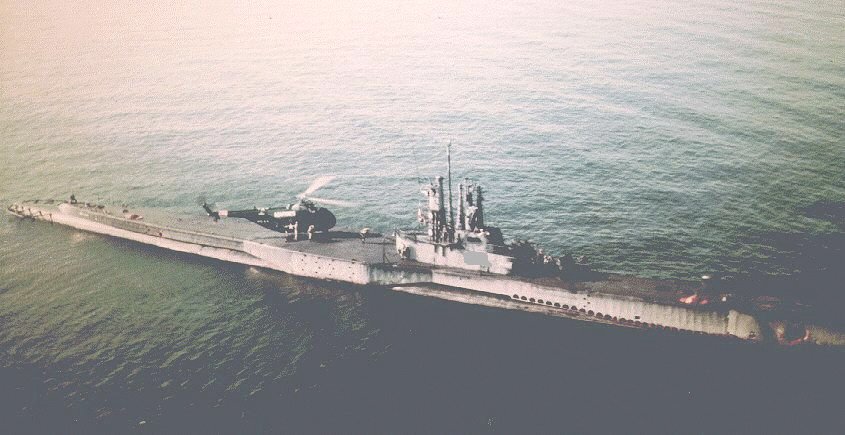
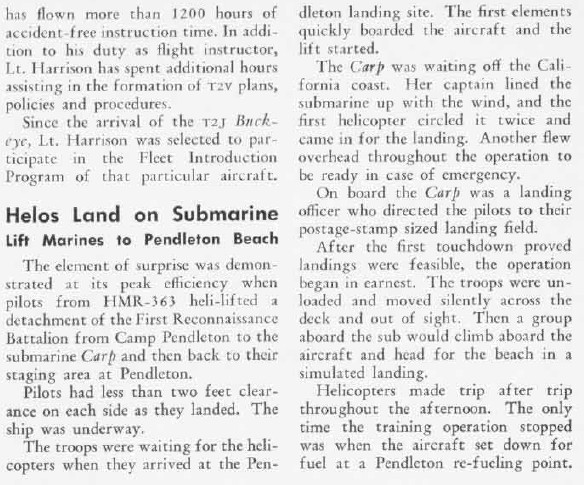
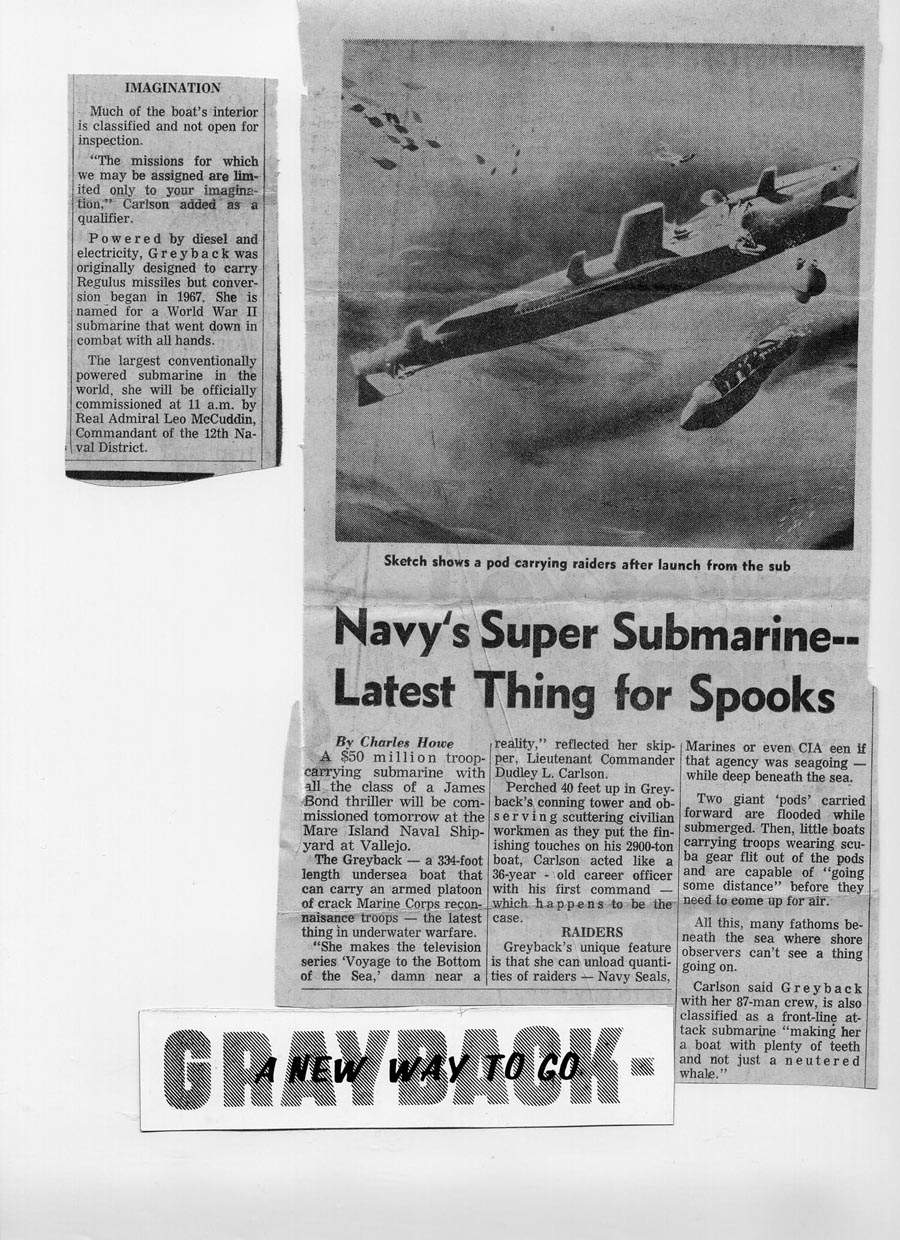
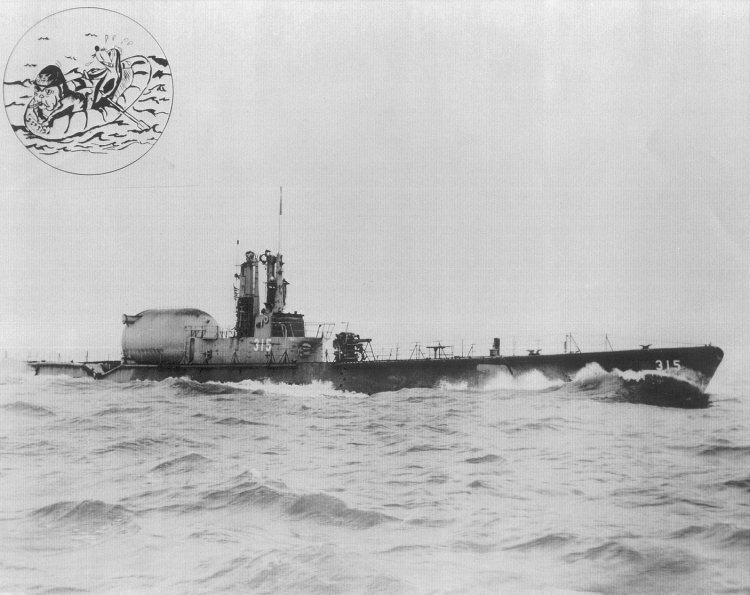
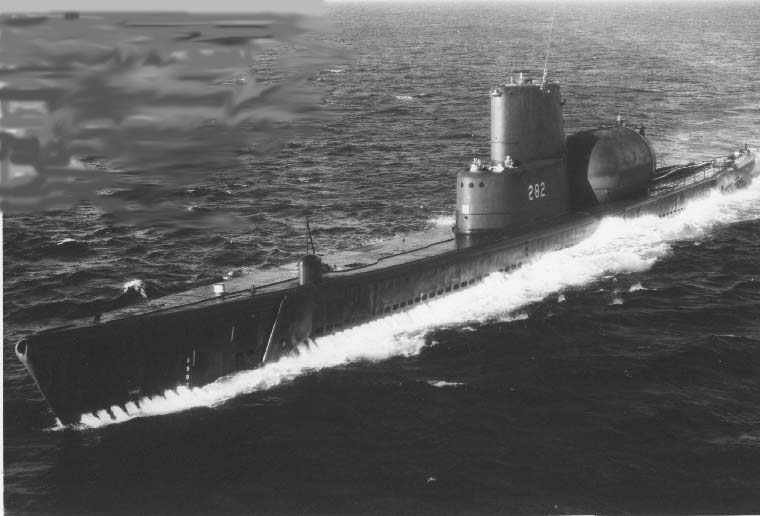
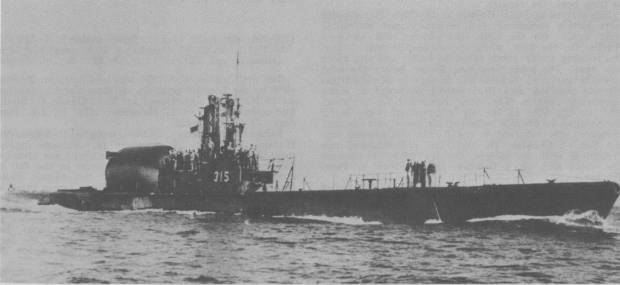
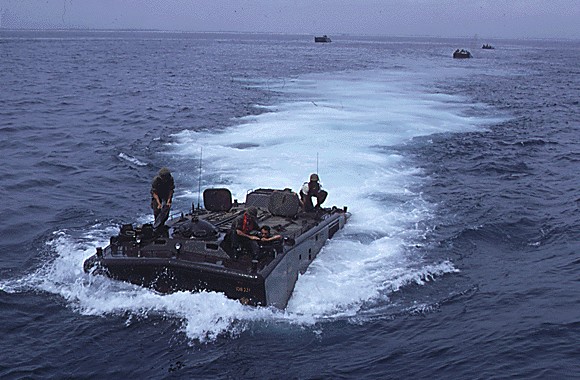
The F-35B depicted has GRIER pods to off-load commandos at sea or ashore as well as do LA strike, AsuW and AAW missions.
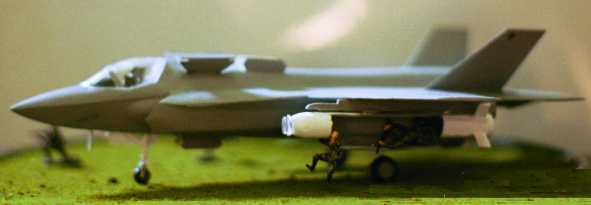
Submarines with Watertight Containers + AmphiGavins
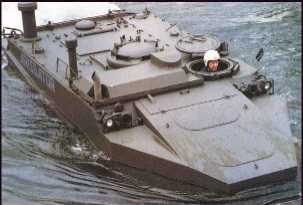
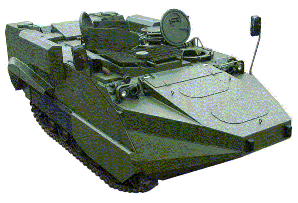
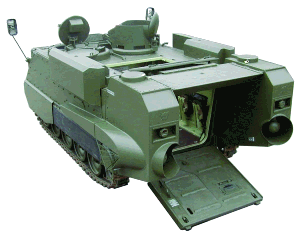
 www.youtube.com/watch?v=1hbUusptJbs
www.youtube.com/watch?v=1hbUusptJbs
AmphiGavin waterjet and nose floatation/wake creator nose-equipped M113 Gavin light tracked armored fighting vehicles (AFVs) with band tracks and stealthy hybrid-electric drives could be covertly deployed from submarines with watertight containers. Once ashore, SEALs would have not only stealthy mobility but an ability to fight from a position of OVERMATCHING STRENGTH from heavy weapons carried on the vehicle instead of M16 versus AK47 on foot. Light tracked AFVs provide cross-country mobility under armor protection to advance in the face of enemy fire, deliver dismounted fighters rested and intact to carry the day. Enemies killed/captured can be brought back to the sub from inside the AmphiGavins.

The USN has in the past deployed amtracks from submarines for covert operations.
http://en.wikipedia.org/wiki/USS_Sealion_(SS-315)
A year and one-half later, however, Sealion, along with sister ship Perch (SS-313), was designated for conversion to a troop carrier, and in April 1948, she entered the San Francisco Naval Shipyard for the eight-months conversion. During that period, her torpedo tubes and forward engines were removed, and her forward engine room and forward and after torpedo rooms were converted to berth 123 troops. The forward engine room and after torpedo room were designed for alternative use as cargo space. The wardroom was redesigned for use as an operating room; the beam aft of the conning tower was extended, and a large watertight cylindrical chamber was installed abaft the conning tower to store amphibious landing equipment including a tracked landing vehicle (LVT).On 2 November 1948, Sealion was re-commissioned a Submarine, Transport, with the hull classification symbol SSP-315. Training exercises off the southern California coast, with marines embarked, took her into the spring of 1949 when she was ordered to the Atlantic for duty in SubDiv 21. During April, she operated in the New London, Connecticut, area, then, in May, she commenced operations out of Norfolk, Virginia, as a unit of SubDiv 6l, SubRon 6. On 31 January 1950, she was reclassified a transport submarine with hull classification symbol ASSP-315; and, by the spring of that year, had conducted exercises as far north as Labrador and as far south as the southern Caribbean Sea. From April through June of 1950, she underwent her first post-conversion overhaul at Portsmouth Naval Shipyard; and, in July, she resumed operations out of Norfolk.
Reassigned to SubDiv 63 in March 1955 and reclassified submarine transport APSS-315 on 24 October 1956, Sealion continued a schedule of exercises with marines, Underwater Demolition Teams and Beach Jumper units and, on occasion, Army units, off the Virginia and Carolina coasts and in the Caribbean until 1960.
FUTURE NAVAL WARFARE: Jonah & the Wale and the Moving Killer Ducks
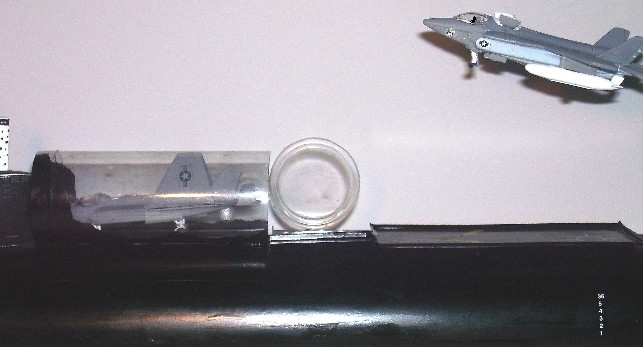
Problem: surface aircraft carriers are sitting ducks 24/7/365
Solution: Jonah & the Wale and Moving Killer Ducks
The Wale
Ever see a F-86D Sabre jet's extending its 24 x 2.75" rocket pod under its nose?
Imagine the F-86D upside down and the fuselage is a 300 foot long nuclear submarine and the pod extends all the way from bow to stern.
At the bow end of the long pod are 12-24 square tubes with catapults for 12-24 x Model 640 A-4 sized seaplane fighters.
The submarine aircraft carrier has underwater stabilizer fins for extra stability when on the surface to compensate for not being a boat hull shape.
Jonah
When the USS Wale surfaces, all 12-24 x LT. Jonahs in their Model 640 A-4s are ready to launch in their tubes at 5 second intervals so 1-2 squadrons are gone and in the air within 1-2 minutes. The USS Wale closes its bow (front) and stern (rear) doors and dives. The USS Wale is not exposed on the surface any longer than 2-3 minutes, tops.
Moving Killer Ducks
After the LT. Jonahs are done with their mission they fly back to a pre-designated GPS coordinate on the water where a communications relay buoy is floating. Flight leader LT. Jonah radios the buoy which relays by sonar his message to the USS Wale to surface. If the water is calm, all of the A-4 "DuckHawks" lower their hydroskis/wheels and land on the water lining up behind LT Jonah to water taxi into the stern door of the USS Wale's top pod which is a flooded hanger deck. If the water is rough, they land one at a time and taxi into the flooded hanger deck. If the weather is too severe for water landings, they lower tail hooks and ski/wheel land on the top dry deck on the top of the pod, catch a wire and are taken down by elevator into the flooded or dry hanger deck.
Within no more than 12-24 minutes and likely under 5 minutes, all the DuckHawks have entered the hanger deck, the stern and bow doors are closed and the USS Wale is under water invisible once again. The point is that we use the sea and land simultaneously EVERY killer duck and use their seaplane capabilities to taxi in quickly to the hanger instead of accepting a bottleneck that dry deck aircraft carriers have of only landing one aircraft at a time using arrestor wires. If we have to land this way, the entire aircraft carrier can submerge and does not have to stay topside offering a visible target to the enemy 24/7/365.
No More Men on Exposed Flight Decks
Instead of having men on the top flight deck of a dry aircraft carrier in a hurry trying to work around the bottlenecks of limited numbers of catapults and just one landing strip, the USS Wale submerges and the flight crews are in a shirt sleeve environment and no hurry with no pitching deck to contend with under the calm sea. They spray down the DuckHawks with fresh water, refuel and rearm them, and reload them into the bow launch tubes. LT Jonahs enter their planes when needed or 2 can be inside on alert status ready-to-launch in a "snap-shoot" if contact is made with an enemy combatant and the civilian cargo ship convoy or surface warship fleet needs immediate air support.
Paul Cysz's Sea Skua
He writes: Skua is a sea bird that is a hunter/killer that can function on water or land. It is one nasty bird.
Might argue details, but I think you have an idea worth pursuing. One of my student design team did a nuclear submarine for distributing Arctic and offshore oil. It was about 1000 ft long and essentially never surfaced. It transferred people and oil submerged to undersea terminals. It was faster than surface ships and could avoid all of the surface hazards. In many ways it was an underwater blimp as the oil provided buoyancy. Bring them into a dry hanger deck not flooded. You can use skis but then you open up internal structure to salt water Maybe consider something like the attached in principle not detail design.
For the killer bees, the autogyro there is a converti-plane...it might be an option as they can get airborne in as little as 30 knots and take off right from the battle box.
A former President was on C-SPAN last night and complained about all of the Iraq and Afghanistan people we had to kill before we had determined conclusively that they we hostile and intended to harm us! Killer Wasps and Skuas kill whenever necessary to survive as we did in WWII and are not politically correct. Remember disturb a killer bee colony and they will continue to sting for 8 hours and a mile distant at whatever is perceived to have disturbed them. They do not have an 8-step procedure for live fire engagement.
Communist Red China Already Looking at Submarine Aircraft Carriers to evade surface firepower detection/destruction!
J10
side-view & head-on view

top-view
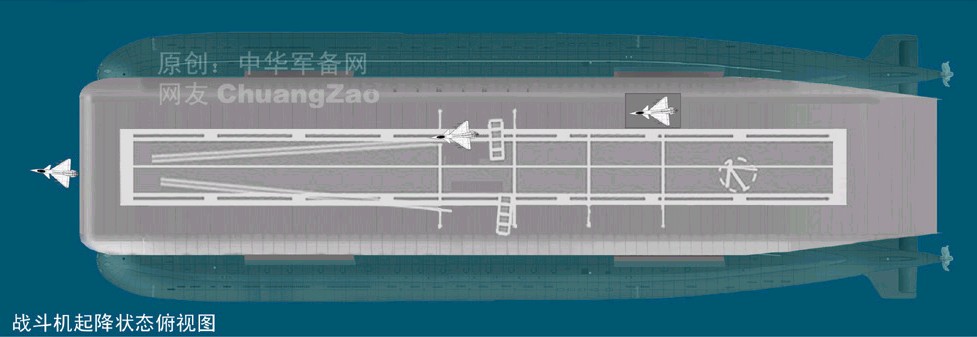
close-up
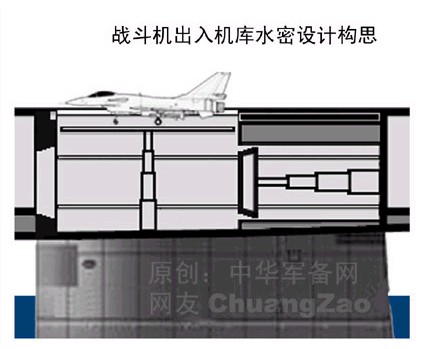
Submarine Amphibious Assault Ships: what the USMC should already be doing if it were smart

The Soviets realized that the way to land troops in light amphibious tracked tanks and supplies covertly was to use special submarines derived from the experiences in WW2. If the USMC had listened to their own Geiger Board in 1946, we'd already have amphibious assault submarines and light tracked tanks to bring marines ashore at a surprise location with speed, protection and superior firepower instead of the current helicopter foot slog clusterfuck from vulnerable surface ships reliving WW2.
The following is an ALTA VISTA BABELFISH translation of the Russian web page below:
www.deepstorm.ru/DeepStorm.files/45-92/dns/621/list.htm

Project 621.1. Quantity of submarines of the project: no
2. Image of the project:
3. Composition of the project: It is not realized.
4. History of the project:
In 40 - beginning the 50's in THE USSR were developed the designs of Arctic submarines for delivery and landing for the purpose of the seizure of the air bases of potential enemy, and also organization of intermediate airfields for the Soviet bombers, aimed at THE USA. Then this idea not was realized for the technical reasons. Today this possibility appeared in the fleets of a number of the countries.
The winter of 1953 life on the American air base in Greenland goes by its turn: radars work, take off and sit down themselves heavy aircraft - thick cigars of transport workers, powerful flying fortresses... Suddenly airport obsluga saw hundreds of advancing sub-machine gunners in the camouflage suits. But to the runway, passing them, with the roar jumped out the tanks T -34 and on the move was opened machine gun-cannon fire. Everything was ended in the schitannye minutes; pilots and technical specialists stood with the raised hands. After a certain time, the base again revived - to concrete runway one after others landed the aircraft, only now they bore not the white, but Red Stars. Bombers were repaired and was taken course on purpose... this not the scenario of sequential Hollywood fighter about the byloy "red threat". Similar actions studied the combat Generals and Admirals, who hid then the plans of these operations into the folders with the heading "top secret - special importance".
Since the beginning of the Cold War around the Soviet Union was formed the network of the American air bases, which were being located in Norway, England, Italy, Turkey, Japan. American bombers, acting from them, could strike many objects in the territory of potential enemy. In turn, THE USSR did not have military bases near THE USA and apply retaliatory attack could only from its territory. The shortest path for the Soviet bombers lay through the Arctic, but even then they in view of the insufficient radius of action could not return conversely. Therefore the project arose: to organize the intermediate points of the refueling of aircraft in the course of flights both "there" and "conversely".
It was intended to create stage airfields on ice near the pole and on the Arctic islands. The seizure of American air bases would be ideal version. But as similar to carry out? It will be possible to send ice-breakers with the landing hardly as a result of absolute (in those years) supremacy at sea of the fleets OF THE USA and other NATO alliance countries. It remained to use underwater ships.
In 1948 in TSKB-Y8 began the development the "boat of the special designation" of project 621 for the reserved transfer of landing subdivisions with combat materiel and equipment and the subsequent supply of the landed troops by ammunition, with fuel and foodstuffs. Together with the marines had to act the tankers, artillerymen, pilots. If necessary the landing force members, as it was provided for by project, at the moment of debarkation on the move could join the battle. For the fighters, for example, the designers created a takeoff device of the type of catapult. Were developed 7 versions of pre-sketching project, from which four basic they were characterized by the composition of power plant and some design peculiarity associated with the arrangement of technical equipment and landing. Were studied versions PL with the different power plants:
- diesel- battery version with the steam-gas turbine plant for guaranteeing the economic underwater is running;
- diesel- battery with 16 groups of storage batteries;
- versions with the "united" engines, which work according to diagram YED -VVD and according to diagram YED -XPI.
Project TTZ was comprised on the basis of version with the steam-gas turbine power plant, since in comparison with others it ensured the greatest submerged endurance range. Only they approached at that time the development of design 617 and possibility of designing by new PGTU of the power required for project 621 were completely obscure. Therefore simultaneously was represented project TTZ in the reserve version with 16 groups of storage batteries of the type YA'SU on 112 elements in each. In the project it provided that in the case of absence to the required period PGTU, the boat can be constructed with the storage battery with its subsequent replacement on PGTU. In this case the displacement of battery boat with the identical to the basic version to length and the width grew by 630 tons.
The basic technical solutions in the pre-sketching project were directed toward the optimum arrangement of transportable landing and combat materiel and toward the guarantee of a landing to that not equipped by mooring cones shallow shore (beach).
PL had 5 connect together durable housings - one average, and to the right also to the left of it on two more housings from each side, located one after others along the ship. Together with the light external casing, which covers all five durable housings, was obtained united construction. In the average durable housing, which was being divided by horizontal platforms and transverse sortings in the watertight sections, in its nose and average sections, were placed transportable the technology (tanks, aircraft, motor vehicles, guns) and ammunition, and also personnel of landing. In the same region the living quarters for the personnel of boat were located. In the rear portion of the average housing was placed the central station, isolated by durable spherical sortings, and diesel-electric twin-shaft plant with the diesels of e"D. In each of the stern onboard durable housings were placed one PGTU and to one diesel Z0D, which work on one common line of shaft. Thus, PL was four-shaft.
In to the nose of onboard housings were located storage batteries and the cistern of the substitution of transportable it was cargo and the product "030". In all aboard the ship there were 35 cisterns of substitution, which made it possible without the special labor to restore ballast trimming with the landing. All durable housings were connected between themselves by passages and hatchways, which made possible for personnel to pass from housing to housing. In the external casing were placed 29 main tanks, 3 the fuel tanks, bags with the product "030", cistern equalizing and rapid sinking. In the nose extremity they find the mechanized gangplank (access ramp) by length 25 it was meter and nose diving rudders. In superstructure and fairwater artillery and rocket installations and sliding devices were located. In the rear portion of the light housing were placed two aerodynamic rudders, stern diving rudders and anchor gear. The flat bottom of the nose section of the ship protected by armor plates to avoid the damages of housing with the contact of soil during the landing. For the durable housing was provided for the application of steel with the yield point of 40 kgs/mgm2. The designed architectural form of housing PL made possible to have small sagging and to ensure conditions for the rapid landing: small sagging made it possible nearer to approach the coast.
Armament: two 57- mm of the coupled zenith of automaton even one coupled by 25- mm automaton. The launch platforms of 360 rocket projectiles were located for the fire support of landing on the deck. Load capacity landing PL was equal to 1550 T. on its board they were placed 10 tanks T -34,12 of trucks and 3 trailers, 4 passenger of automobile, 12 guns of the caliber of 85 mm, 2 guns of the caliber of 45 mm, 3 aircraft la -11 with the folding wings, machine guns, mortars, automata, the ammunition, fuel-, provisions, and also 745 people of landing. Since loading and unloading the tanks and trucks produced under its own power, powerful ventilation for the removal of exhaust gases of the operating engines was provided. The sections, where dwelled soldiers, were equipped with the system of regeneration and air conditioning. There were general cot- bunks, each to 4 people, latrines, wash-stands, two large electric stoves for the preparation of food, electro-boilers, etc.
The developers of project rightfully considered the debarkation of landing forces the most complex operation. For boat it was in prospect close to approach with nose extremity the coast, after filling main tanks, actually to lie on the soil, to open cargo hatch and to advance powerful ladder for gathering of technology and people. The cisterns of substitution were filled up in proportion to lightening submarine. For prospecting the touchdown point, mine clearing and destruction coast barrages through the airlocks in the rear portion of the boat the divers could leave.
The creation of troop-carrying submarine required solution of many complex technical problems, including of such, as creation PGTU, the ship air-conditioning system for the accommodations with the large number of located in them people, loading-unloading devices, and also realization of the commutation of the electric power of 16 storage batteries. Moreover it was necessary to carry out a whole series of the measures, which would ensure maintaining the combat efficiency of landing force members during the passage. The additional tasks, which were being laid on PL - transportation it is cargo, the supply of submarines in the ocean - they also required resolution of many problematic questions.
The absence in the country of experience of designing and use truck PL and the large number of questions, which require their solution, caused doubt about the reality of realizing of this project. The obtained in the project relatively greater load capacity, which reached by 28% of the displacement, made it necessary to assume that loads initial data in the part and arrangements were to a considerable degree optimized. A number is technical of the solutions - such, as the method of unloading the technology (aircraft, tanks, guns and the like.) and life support of personnel of landing during the prolonged passage and its combat efficiency after debarkation, it caused doubts about their reality. In connection with this the management of Soviet VMF expressed a number of serious observations and all works on project 621 were ended. The nevertheless carried out work gave a certain experience, which was used subsequently, in particular, with designing under-ice- transport PL and other submarines of analogous designation.
5. Diagram of the project:

They are designated by numbers: 1 - diving rudder; 2 - propulsion motor; 3 - diesels; 4 - central station; 5 - cargo deck; 6 - storage batteries; 7 - crew quarters.
6. Tactical-technical data of the project:
displacement 5845 t
the speed in the underwater position 8,4
it is main in the underwater position - 15
it is main cruising range is above-water - 6000 miles.
length - 147,5 m.
width - 13,3m.
sagging-? 6,3 m.
crew -? man.7. Sources:
- A. shirokorad "tank-borne troops at the pole" (young people technique of y2-y99'g.). - A. shirokorad? ? the "Soviet submarines of postwar building" - M. Dmitriev's Figures.
PROGRESS IN 2006!
Smart SEALs kick ass - Special Ops Sub Becomes Hub for irregular Warfare
The following is a FANTASTIC article about FANTASTIC things being done by the smart submariners and SEAL operators. We now have an Ohio class nuclear submarine (SSGN) that can house 100 SEAL commandos. Their mini-sub is not working, however so they have to get "wet" to come ashore. Not good. But the SEALs are SMART and want 100% excellence as I've seen them personally in action.
We're not thrilled by the Andrew Krepenevich we-don't-need-battleships-we-got-cruise-missiles mentality but it makes more sense launching 154 from a sub that can hide than a vulnerable thinly-skinned surface ship.
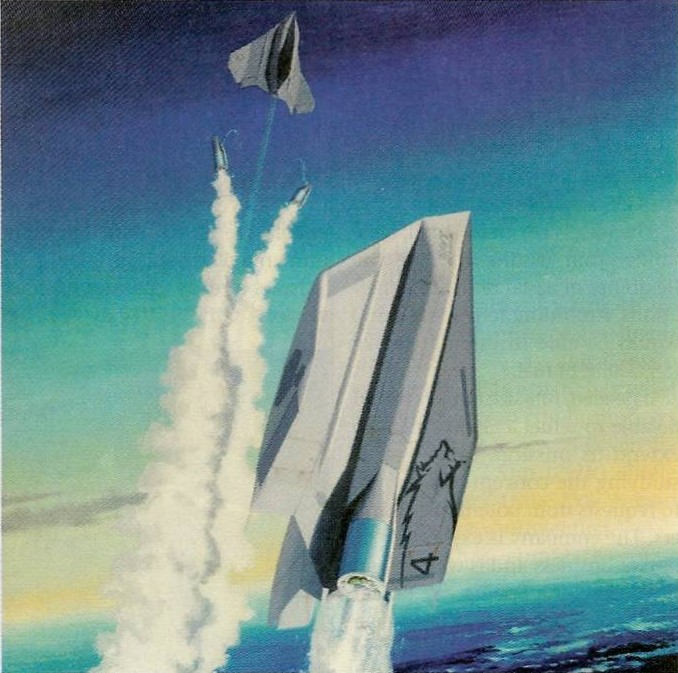
Proposed Comorant submarine launched and recovered UAV
They have re-discovered the submarine aircraft carrier! Well, no shit sherlock. They figured they can launch a small fixed-wing UAV. What progress! 60 years later, after the Japanese ROUTINELY operated MANNED seaplanes from submarines all during WW2, the U.S. Navy with no one around to remind them that they are not doing this first, is now just getting around to flying some unmanned model airplanes from their submarines...wow...maybe in another 60 years they will "discover" that men could be in aircraft launched from submarines, too!
Good for them. Maybe a larger dry dock shelter for a pair of NOTAR stealth "Killer Bee" helicopters?
The NOTAR MD-900 which hopefully will win the Army's LUH competition is a very COMPACT (compare to long tail-boom tail-rotor helicopters) and stealthy helicopter that could easily fit into a sub container, trailer or in a BATTLEBOXaircraftTM. Its got two powerful engines to counter the whining of narrow-minded rotorheads that NOTAR means loss of power. Getting shot down in flames because you are in a noisy helicopter is the "loss of power" (being DEAD) you should be worrying about.
MD-900 Explorer AS U.S. ARMY'S LIGHT UTILITY HELICOPTER (LUH) IN FORWARD-DEPLOYED SCENARIOS
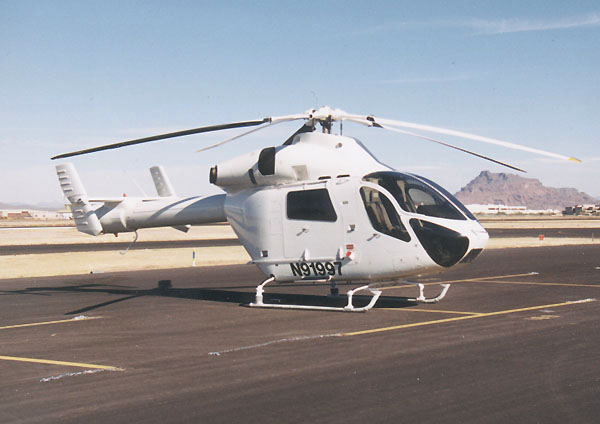
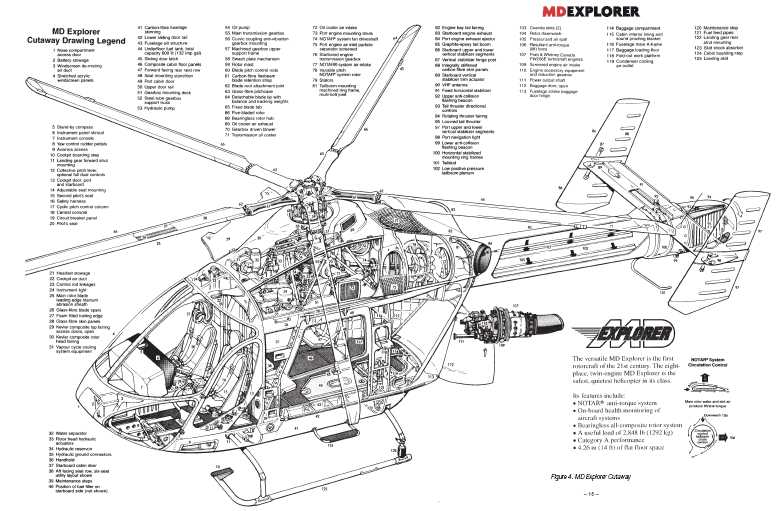
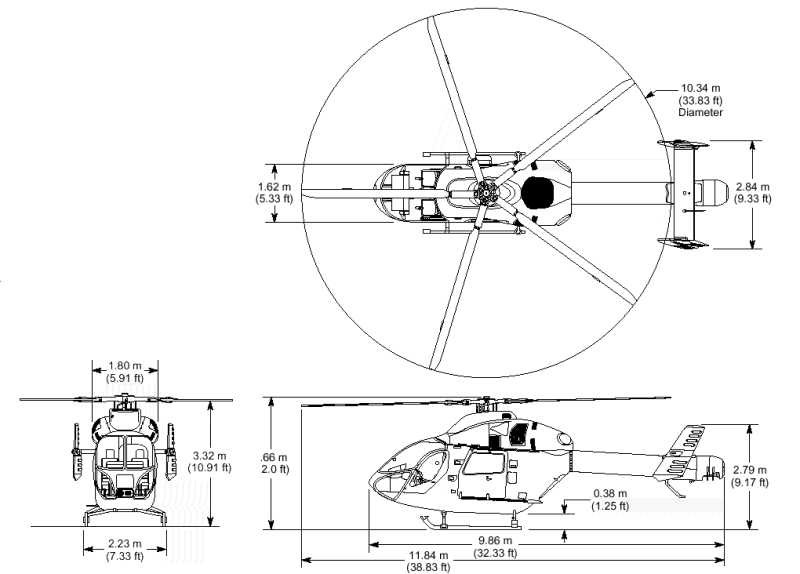
The MD-900 can also be fully covered from sea spray when on deck (as U.S. Coast Guard MD90s are on ships)
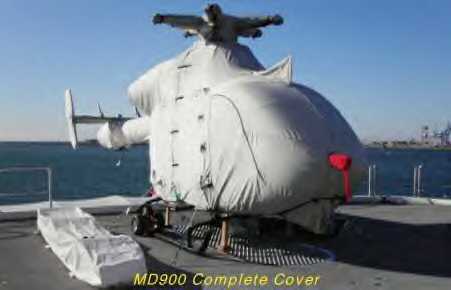
by Bruce Perch's Aircraft Covers
www.aircraftcovers.com/ techsheets/md900.html
www.aircraftcovers.com/mil.html
bruce@aircraftcovers.com
(800) 777-6405
(408) 738-3959
FAX: -2729
In 1995, U.S. Naval Institute PROCEEDINGS accepted an article by 1st Tactical Studies Group (Airborne) Director Mike Sparks proposing small OH-58D Kiowa Warrior "Killer Bees" be located on the Navy's new Patrol Coastal (PC) ships via adding a small helipad to give the SEALS an air insertion & attack capability.
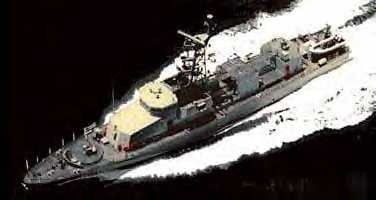
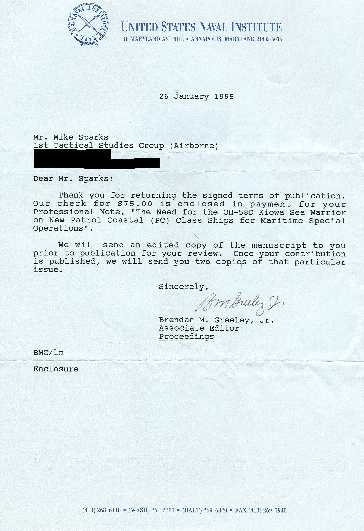
They paid him for the article, but never printed it. Did someone scare them off? Would it "rock-the-boat" (pardon the pun) too much?
www.globalsecurity.org/military/systems/ship/pc-1.htm
Its ironic, since according to John Pike of Global Security the Navy discovered the PCs were too large for coastal inshore work ie; get close enough to deliver SEAL teams by small RIB boat. Pike says:
"They have limited endurance for their size, and their combat systems and ammunition allowance do not compare well with similar ships in most other navies. They are about ten times the size of their predecessors but carry about the same payload. It was belatedly discovered that they are too large for the close inshore work for which they were intended."
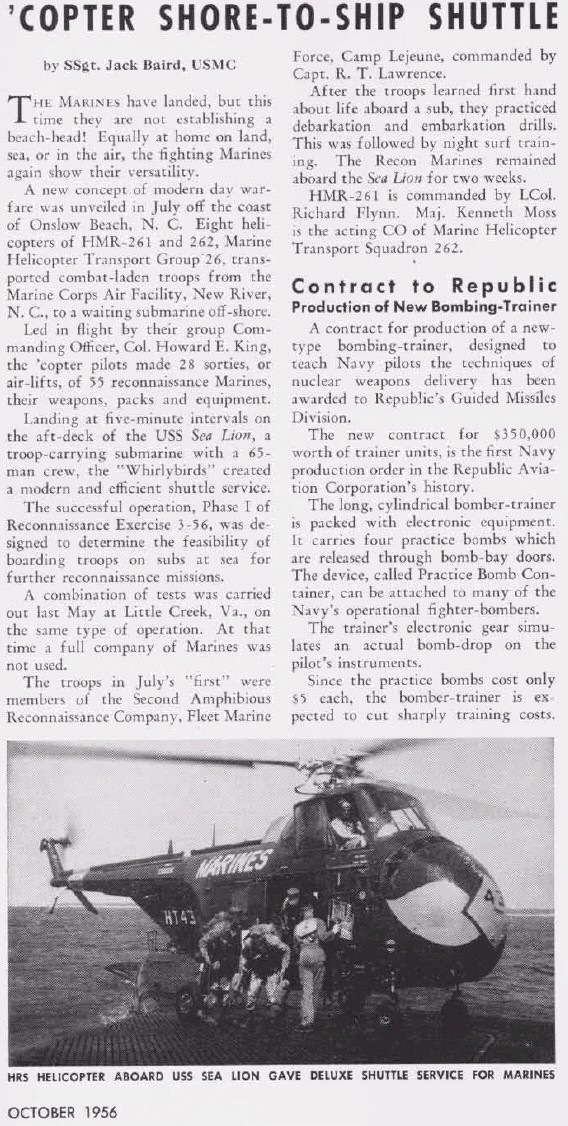
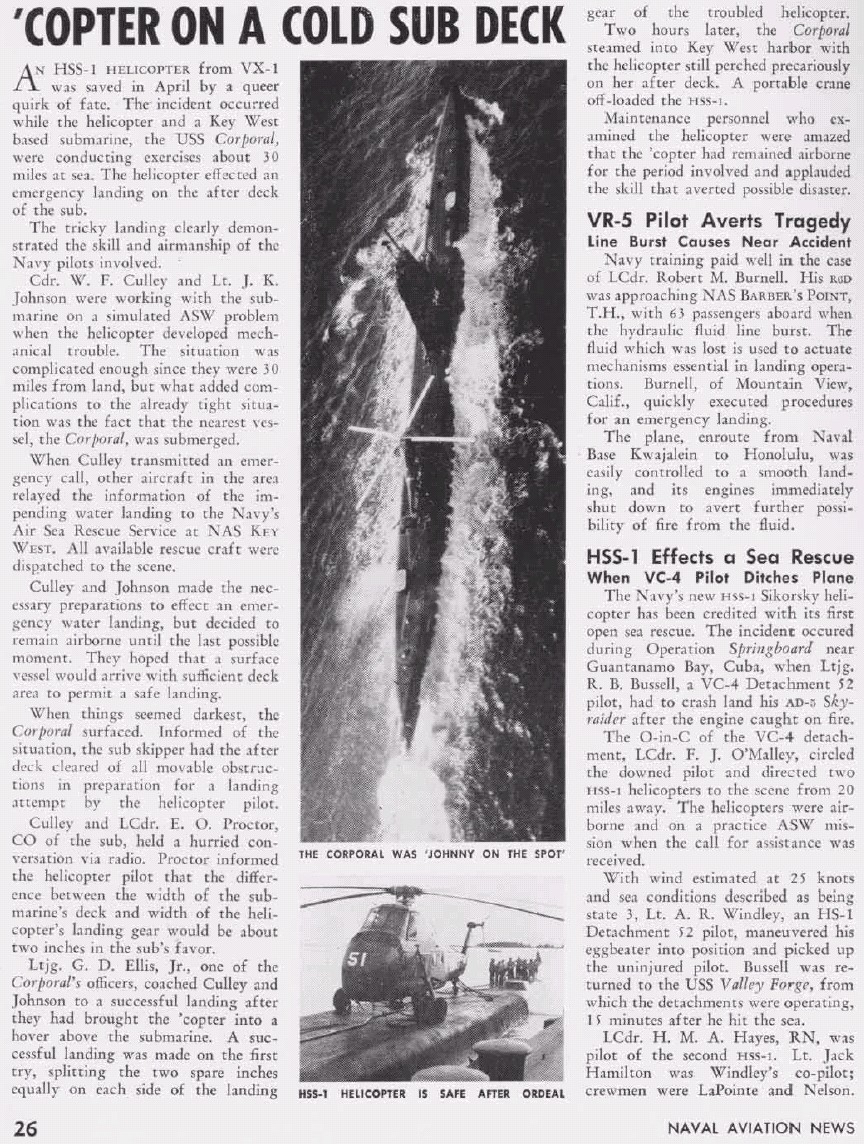
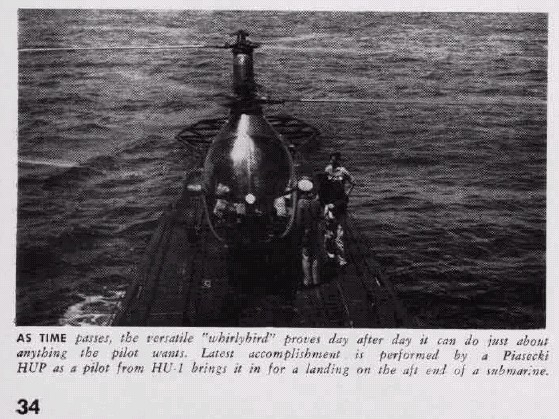
Small helicopters have operated from ships other than aircraft carriers and submarines for many years. To deploy an entire class of ship without even a helicopter flight deck is ludicrous. Maybe if they had printed Sparks' article and added helicopter pads for small helicopters back in '95 the Navy wouldn't be getting rid of the PCs and giving them to the Coast Guard? Here's proof that A/MH-6 Little Birds were used during the 1983 invasion of Grenada to evacuate casualties onto Navy ship decks. Ironic that at the time, DoD and the Army denied that "Killer Egg" A/MH-6s were used in the operation despite amateur video going public showing the "black helicopters" in action. Here, 23 years after the fact, is a picture from DoD of a Little Bird during Grenada delivering a wounded Soldier to a Navy deck.
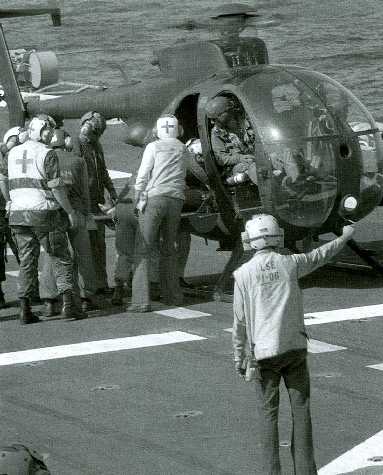
Little Birds can also hover insert/extract troops by FRIES if they cannot land. Pics of this are rare, here's the best one we've seen showing the FRIES set up on the A/MH-6:
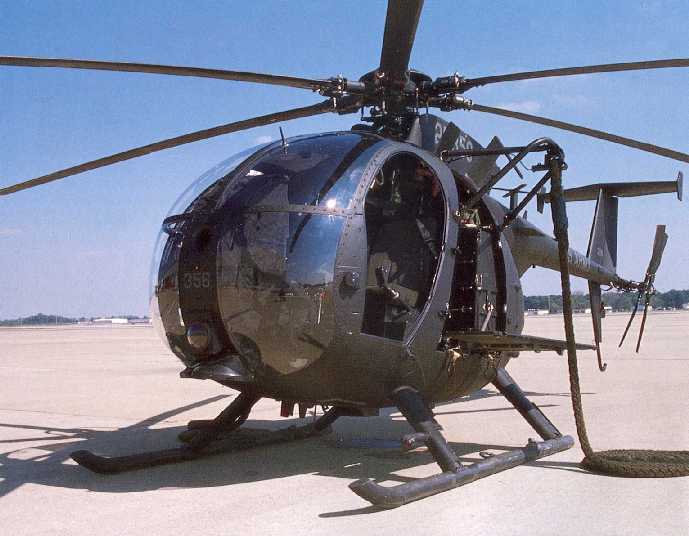
If the Navy SPECWAR people are smart--which they are--they will develop a waterproof container to fit to their new SpecOps nuclear submarines to carry some "Killer Bees", perhaps NOTAR Little Birds or MD-900s to transport 1 to 3 SEAL "platoons" of 7 men by air with stealth, making them defacto "Submarine Aircraft Carriers".
Or quiet prop seaplane?
MAS...from the sea......New Capability in the Centaur Seaplane
www.centaurseaplane.com/docs/new_caps.htm
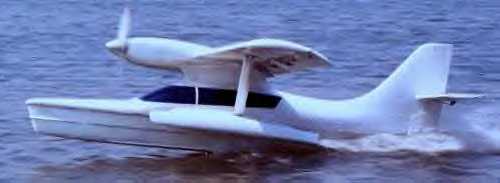
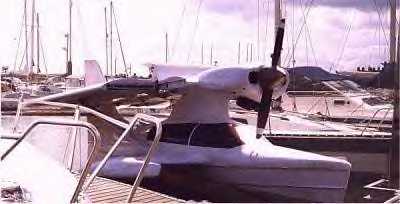
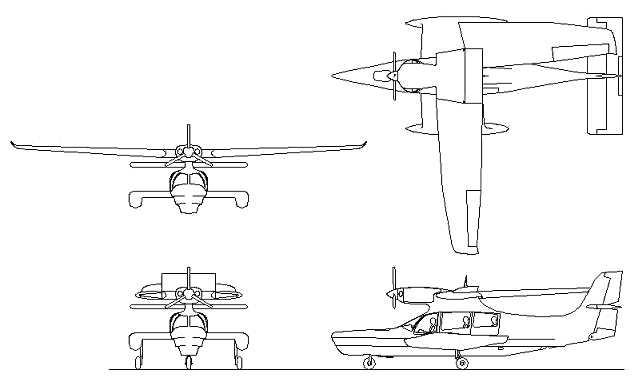
The new British Centaur seaplane might compact to fit into a watertight compartment on top of a nuclear submarine with SEAL commandos. Imagine a Centaur seaplane with a DIESEL* PISTON or turboprop engine with quiet 5-bladed Hartzel prop; its folding wings inside a watertight container on the back of one of our USN SEAL commando submarines!
Able to fly under earth's curvature to evade radar, to insert/extract say 14 x SEALs (2 x 7-man "platoons") who'd combat swim ashore or use a BLUE OR GRAY NOT BLACK---Zodiac F470 CRRC with ArmorFlate etc.
* SOF really needs to get out of the gasoline outboard motor engine business and use safer fuel diesel motors in their small boats, too!
How about Inflatoplanes?
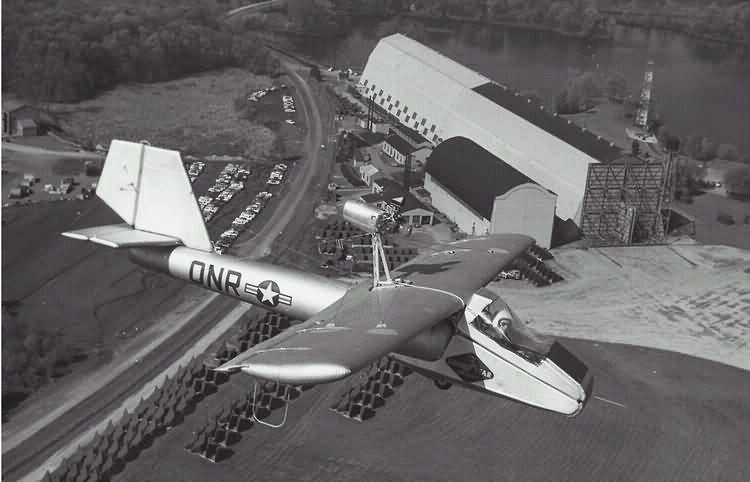
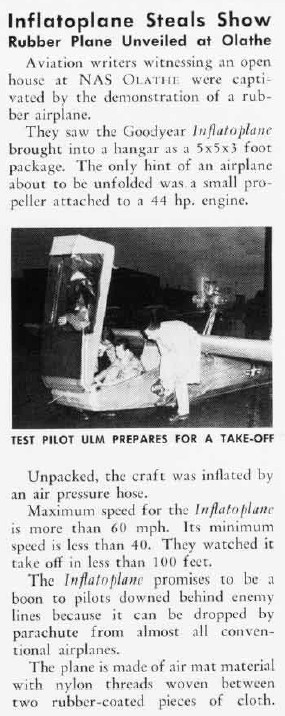
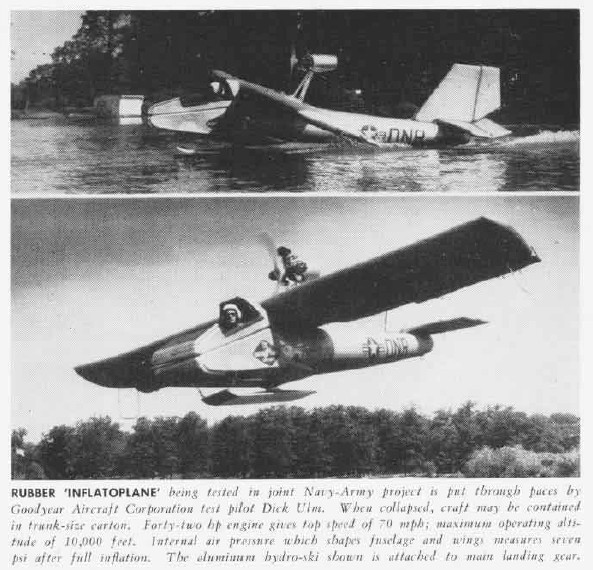
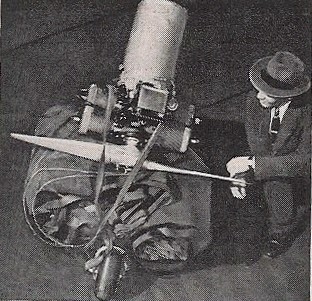
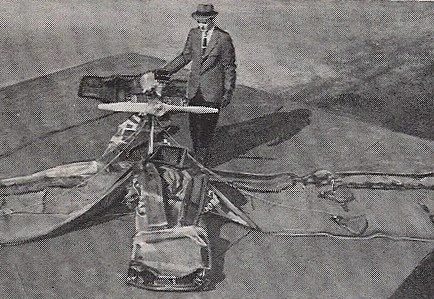
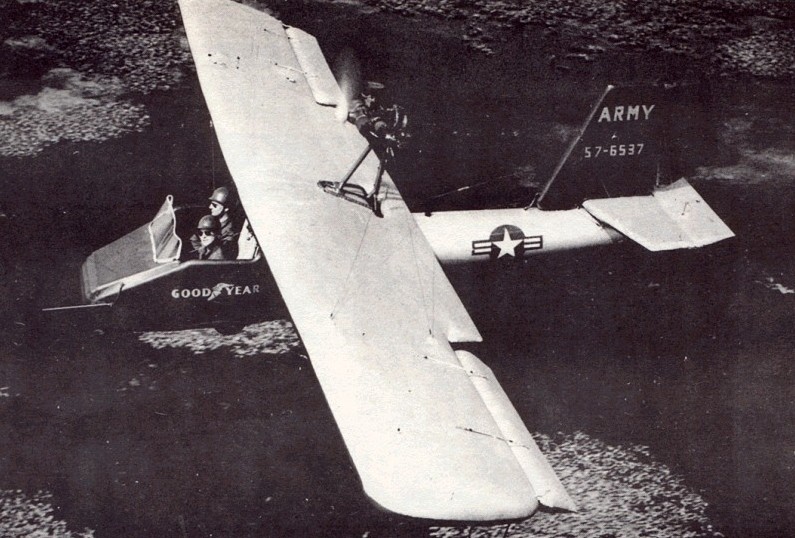
The UAV fad has spurred another look at inflatable airplanes to get aircraft capabilities through structures that minimize themselves when not in use:
www.combatreform22.com/AIAA2003_6630.pdf
The essential problem in flight by air pressure differential is that you need lots of wing or some kind of surface area to create lift that on the ground gets in the way of moving the aircraft around. An airplane that deflates would be an extreme form of wing folding--the entire aircraft can be deflated until use.
Imagine an inflatoplane made of CLEAR see-through material that would blend into the sky. Engine would be a silenced diesel engine of about 75 horsepower. Soldier pilot/observer or SEALS would wear sky gray colored nomex jumpsuits and helmets to assist in blending in with the sky.
Inflatoplane would be inflated with non-flammable HELIUM to shed about 20 pounds of weight to increase range.
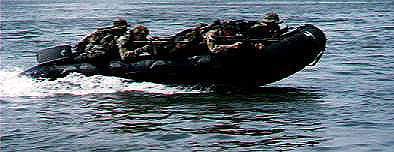
Its standard practice throughout the world to use inflatable boats...if the military mind can accept his life depending on a Zodiac F470 boat in the water, why not an inflatable airplane? And an excellent place to start for a military inflatable SEAPLANE would be with the Navy SEALS deploying from nuclear submarines covertly.
http://72.14.209.104/search?q=cache:ft7cqQuG8PoJ:encyclopedia.quickseek.com/index.php/Goodyear_Inflatoplane+ga-466+inflatoplane&hl=en&gl=us&ct=clnk&cd=1
Goodyear InflatoplaneFrom QuickSeek Encyclopedia
The Goodyear Inflatoplane was an experimental aircraft made by the Goodyear Aircraft Company, a subsidiary of Goodyear Tire and Rubber Company, well known for the Goodyear blimp. The Inflatoplane was roughly equivalent to the Piper Cub.
The all-fabric inflatable aircraft was built in 1956, with the idea that it could be used by the military as a rescue plane to be dropped in a box behind enemy lines. Only 12 were built, but development continued until the project was cancelled in 1973.
There were at least 2 versions:
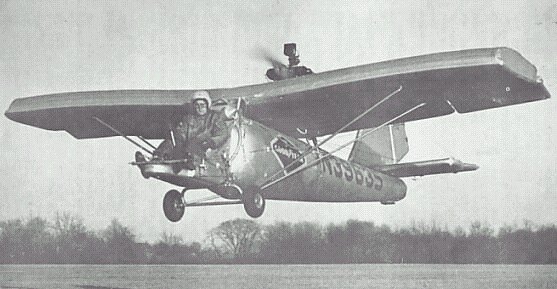
The GA-468 was a single seater. It took about 5 minutes to inflate to about 25 lbf/in² (170 kPa); at full size it was 19 ft 7 in (5.97 m) long, with a 22 ft (6.7 m) wingspan. A pilot would then hand start the two-stroke cycle, 40 hp (30 kW) engine, and take off with a maximum load of 240 lb (109 kg). On 20 US gallons (76 L) of fuel, the aircraft could fly 390 miles (630 km), with an endurance of 6.5 hours. Maximum speed was 72 mph (116 km/h). Later, a 42 hp (31 kW) engine was used in the plane.
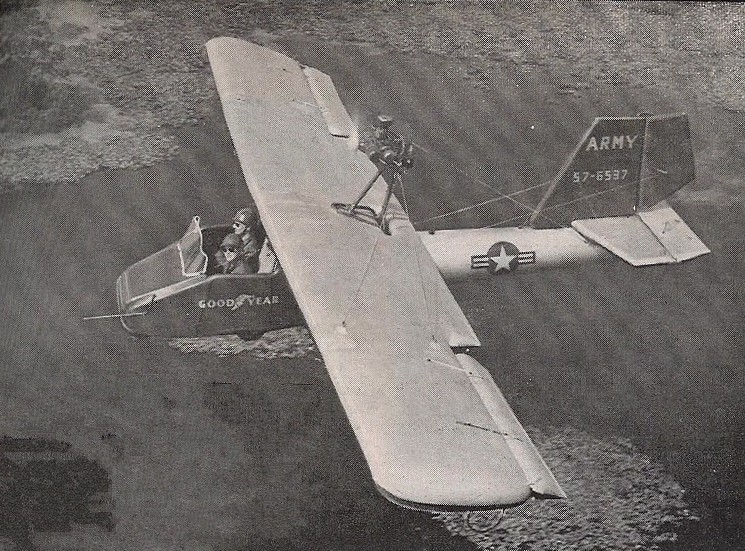
The GA-466 was the two-seater version, 2 in (50 mm) shorter, but with a 6 ft (1.8 m) longer wingspan than the GA-468. A more powerful 60 hp (45 kW) McCulloch 4318 engine could power the 740 lb (336 kg) of plane and passenger to 70 mph (113 km/h), although the range of the plane was limited to 275 miles (440 km).
THE GOODYEAR MODEL 466 & 468 INFLATOPLANE
The Goodyear Inflatoplane is a light aircraft with a completely pneumatic airframe. The wing and tail assemblies are made of a rubberised fabric developed by Goodyear and called Airmat, which consists of two layers of nylon fabric joined by thousands of dropped threads. When inflated the layers of nylon are forced apart, the threads being stretched taut to maintain the correct surface contours. The fuselage is of simple rubberised airship fabric. The entire aircraft when deflated can be transported in a truck, jeep, trailer or aircraft (for air-dropping). It can be inflated from a compressed air bottle or by manual pump. Maximum inflation pressure is 7 lb./ sq. in. (0.49 kg. cm.²) for the single-seat version, and 8.5 Ib./sq. in. (0.60 kg./ cm.²) for the two-seat model.
The Inflatoplane has a horizontally-opposed air-cooled two-stroke engine, mounted above the rear of the wing and driving a two-blade wooden tractor air-screw.
Flying controls ere conventional and the rigidity of the wing is such that it will support the weight of a man on each side immediately outboard of the bracing struts.

Since the original prototype flew in 1956, several improved versions have been developed under military contracts, with both open and enclosed cockpits and alternative wheel and single hydroski landing gear to land on water and snow.
On those models, a compressor can be fitted at the back of the engine to maintain pressure in the airframe even when a number of .30 in. caliber bullets have pierced the fabric.
The two current versions of the Inflatoplane are :-
Model 466 (XAO-2G1). Two-seater with 63 h.p. McCulloch 4318E engine.
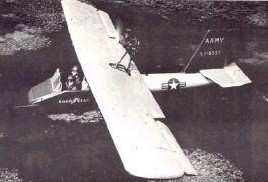
-------------------------------------------------
Would Helium Help Inflatoplanes?
DIMENSIONS (Model GA-466).- Span 28 ft. (8.5 m.) Length 19 ft. 8 in. (8.0 m.)
WEIGHTS (Model GA.466).- Weight empty 290 lb. (130 kg.) Weight loaded 740 lb. (336 kg.)
PERFORMANCE (Model GA-466). Max. speed 70 m.p.h. (112 km.h.) Cruising speed 55 m.p.h. (88 km.h.) Stalling speed 43 m.p.h. (69 km.h.) Rate of climb at S/L 500 ft./min. (152 m./min.) Service ceiling 6,500 ft. (1,980 m.) Take-off run (grass) 390 ft. (120 ft.) Endurance 5.4 hours.
GA-466
Wings
28 feet length x 6 feet wide x 1 feet high = 168 cubic feet of helium
Fuselage
20 feet length x 3 feet wide x 2 feet high = 120 cubic feet of helium
______________________________________________________
388 cubic feet of helium =
One cubic foot of helium will lift about 28.2 grams = 10, 941.6 grams =
22.42 pounds of buoyant lift
Empty weight 290.00 pounds
Helium lift 22.42 pounds
_________________________
Helium Adjusted Empty Weight 267.58 pounds
Model 468 (XAO-3G1). Single-seater, with 44 h.p. Nelson H-63A engine. Five built for U.S. Navy, five for U.S. Army.
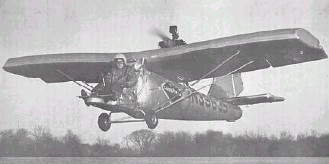
DIMENSIONS (Model GA-468).- Span 22 ft. (6.7 m.) Length 19 ft. 8 in. (8.0 m.)
WEIGHTS (Model GA-468).-Weight empty 225 Ib. (102 kg.) Weight loaded 550 Ib. (250 kg.)
PERFORMANCE (Model GA-468).- Max. speed 72 m.p.h. (115 km.h.) Cruising speed 60 m.p.h. (96 km.h.) Stalling speed 37 m.p.h. (59 km.h.) Rate of climb at S/L 550 ft./min. (170 m./min.) Service ceiling 10,300 ft. (3,140 m.) Take-off run (grass) 250 ft. (76 m.) Landing run (grass) 350 ft. (107 m.) Endurance 6.5 hours
GA-468
Wings
22 feet length x 6 feet wide x 1 feet high = 132 cubic feet of helium
Fuselage
20 feet length x 3 feet wide x 2 feet high = 120 cubic feet of helium
______________________________________________________
252 cubic feet of helium =
One cubic foot of helium will lift about 28.2 grams = 7, 106.4 grams =
14.56 pounds of buoyant lift
Empty weight 225.00 pounds
Helium lift 14.56 pounds
_________________________
Helium Adjusted Empty Weight 210.44 pounds
NOTES
http://science.howstuffworks.com/helium2.htm
One cubic foot of helium will lift about 28.2 grams
Multiply the volume of the balloon by 28.2. Divide by 448 -- the number of grams in a pound -- to determine the number of pounds it can lift.
Never Say Never Again: 007Tech for Naval Commandos
 youtube.com/playlist?p=PL652C40D87B73C4D3
youtube.com/playlist?p=PL652C40D87B73C4D3
The Navy SEALS and submarines are on the right track, ehh "course".
Go Navy!
www.nationaldefensemagazine.org/issues/2006/april/specialops.htm
April 2006Special Ops Sub Becomes Hub for Irregular Warfare
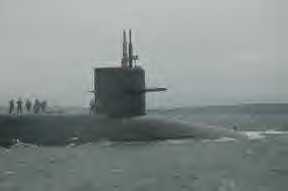
By Harold Kennedy
ABOARD THE USS OHIO-A short cruise on board this former nuclear-missile submarine off the coast of Washington state offers a glimpse into how the Navy and special operations forces plan to engage in covert military action.
During a three-year overhaul, the Ohio's 24 nuclear intercontinental ballistic missiles, known as Tridents, were removed to make room for 154 Tomahawk cruise missiles and facilities for as many as 66 special operations troops, plus a 35-man joint command element.
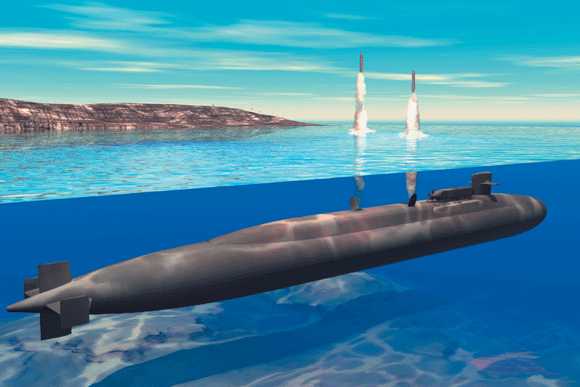
The joint command unit could control the ship, any commando passengers and conceivably a task force of other ships, ground troops and air components, Rear Adm. Frank M. Drennan, commander of Submarine Groups 9 in Bangor, Wash., and 10 in Kings Bay, Ga., told National Defense.
Unlike the Tridents, which were developed during the Cold War to help dissuade the Soviet Union from launching a nuclear attack against the United States, the Tomahawks-armed with 1,000-pound conventional [HE] warheads-have been fired frequently in combat.
Two of the Ohio's 24 vertical missile tubes have been reconfigured to serve as lock-in/lock-out chambers that allow special operators surreptitiously to exit and re-enter the sub while it is submerged.
Seven of the remaining tubes have been rebuilt to hold canisters to store equipment that the commandos will need on their missions, including "anything from rafts to munitions," said the ship's skipper, Cmdr. Michael K. Cockey.
Such capabilities will enable the four submarines that are being converted to operate close along hostile shores-in the green, littoral waters, as opposed to the blue waters of the deep ocean-and thus play a much larger role in the war against terrorism, Drennan said.
The Ohio and its sister ships "will be ideal for playing an enhanced scout role," he said. "They can put a contingency force ashore behind enemy lines without anybody knowing they are there."
That could be useful not only in enemy territory, such as portions of Iraq, but also in countries, such as the Philippines, Indonesia or Pakistan, where the presence of U.S. troops might be politically embarrassing to the government in power. "Sometimes, we want to be basically invisible, not only to the bad guys, but to everybody," said Capt. David DiOrio, director for SSGN readiness at Submarine Forces Headquarters in Norfolk, Va. SSGN is the Navy's hull classification for a cruise missile submarine.
Submarines have hosted small numbers of special operators ever since World War II. Until now, however, submarines-packed with torpedoes and missiles-have had space to accommodate only a handful of special operators. That is changing with the Ohio (SSGN 726) and its three sister ships. The other three vessels are the Michigan (SSGN 727) and the Florida (SSGN 728), which are home-ported in Bangor, Wash., and the Georgia (SSGN 729), which is based in Norfolk.
Initially, the Navy planned to retire them in order to fulfill a requirement of the 1993 Strategic Arms Reductions Treaty II-that the United States remove nuclear missiles from four of its 18 Trident submarines. Finally, however, the service decided instead to reconfigure the four, which were the oldest of the Trident subs, for use in irregular warfare.
In 2002, General Dynamics Electric Boat won a $1.4 billion contract to do the conversions. The Ohio rejoined the fleet in February. The Florida is set to follow this month. The Michigan is scheduled for December, and the Georgia is to be completed in September 2007.
With a length of 560 feet, the Ohio is one of the largest submarines in the U.S. Navy. As part of the conversion, she has berthing-arranged "rail-car" style along both sides of the sub-for more than 100 commandos, headquarters and support personnel.
The Ohio has a battle-management center, stuffed with workstations. "There's nothing like this on any other boat," said Lt. J.G. Aaron Riggio, the ship's assistant operations officer. "We never had a space this big before."
The center "is an ideal site" for planning special operations, said Capt. Mark McGill, from Air Force Special Tactics. "My job is putting bombs on target," he said. "I'm also looking for landing zones and any opportunities that involve airpower."
In addition, the Ohio has a more expansive fitness center than found on most subs.
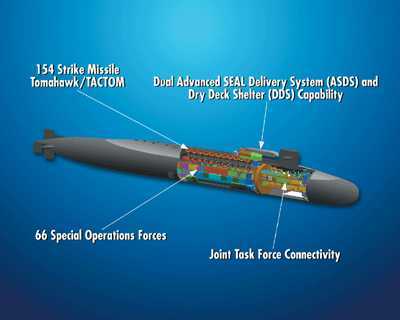
The special operators exit and re-enter the ship via the two lock-in/lock-out chambers. The chambers are 87 inches in diameter and contain showers at their base, permitting commandos to cleanse their gear of salt water or any other contaminant before re-entering the sub.
Once they reach the vessel's deck, they can enter a smaller vessel to set out on their mission. The Ohio is built to transport a [wet] SEAL delivery vehicle; its intended successor, an advanced [dry] SEAL delivery system and a dry-deck shelter.

The latter is a deck-mounted cylindrical shelter large enough to house one SEAL delivery vehicle or four rubber raiding craft. [EDITOR: that's 28 SEALs or 4 "squads" in their mindset; 3 x "Killer Bee" NOTAR helicopters could carry 21 SEALs]
An SDV is a manned [wet] submersible vehicle. The Navy has been using versions of it for at least 35 years to transport SEALs to and from subs.
Its [dry] replacement has been plagued by delays. One boat, called ASDS 1, was delivered in 2003, but a Government Accountability Office report said that it lacked an adequate propulsion battery and was not quiet enough for stealth operations. The Special Operations Command's deputy commander, Vice Adm. Eric Olson, told reporters in November that SOCOM was canceling plans for additional boats-at least for the immediate future-to concentrate on ironing out design problems with the existing one.
Meanwhile, the Ohio and her sister ships are serving as platforms to develop and test new weapons systems, sensors and operational concepts that could further transform naval warfare. In particular, the Navy is experimenting with unmanned underwater and aerial vehicles on SSGNs and other subs to conduct reconnaissance, surveillance and other missions.
During a 2003 exercise, the USS Florida-cruising in the Gulf of Mexico-launched a 28-foot unmanned underwater vehicle for use in transporting SEALs to the beach and keeping them supplied.
During a 2004 exercise off the coast of San Diego, the USS Georgia released two containers called stealth affordable capsule systems. Each contained a simulated UAV. Eventually, the Navy plans to launch UAVs from such capsules floating in the ocean.
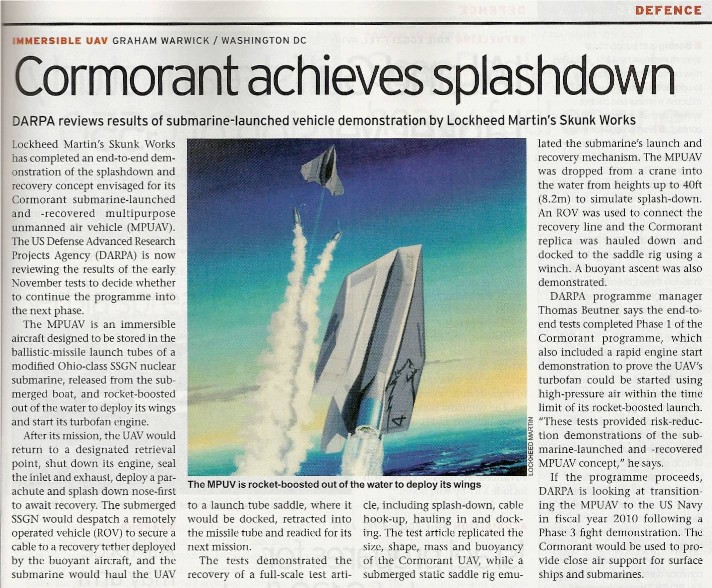
In August 2005, the USS Albany (SSN 753), while surfaced, released a UAV similar to the marine corps' five-pound Dragon Eye from its bridge, the first time that had been done from a submarine.
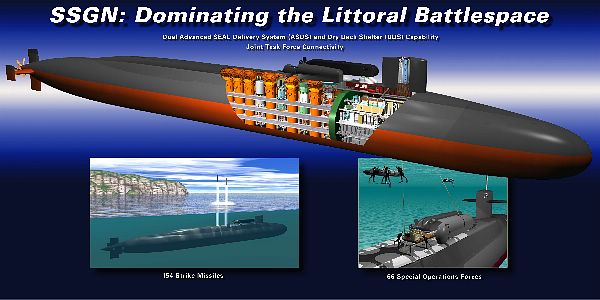
The Navy also is developing new weapons for use on SSGNs. In January, the Naval Sea Systems Command, in Washington, D.C., awarded Raytheon Integrated Defense Systems, of Portsmouth, R.I., a $19-million contract to develop a littoral-warfare weapon. This system could be launched from a sub to attack close targets in coastal waters, said NAVSEA spokesperson Linda O. Roberts. These include marine patrol aircraft, helicopters, high-speed patrol boats and other small craft.
The Navy in November 2005 tested a prototype of this system, using a Sidewinder AIM-9X missile at an Army base in New Mexico, Roberts said. The Sidewinder is a supersonic, heat-seeking air-to-air weapon normally fired horizontally from an aircraft. In this case, testers were able to launch one vertically from zero velocity, as would be necessary aboard a sub. The Sidewinder detected, tracked and destroyed an unmanned helicopter drone. It was the first AIM-9X to engage a target below 3,000 feet.
The littoral-warfare weapon system would fill a significant gap in the SSGNs' armory. The Tomahawk carries a 1,000-pound conventional warhead up to 1,500 nautical miles. It is designed primarily to destroy high-value or heavily defended inland targets, not a relatively nearby fast-moving small boat or aircraft.
The SSGNs also are armed with the Mark 48 torpedo, which is designed to combat fast, deep-diving nuclear subs and high-performance surface ships, making it inappropriate for small targets in the littoral, he noted.
During the cruise, the Ohio conducted a war game involving a simulated attack on Whidbey Island Naval Air Station. The station, which is home to several squadrons of electronic attack and reconnaissance aircraft, is located at the mouth of Washington's Puget Sound.
Lurking six miles offshore beneath the surface of the busy Strait of Juan de Fuca-the main entrance to the major ports of Seattle, Tacoma and Vancouver, B.C.- the Ohio carefully planned her attack. "We've been gathering data for the mission, and at the same time, trying to avoid getting run over by small boats," Cockey said. "Usually the only part of us you can see above water is the periscope."
In the war game, Whidbey Island is the site of a simulated weapons of mass destruction manufacturing and distribution facility. "We've seen the enemy's small boats headed ashore, and we've decided, 'Yes, they're distributing WMD,'" Cockey said. On his command, simulated Tomahawks were launched. In a real attack, the facility would have been destroyed.
Submerged quietly beneath a stormy sea-with winds reaching nearly 60 mph and waves eight to 10 feet high-the Ohio betrayed little sense of motion.
In fact, the stealth with which the Ohio carried out the exercise is typical of submarine operations, said Lt. Herlinda K. Rojas, spokesperson for Submarine Group 9. Unlike surface ships, such as carriers and destroyers, which proudly proclaim their identities, submarines carry no names or markings of any kind on their hulls, she said. "We don't want anybody to know who we are."
When the four conversions are complete, the Ohio and the Michigan will remain based in Bangor, while the Florida and the Georgia will be headquartered in Kings Bay, Drennan said. That will provide two SSGNs each to cover the Atlantic and Pacific regions.
Plans are for one sub to be on patrol constantly in each region, while the other is being refitted, he said. Each ship will be operated by two rotating crews, blue and gold, which will enable them to stay at sea for longer periods of time.
The Ohio's first six-month deployment is planned for 2007, Drennan said. At this point, he added, the destination has not been decided.
Meanwhile, the ship's technology continues to be upgraded. Under a 2004 contract, Northrop Grumman's Sperry Marine unit soon will replace the ship's traditional hand-drawn paper nautical charts with an advanced, interactive electronic navigation system, said Lt. Mike Slavik, assistant damage control officer.
With the electronic chart display and information system, sailors can see their ship's real-time, precise location and movement superimposed on a highly accurate electronic chart display. The result, Slavik said, will be improved safety at sea and enhanced situational awareness for the ship's watch standers. "But we'll always retain the ability to chart our location on paper," he said.
PAST PRECEDENTS
The best history of Submarine Aircraft Carriers is Strike from Beneath the Sea: A History of Aircraft Carrying Submarine (Images of Aviation) (Hardcover) by Terry C. Treadwell
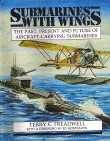
www.amazon.com/gp/product/0752417045/104-7588159-9575144?n=283155
He also has and excellent article "SUBMARINE AVIATION 1914-1964" on the web page below reprinted with permission from Naval Aviation News, February, 1983:
http://www.members.aol.com/reallycoolpix/SubmarineWings.htm
And as usual, it was indeed THE GERMANS, the world's most military minded who first tried submarines with aircraft in WW1 in COMBAT!
Then the British tried it...had a disaster and gave up...



www.hillbeck.plus.com/sa/Boats/Barrowbuilt/M_Class/
The British Navy amazingly had submarines with 12" battleship guns in WWI!. After the war one of these subs, the M2 was converted to carry a stainless steel Peto biplane fighter.
 www.youtube.com/watch?v=-PGXyxZV62M
www.youtube.com/watch?v=-PGXyxZV62M
This conversion was a success, and M2 could surface from periscope depth, open the hangar door, catapult the plane, close the door and dive again within five minutes. However, She was subsequently lost during exercises in the English Channel in 1932 when her hangar door was left open.
Then it was the French's turn...the Fascinating WW2 Combat History of the French Submarine Aircraft Carrier/8" gun cruiser the Surcouf
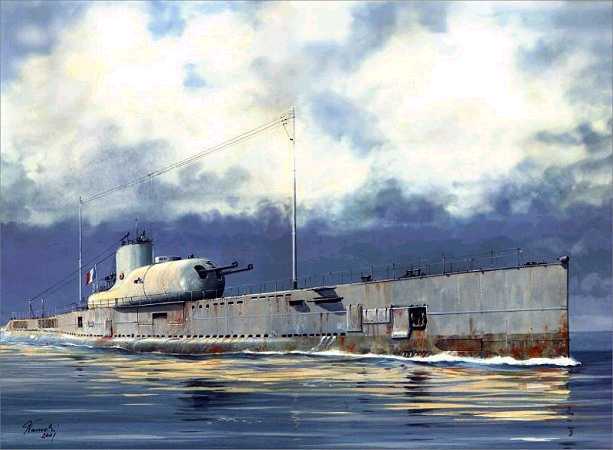
Beautiful painting of the Surcouf by Gregzorz Nawrocki
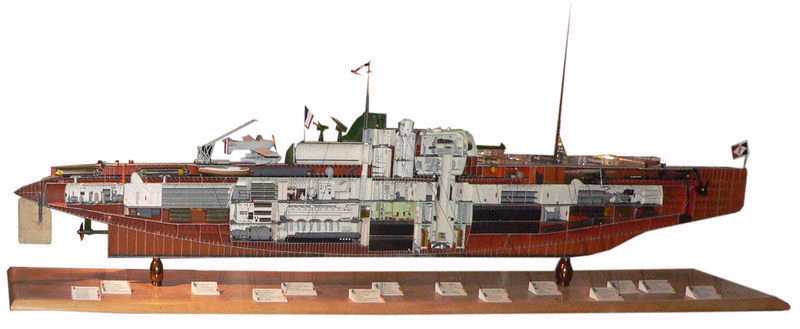
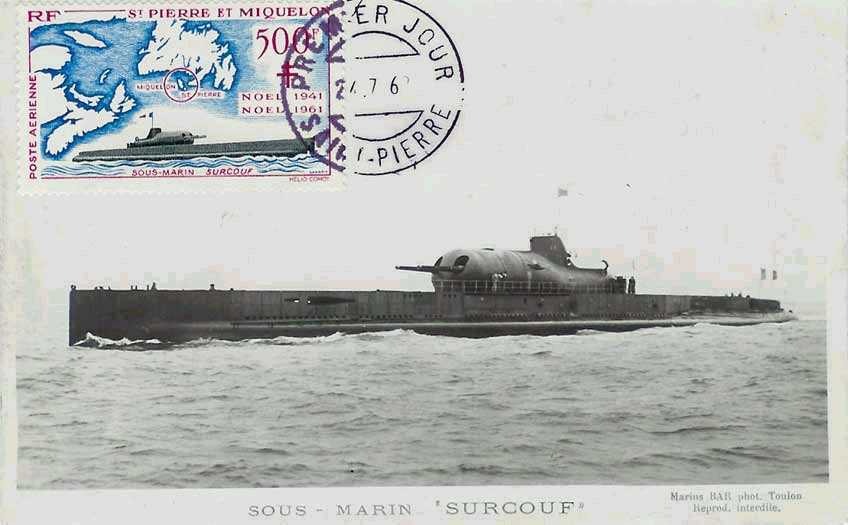
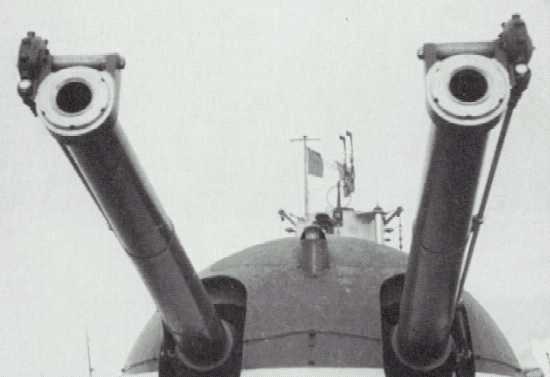
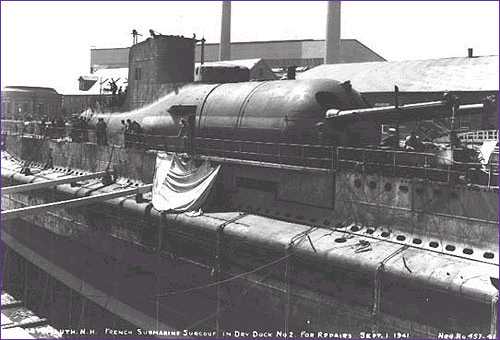
The Surcouf carried a MB411 float plane.
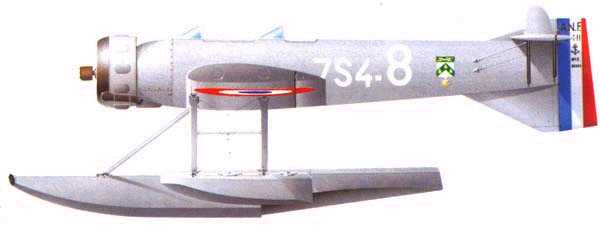
www.csd.uwo.ca/~pettypi/elevon/gustin_military/db/fr/MB410BES.html
Besson / ANF-Mureaux (411) MB.410
(France)Development of the MB 35. The MB 410 was an observation aircraft, to be carried by the 2880-ton submarine cruiser 'Surcouf' armed with two 203mm guns. The MB.410 was a low-wing monoplane with a single central float and two small stabilizing floats, that could easily be disassambled for stowage. One MB.410 and two MB.411s were built; one MB.411 was carried on board. After June 1940 both the Surcouf and the MB.411 were used by the Free French.
Type: MB-411
Function: observation
Year: 1937
Crew: 1-2
Engines: 1 * 130kW Salmson 9Nd
Wing Span: 12m
Length: 8.25m
Height: 2.85m
Wing Area: 22m2
Empty Weight: 760kg
Max.Weight: 1140kg
Speed: 185km/h
Ceiling: ?
Range: 345km
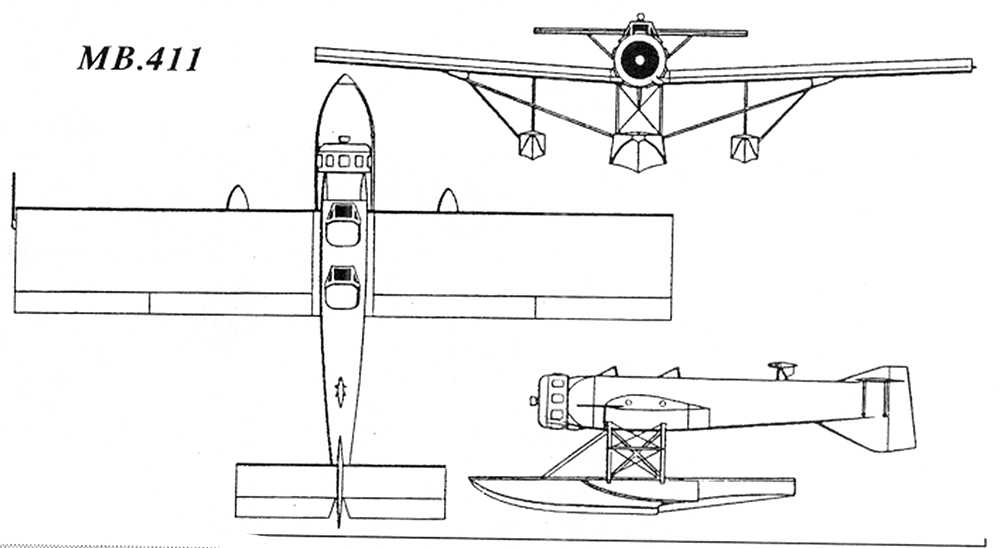
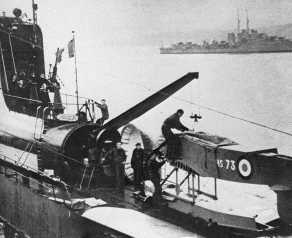
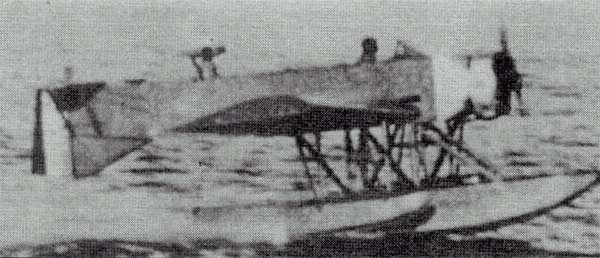
Wikipedia does a great job covering the Surcouf's amazing history:
http://en.wikipedia.org/wiki/French_submarine_Surcouf
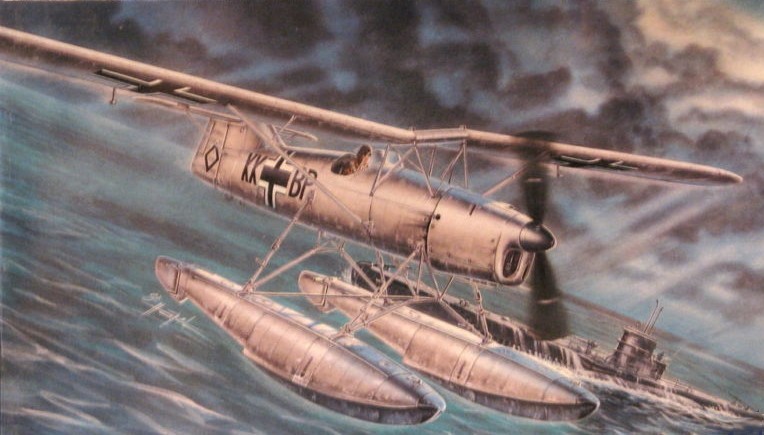
What about the Germans?

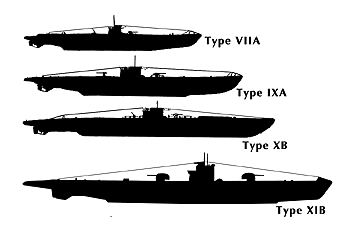
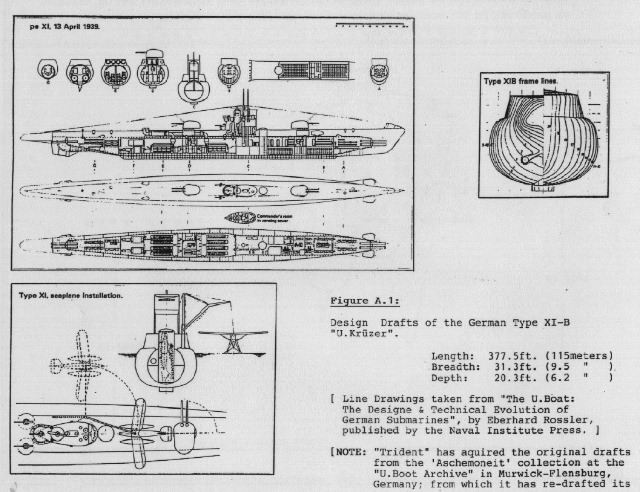
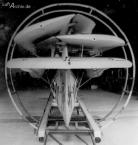

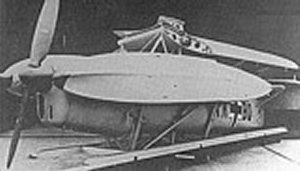
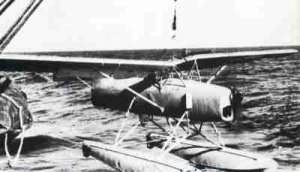

Contrary to popular delusion, the Germans launched ONE Type XIB Cruiser Submarine with twin 127mm (5") gun turrets that had one Arado Ar-231 seaplane for gunfire spotting. Ar-231s were also used by disguised-as-civilian-merchant-ship German raiders.


We know this because they used the unmarked Type XIB to conduct secret negotiations for selected Nazis to escape the crumbling 3rd Reich and to keep their international businesses intact with treasonous elements within the U.S. Government and the Dutch Royal family on shore at Cape Cod--and the sub was sunk by the USN airship K-25 such that the wreck is sitting now in just 60 feet of water.
 http://youtu.be/m1k1MFyaRjY
http://youtu.be/m1k1MFyaRjY
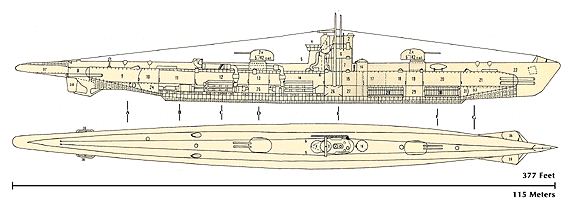

Post-WW2 Submarine Aircraft Carrier Experiments
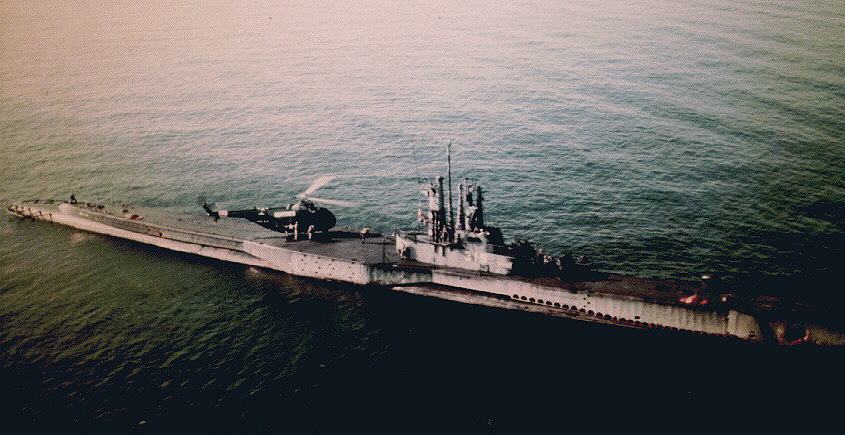
And the Japanese took the idea the furthest to date (see references).
The U.S. Navy ACTUALLY DID HAVE SUBMARINE AIRCRAFT CARRIERS IN THE 1950s!...the aircraft were UNMANNED cruise missiles...the Regulus missile boats...
The Saga of the Regulus Cruise Missile Submarines in U.S. Navy Service, 1953-1964
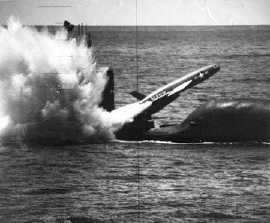
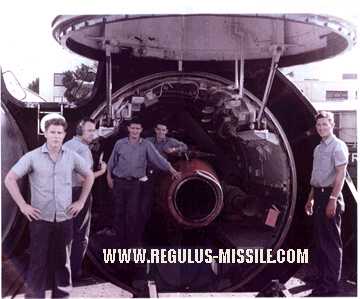
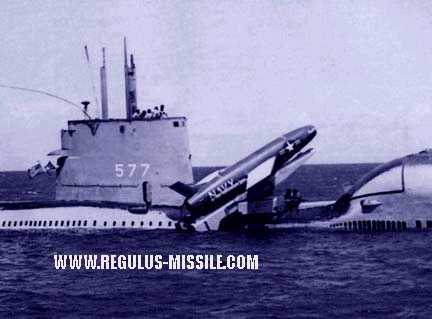
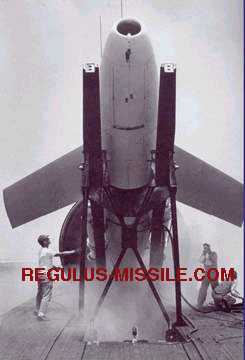
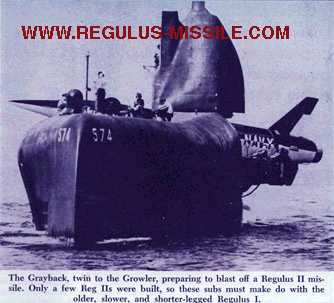
The whole UAV technohubris makes me want to puke. These assholes who think they are such "visionaries" when we had LARGER and MORE DEADLY Regulus "UAVs" in actual combat service from 1953 to 1964 on special USN submarines. The cruise missile egotists should eat some humble pie because Regulus predates Tomahawk by 2 decades, too.
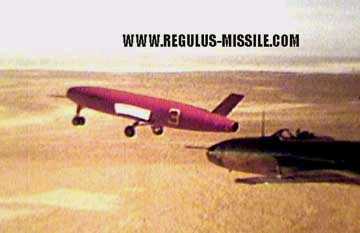
http://hometown.aol.com/ntspark/myhomepage/Regulus-Missile3.html
Notice the smart people at Vought had Regulus have LANDING GEAR so we wouldn't be throwing them away and could save money through re-use. The Tomahawk uses a parachute for training flight recovery but its not as damage free as an airlanding can be.
Since WE CAN AND WE HAVE launched AIRCRAFT (cut the "UAV", "UCAV", "cruise missile" semantics crap, anything with fixed-wings and flies is an airplane) the feasibility and need for submarine aircraft carriers is solid.
There were even some manned aircraft submarine interfaces in the 1950s...the P-6M SeaMaster jet seaplane bomber and R3Y Tradewind conter-rotating turboprop seaplane transports were able to be refueled by submarines...
The picture at the top of the post-WW2 sub-heading is the USS Sealion (APSS 315) off Little Creek, VA on 4 May 1956, with an H-19 helicopter on deck. Originally a WWII "fleet boat", Sealion served in various troop-carrying configurations postwar, including special forces transport. She carried several designations: SS, SSP, ASSP, APSS, and later LPSS.
The Guardians

"Everyone should be respected as an individual, but no one idolized."
--Albert Einstein
We recently saw an EXCELLENT film, "The Guardian" starring Kevin Costner a story about U.S. Coast Guard rescue swimmers that is exceptional on many levels.
www.amazon.com/Guardian-Kevin-Costner/dp/B000KF0GWW/ref=pd_bbs_sr_1/002-7581353-3596013?ie=UTF8&s=dvd&qid=1177246664&sr=8-1
www.amazon.com/gp/product/B000KF0GWW/ref=pd_cp_d_title/002-7581353-3596013?pf_rd_m=ATVPDKIKX0DER&pf_rd_s=center-41&pf_rd_r=07G78Y72V2FYVYBTMYNN&pf_rd_t=201&pf_rd_p=252362301&pf_rd_i=B00005JP9O
First, Costner's character when sent to take over rescue swimmer training school consciously decides to stop the "PT Test" make-believe non-sense and STICK TO REALITY'S PHYSICAL TASKS. You don't do push-ups or sit-ups or runs in t-shirts/shorts/running shoes when swimming in ice cold waters to rescue people any more than you would in combat. As Socrates said, the best way to learn is by DOING THE DEED. Next, as two trainees overcome the realistic training, Costner doesn't scowl them with the typical narcissistic, existentialist crap that "you haven't proven anything to me yet" he tells the man as a man, "good for you" as an ADULT would trying to get a difficult job done to save lives not egos and needing to grow a new generation to pass the torch to. The entire U.S. military should have such an adult, this-is-a-necessary-job-so-let's-stop-playing-pretentious-games outlook. Of course, the phony U.S. military is permeated with macho narcissism as the film shows when they go into a Navy bar where "combat" Sailors rough up the two young over-achievers. The Coast Guard faces DEATH every day not just when sent on a misguided corporate war every 10 years or so. And the Coast Guard does go to war and fights but this wasn't shown in the film.
"Insanity: doing the same thing over and over again and expecting different results. We cannot solve our problems with the same thinking we used when we created them."
--Albert Einstein
The primary reason why we're writing this proposal though is from a realization Carol Murphy told me as she saw the film during an underwater camera angle; "Notice how peaceful it is under the water yet on top look how violent it is". It was so violent on top, that Costner's SH-60 JayHawk helicopter was hit by a wave and a chunk of debris while hovering over a threatened fishing ship trying to do a winch & basket rescue. The helicopter's tail was knocked off, it exploded (of course, helicopter always blow up in the movies) and crashed into the water in flames, killing everyone aboard. A Coast Guard C-130 fixed-wing aircraft is dispatched to the scene and drops an inflatable life raft ("Gee, thanks!") to float Costner and the crew chief who was thrown out during the crash. IMHO both should have had LPU-18 one-man life raft kits on their persons, but the latter dies and this sends Costner to the swimmer school for a much needed recuperation.
The film is excellent except for the "official" ending which we say REJECT and accept the alternative ending offered on the DVD. Suffice it to say, that when you factor in the other Hollywood retelling of hovering USCG helicopter rescue in the film, "The Storm of the Century" based on a true incident where a helicopter runs out of gas (JP-8) and crashes into the water with tragic consequences, an objective observer has to question the whole validity of the helicopter hovering rescue approach.
We do. The conventional helicopter to get VTOL lacks the speed and range to be an adequate rescue means, to be more direct, ITS BULLSHIT. 100 mph for 300 miles ain't shit when it comes to OCEANS spanning THOUSANDS of miles. And when ships are in danger from rough seas, at best snatching a handful of men isn't shit when there's a DOZEN men needing rescue. We fault the USCG because they at one time knew better. We fault the USN for they started the whole lazy helicopter VTOL rescue shit when they chickened out and stopped flying SEAPLANES. In an all-out war at sea, HUNDREDS even THOUSANDS of men are going to be thrown into the water and the solution is lots of long-range, FAST seaplanes which we had in WW2 and THOUSANDS of lives were saved. The USN refusing to operate seaplanes for ASW/CSAR/seamining is a basic dereliction of its duties to do naval warfare right and this also applies to the USCG, too for rescue. When Costner's chopper went down, the fixed-wing C-130 was there in an instant but could only drop a raft because it couldn't land on the water. In the previous the sea-sucks movie, a C-130 had the fuel to keep the pathetic helicopter flying but the weather was so rough they couldn't connect in flight. There's no excuse why the USCG doesn't get some balls and ask Congress for some money to invert C-130 engines, watertight the fuselage, add PBY-style retractable wingtip floats and either Pantobase skis or air cushion landing systems
and BLC like the Japanese Shin Meiwa seaplanes have to take-off and land at very, very slow speeds to create a long-range rescue seaplane capability.
www.combatreform.org/p6mseamaster.htm
www.combatreform.org/seaplanetransports.htm
Now you might say; "the seas were/are too rough for seaplanes to land" yadda yadda. OK, first YOU HAVE TO HAVE THE SEAPLANES TO KNOW WHAT SITUATIONS YOU CAN DO AND WHAT YOU CAN'T DO. Since we've never did seaplane with the technologies we have today we don't know what we can and can't do and I dare say the margin is a lot more than you realize especially if you worship the status quo and want to sit on your ass undergirded by the laurels and hard work of better men than you ie; your mind is at best narrow if not totally closed.
The fact of the matter is that the ENTIRE CONCEPT OF BEING ON THE SURFACE OF THE WATER IS UNSAFE AND UNSOUND.
Read what we just said again.
Question.
HOW MANY ANIMAL LIFE-FORMS ON PLANET EARTH THAT GOD CREATED LIVE 24/7/365 ON THE SURFACE OF THE OCEAN?
Think hard.
Think some more.
The answer is NONE.
Nadda. Zero. Zilch. Uhh-Uhh. The surface of the ocean is where the air atmosphere and land meet and VIOLENT WEATHER ENERGY CONFLICTS TAKE-PLACE HERE. God does not have ANY of his creatures live on the water's surface, they are all UNDER THE WATER where there is no rough seas. Forget Costner's other, forgetable movie "WaterWorld" the only humans living continuously on the ocean surface are humans (oil platforms) and THEY AIN'T HAPPY ABOUT IT. ALL of his sea creatures, even his air breathing ones can stay for long times under the water. Yet MAN, greedy and lazy chooses to FIGHT against the ocean instead of working with it by trying to stay precariously on top where there are violent medium energy collisions. He is asking for trouble. He is asking for ship collisions, too since the surface of the water is a flat, two-dimensional plane more restricted than the three dimensions under the water. When God instructs man to make a surface vessel---Noah's Ark, its a giant LIFEBOAT, a desperation means with violent weather resistance the number #1 design requirement.
RESCMIN: Guardians from Under the Sea
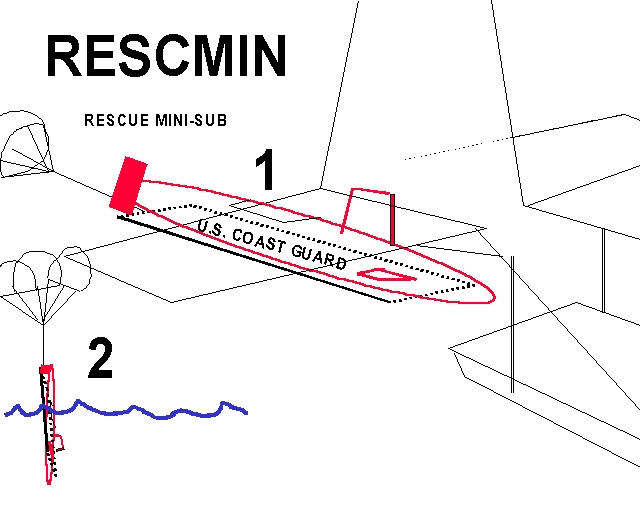
So here is what we propose. Since there are going to be situations where even the best seaplane cannot land, instead we drop a "Jonah's Wale" from the C-130 (20 tons payload) or a larger C-17 (80 tons of payload) to gobbble up the "Jonahs" that jump off of endangered ships and reel them in UNDER THE WATER where there is no longer any storms. The rescue mini-submarine need not be heavy since it need not dive deeper than 100 feet.
"C-130 stuffer" ABCC Pod in use for many years
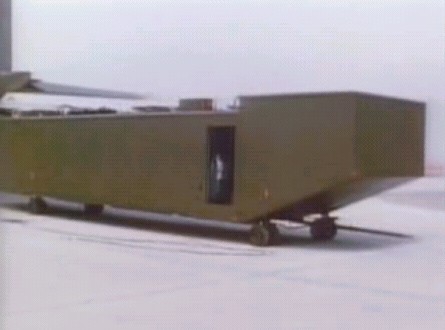
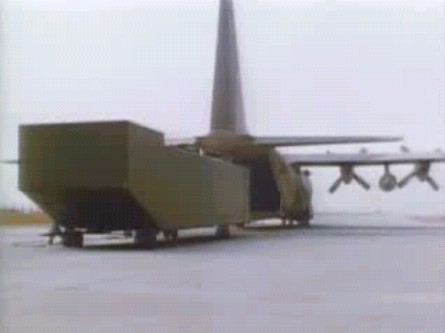
Flying by C-130J (400 mph) or C-17 (500 mph), the USCG can fly rapidly to the scene of the ship in danger and then deploy at 600-900 feet the rescue mini-submarine (RESCMIN) in-flight by LVAD---a drogue chute to yank it out of the rear ramp and then deploy a large cluster of cargo parachutes to point it nose down so it will pierce into the water like a giant sonobuoy.
Will this be dangerous?
Fuck, YES this will be dangerous for the 4-man crew of two submariners and two combat swimmers.
If you want to avoid all danger, take a gun and kill yourself now and get it over with since you lack the fundamental courage to live life here on earth with any meaning or purpose. But we dare say no more dangerous than the whole jumping-with-fins-from-a-hovering-helicopter-and-trying-to-winch-people-aboard-before-it-runs-out-of-gas clusterfuck. Once the RESCMIN is there on the scene, it can remain there for DAYS even long enough for the storm to pass. The RESCMIN would possibly have a flat plate-shaped bottom so it would be its own integral Type V airdrop platform to roll out from the C-130/C-17 eliminating the time/complication of strapping it to a separate Type V. Now when it hits the water, a means to disconnect the parachutes implies the only disposable cost for deployment is the parachutes of several thousands of dollars. Parachute costs could be minimized to just a drogue chute if LAPES at 5-10 feet above the sea is used but this is problematical if the seas are rough causing the need for someone to be rescued. At some point it may be possible to extend a single or double set of wings after the RESCMIN deploys out the C-130/C-17 and have it glide to a landing or dive into the water and eliminate the disposable parachute costs.
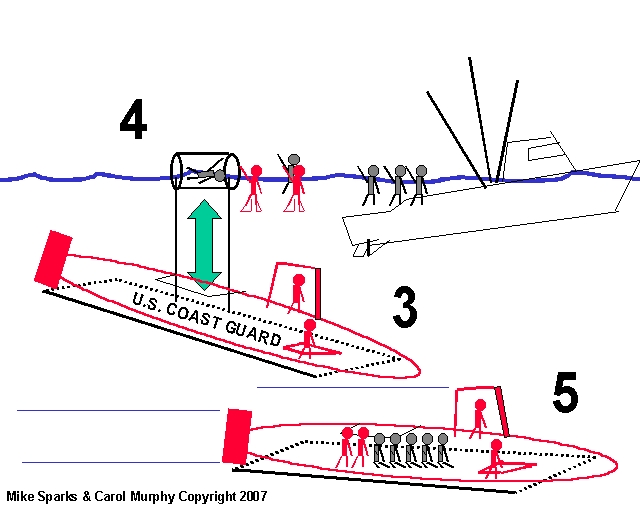
Once underway, the RESCMIN would pull up alongside the threatened ship a prudent distance under water and deploy its rescue swimmers to the surface to convey the rescuees into the watertight rescue capsule on a cable so they can be reeled down to the sub to dry off, warm up etc. The RESCMIN would be able to rescue at least a DOZEN people and then using air independent propulsion (AIP) means swim back to shore at 10 knots under the water. This might be the way to get a non-nuclear submarine into U.S. service without threatening the Rickover nuclear sub racketeers. Depending on space there can be life support means like oxygen, defib paddles, drugs etc. that the rescue swimmers with medical skills upgraded to advanced paramedic or PA levels can use to stabilize injured patients. Look, if we are going to have cargo ships get in trouble in the sea surface, we need rescue means LARGE ENOUGH to rescue a cargo ship CREW not a pathetic handful and God-playing drill using limited helicopters. If the USCG would get off its ass and develop a seaplane C-130/C-17 and the RESCMIN it will be advancing the state-of-the-art and truly be the "guardian" from the movie who instead of pushing the drowning man up in the nick of time, it pulls him DOWN in a capsule and saves him like Jonah's wale by making him a "fish" properly adapted to the sea---and taking him to shore for a more pleasant delivery than what we read about in the good book.
We are not done yet.
Once an aircraft-seaplane/RESCMIN capability were fielded it opens possibilities for combat use by the military NAVSPECWAR community to insert/extract combat swimmers. The RESCMIN could be deployed piggy-back on top of a SSGN spec ops Ohio class nuclear submarine. The seaplane C-130/C-17 could land on the water to deploy SEALs in small boats or with fins/masks and possibly underwater breathing gear to shore or to raid ships and oil platforms. Together, the seaplane or even a land plane could deploy SEALs in a RESCMIN perhaps redubbed "COMBATMIN" to do covert insertion/extractions for missions at a greater stealth stand-off than direct delivery from the seaplane alone or much faster than from a 30 mph nuclear submarine if we are in an operational hurry.
How about Flying Submarine Aircraft?
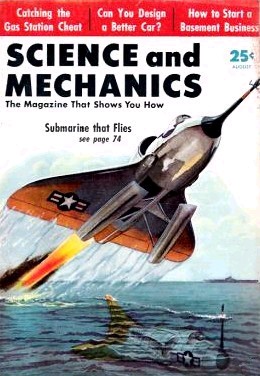
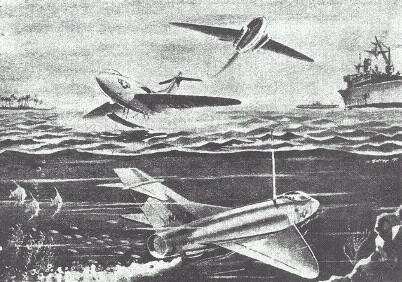
However, no submarine aircraft carrier web page would be complete without Irwin Allen's 1960s TV series, "Voyage to the Bottom of the Sea" with its flying submarine!
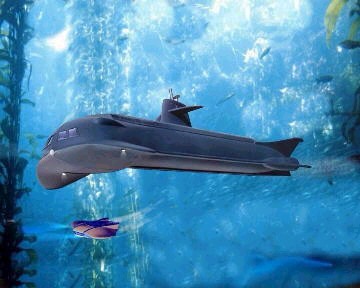
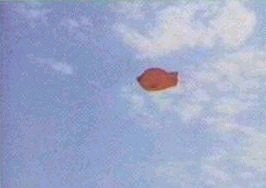
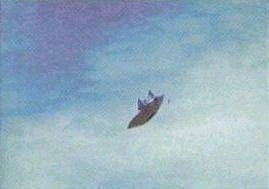
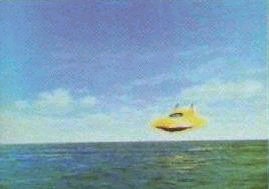
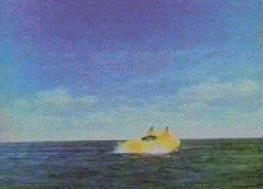
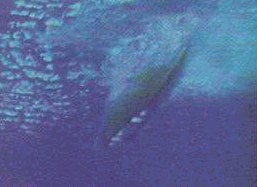
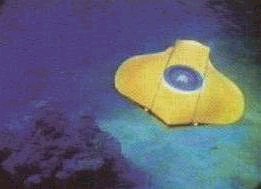
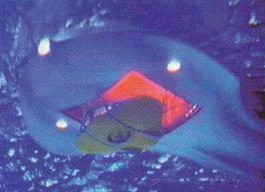
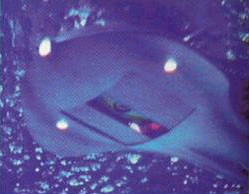
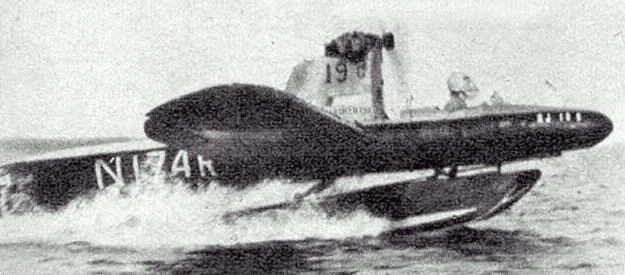
Here's his 1963 google U.S. patent #3, 092,060
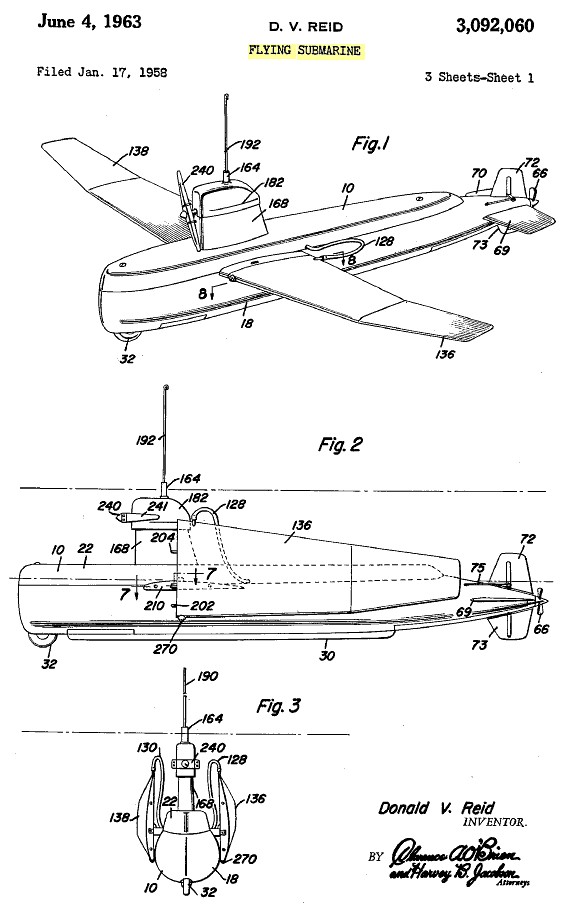
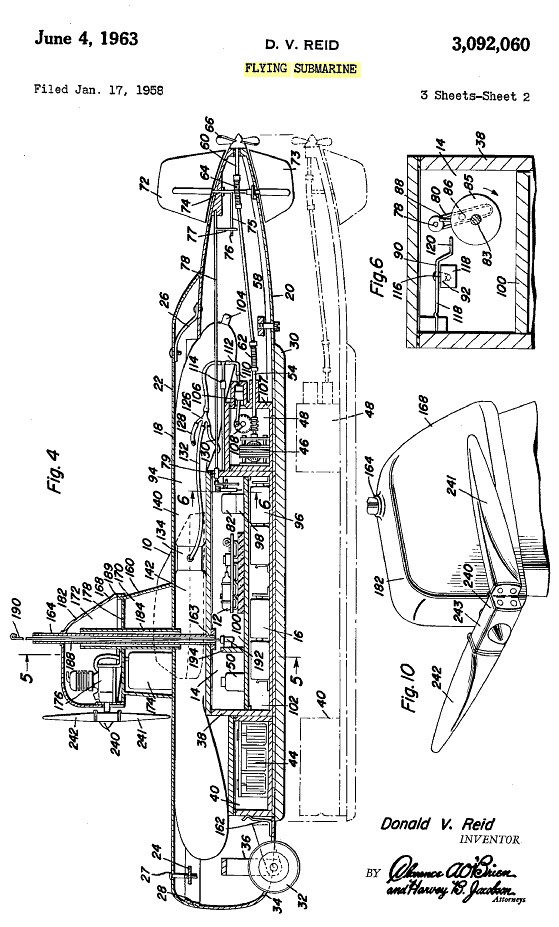 www.google.com/patents?vid=USPAT3092060&id=ZVZpAAAAEBAJ&dq=flying+submarine
www.google.com/patents?vid=USPAT3092060&id=ZVZpAAAAEBAJ&dq=flying+submarine
This led to many others to try...
www.subpirates.com/viewtopic.php?t=2025
Post subject: A "flying" Submarine - Soviet style [ROUGH TRANSLATION]
By Gennadi Petrov.
In the middle 1930- X it is annual in the Soviet Union they approached the creation of powerful navy, which provided for the building of battleships, aircraft carriers and ships of other classes. This stimulated the appearance of the fundamentally new, uncommon technical and tactical solutions. In particular, was proposed the idea to create the apparatus, which combines the properties of submarine and aircraft.
In 1934 the cadet OF VMIU im. Dzerzhinskiy Of b.P.Ushakov presented the schematic design of the flying submarine (LPL), which was subsequently pererabotan and it was represented in several versions for determining of stability and loads on the elements of the construction of apparatus.
During April 1936 in the opinion of the captain of 1 ranks Surina was indicated that Ushakov's idea was interesting and deserves unconditional realization. Through several months, during July, polueskiznyy project LPL was examined in the scientific research military committee (NIVK) and obtained in the positive integer opinion, which contained three additional items, one of which said: "... the development of design it is desirable to continue in order to reveal the reality of its realization by carrying out of the corresponding calculations and necessary laboratory tests..." Among those signed document there were the chief Of nIVKa of voyeninzhener of 1 ranks Of grigaytis and the chief of the department of the tactics of military equipment the flag officer of 2 ranks the professor of potters.
In 1937 the theme was included in the plan of division "into" NIVKa, but after his revision, which was very characteristic for that time, they refused from it. Entire further development was conducted by engineer of division "in" by the military technician of 1 ranks B.P, by Ushakov in the off-duty time.
On 10 January, 1938, in 2- m the division Of nIVKa did take place the examination of sketches and basic tactical-technical elements LPL, prepared by the author, however, that was the project? The flying submarine was intended for the destruction of the ships of enemy in the open sea and in the water area of the sea bases, protected by minefields and checks. Small underwater speed and limited action radius under water LPL were not obstacle, since in the absence of purposes in the assigned square (region of action) boat could itself find enemy. After determining from air its course, it sat down itself beyond the horizon, which excluded the possibility of its premature detection, and it were immersed on the track of ship. Before the appearance of a purpose at the point of volley LPL it remained at the depth in the stabilized position, without expending energy by excess motions.
In the case of that permitted otklo of neniya of enemy from the course line LPL it went to the rapprochement with it, and with the very large deviation of target boat passed it beyond the horizon, then it floated, it took off and again it were prepared for the attack.
The possible repetition of approach to target was considered as one of the essential advantages of the underwater- air torpedo bomber over traditional submarines. Especially effective it had to be the action of the flying submarines in the group, since theoretically three such apparatuses created on the way of enemy the impervious barrier by width to nine miles. LPL could penetrate at night the harbor and the ports of enemy, be immersed, and in the daytime conduct observation, direction-finding of secret fairways and with the opportunity attack. In the construction LPL were provided for six autonomous sections, in three of which were placed the aircraft engines AM-34 a with power of 1000 hp each each. They were supplied with the superchargers, which allowed boosting in the takeoff conditions to 1200 hp the fourth section was habitable, calculated for the command of three people. Control of vessel under water was conducted from it. In the fifth section was located storage battery, in the sixth - rowing electromotor by power 10 l,s. Durable housing LPL was cylindrical riveted construction with the diameter of 1,4 m from duralumin with a thickness of 6 mm. besides the durable sections, boat had wet type pilot's light cab, which with the sinking was filled up with water, in this case flying instruments battened down in the special mine.
Skin it is wing and the tail assembly it was intended to carry out made of steel, and floats from duralumin. Etielementy of construction not were calculated for the increased external pressure, since with the sinking they were heated by the sea water, which entered by drift through the scuppers (openings for the drain of water). Fuel- (gasoline) and oil were stored in the special rubber reservoirs, which were being located in the center section. With the sinking that moving and that discharges the mains of the water cooling system of aircraft engines overlapped, which excluded their damage under the effect of pressure of outboard water. The painting and varnishing of its skin was provided for for the protection of housing from the corrosion. Torpedoes were placed under the outer planes of wing on the special holders. The design payload of boat composed 44,5% of the total gross weight of apparatus, which was common for heavy type machines.
The process of sinking included four stages: the sealing down of motor sections, the overlapping of water in the radiators, the transfer of control into the underwater and transfer of crew from the cab into the crew quarters (central control).
Tactical flight characteristics LPL.
Crew, man. 3
- 18- in torpedo, pieces. 2
WIG seaplane + submarine?
A transformation of the design of the submarine could offer intriguing possibilities of "flying" hydrodynamically. One approach could involve replacing the submarine's traditional "body of revolution with fins and a conning tower" configuration with a delta wing blended into a relatively high fineness ratio hull. There would still, of course, be a requirement for hydrostatic lift, for, unlike an airplane, a submarine in deep waters cannot descend to a benign environment.
But developing "flying" submarines would take fullest advantage of the three-dimensional environment in which the submarine operates, permit the design of more efficient vessels, and give to them a flexibility unknown even in the modern era of relatively sophisticated underwater design. Finally, it might even be possible to design a fully three-dimensional vehicle that could take advantage of both the underwater and the aerodynamic environment, operating as a submarine and then, instead of cruising the surface, functioning as a WIG sea-skimmer or, even, a fully fledged aircraft. While the operating rationale for such craft would have to be well-thought-out, the tremendous flexibility possible with such craft might well warrant their development in the next century.
REFERENCES
1. www.afa.org/magazine/March2004/0304sub.html
March 2004 Vol. 87, No. 3
War produces many strange results. The submersible aircraft carrier was one.
Flights From the Deep
By Norman Polmar and Kenneth J. Moore
Two revolutionary weapons were introduced early in the 20th century: the airplane and the submarine. Combining the two took some imagination and lots of ingenuity.
The first rudimentary steps toward the combination took place during World War I. The British and German navies used standard submarines that carried floatplanes on the surface that would then submerge just enough to float off the aircraft. After carrying out their mission, the aircraft would return to a land base or put down at sea, where they were scuttled after the pilots were recovered.
Between the world wars, three other countries began to take an interest in placing aircraft on subs. France, Japan, and the United States experimented with subs and floatplanes. Their approaches varied, and, while most efforts might be described as dilettante, Japan managed to produce a system in World War II that could deliver an aircraft to within striking distance of the U.S. mainland.
Britain continued its earlier work, converting the large submarine monitor, designated M2, to carry a floatplane. France built the submarine cruiser Surcouf with large guns to attack merchant ships and a floatplane to search out targets. The U.S. Navy modified the submarine S-1 for experiments with a collapsible floatplane that could be stowed in a hangar on deck.
The more extensive work, however, was begun in 1923 by Japan. It first used two German Caspar-Heinkel U-1 biplanes, fitted with floats, to conduct trials aboard a submarine.
It then developed a series of floatplanes for submarine use, beginning with the Watanabe Type 96 (E9W1), which entered service in 1938.
This biplane aircraft and the monoplane Yokosuka Type 0 (E14Y1), which entered service in 1941, had far-reaching service in the Pacific in the early years of World War II. (The Yokosuka Type 0 was given the Allied codename Glen.)
By the start of World War II, Japan's Navy had 12 large I-series submarines that could each carry a single floatplane. Japan didn't stop there. It had more aircraft-carrying submarines under construction, of which several became operational during the war.
The new subs had hangars for a single, disassembled floatplane, with a catapult built into the deck. The submarine surfaced, the crew extracted the aircraft from the hangar, extended the wings, prepared it for flight, and catapulted the airplane off the sub. After completing their mission, the crew would land the aircraft in the water alongside the submarine, where it would be hoisted aboard by a crane.
These airplanes flew missions throughout the southwest Pacific and Indian Ocean areas, seeking Allied shipping and performing reconnaissance of Allied ports.
To the United States
In 1942, Japan extended operations to the U.S. mainland.
The Japanese submarine I-25 twice launched a Yokosuka Type 0 monoplane from a position off Cape Blanco, Oregon, on incendiary bombing raids against the United States. The goal was to ignite forest fires in the northwestern United States.
On these two missions, both piloted by Warrant Flying Officer Nobuo Fujita, the aircraft flew about 50 miles inland, where Fujita released incendiaries. The missions failed. There were no major fires and no casualties.
These were the only known aircraft attacks mounted against the continental United States during the war. Japan also employed large submarines to refuel seaplanes, including two flying boats that bombed Pearl Harbor on the night of March 3-4, 1942.
Japan continued to pursue the submarine-aircraft combination, building even larger subs intended to carry aircraft to bomb Washington, D.C., and New York City.
In 1942, Japan began construction of the I-400 class-the Sen-Toku (STo) or special submarines. These were the largest non-nuclear submarines ever constructed. They had a surface displacement of 5,223 tons and were 400.25 feet long-a length not exceeded by submarines until the nuclear-propelled submarines of the mid-1960s. The I-400s were propelled on the surface by diesel engines and submerged by electric motors, which obtained their energy from batteries. While the first I-400s were under construction, the changing course of the Pacific war caused Japan to change the I-400 mission from strikes on Washington and New York City to the Panama Canal. Japan wanted to slow the flow of U.S. warships into the Pacific.
The original 1942 design of the I-400 provided a hangar to accommodate two floatplanes, but it was enlarged to handle three aircraft. The aircraft hangar, beneath the conning tower, opened to an 85.4-foot catapult track forward of the hangar. The aircraft were pre-warmed in the hangar, while the submarine was still submerged, by circulating heavy lubricating oil through their engines. The submarine then surfaced to launch aircraft.
Japan planned 18 of the I-400 class submarines, completing the first in December 1944. The I-401 and I-402 followed in 1945. However, the I-402 was converted to a tanker configuration to carry fuel from the East Indies to Japan. The war ended before the I-402 undertook a tanker mission. Japan launched a fourth, the I-404, but work on the sub stopped in March 1945 when it was 90 percent complete. U.S. carrier-based aircraft sank the I-404 at Kure, Japan, on July 28, 1945. None of the other 12 I-400s reached the launching stage.
Unique Aircraft
Complications also arose with the aircraft-the high-performance Aichi M6A1 Seiran floatplane-that Japan was building for the I-400 submarines. The Seiran, which translates to "mountain haze," would be the world's only attack aircraft built specifically to operate from submarines. (The Allies did not learn of the aircraft until after the war, so it had no Allied codename.)
The single-engine Seiran was 38 feet long and 15 feet high, with a wingspan of just more than 40 feet. It weighed 7,277 pounds empty. It had to fit inside an 11.5-foot cylinder-shaped hangar, so a ground crew rotated the wings, then folded them to lie flat alongside the fuselage. They could also fold each side of the horizontal stabilizer and the vertical stabilizer part way.
The aircraft's initial specifications called for no undercarriage. There were provisions for support pylons with floats that would enable the aircraft to land on the water but limited its payload to one 551-pound bomb. The Seiran could be launched without the pylon-attached floats, but then the pilot would have to ditch at sea. Without the large pylons and floats, the aircraft could carry one torpedo or 1,760-pound bomb or two 551-pound bombs.
During practice, the time to unfold the aircraft's wings and tail surfaces and ready it for launching-in darkness-was less than seven minutes. The three aircraft could be readied for flight and launched within 30 minutes of the submarine coming to the surface. Although, even at night, this was a long time for the submarine to be exposed, it was a remarkable achievement.
The giant submarine had a magazine that could hold four aerial torpedoes, three 1,760-pound bombs, and 12 550-pound bombs. Beyond its aircraft weapons, each I-400 was armed with eight 21-inch torpedo tubes forward and carried 20 torpedoes. Each sub also had one 5.5-inch deck gun and 10 smaller anti-aircraft guns.
Japan also modified two slightly smaller AM-class submarines, the I-13 and I-14, to embark two M6A1 aircraft. The I-13 and I-14 were intended to operate with the I-400s in long-range air strikes.
Finally, on July 26, 1945, the I-400 and I-401-with their six attack aircraft-sortied from the Inland Sea to strike the U.S. naval anchorage at Ulithi Atoll in the Caroline Islands in an operation called Hikari. The I-13 and I-14 preceded them, each with two aircraft to fly from Truk Island to scout the lagoon at Ulithi before the attack. (The I-13 was sunk before reaching the area.)
However, the war in the Pacific ended on Aug. 15, two days before the planned strike. The submarines returned to Japan to be surrendered, along with their sister ships, to U.S. forces.
Japanese plans for these underwater aircraft carriers-had the war continued-included replacing their Seiran aircraft with Baka rocket-propelled suicide aircraft. There were unconfirmed reports of proposals to use the submarines to launch aircraft carrying biological agents against the United States.
U.S. naval officers studied the I-400 submarines after the war. One idea was to convert one or more of these giants to transport submarines. However, to meet U.S. Navy safety standards and rehabilitate the ships would take six months of yard work and would cost some $750,000 per submarine. This did not include later modifications that would be needed to use U.S. electric batteries for underwater propulsion. In the end, the work was not undertaken, and all three I-400s were sunk or scrapped.
Shortly after World War II, the United States showed little interest in pursuing some form of aircraft-carrying submarine. A 1946 submarine officers conference noted, "No design studies should be made on this type of submarine at this time unless the Chief of Naval Operations believes that the need for such a type submarine may be required in the near future."
The Soviet Union, however, took an initial step. In 1948, the Soviets developed a draft design for Project 621-a large landing ship-transport submarine-that, in addition to a battalion of troops, tanks, and vehicles, was to carry three La-5 fighter aircraft in a hangar built into the conning tower. The aircraft would be launched by catapult. Project 621 was the only known Soviet aircraft-carrying submarine to reach that stage of design.
Although, as it turns out, the Soviets never took the project beyond design, in the early 1950s, U.S. intelligence agencies did give credence to the possibility of a submarine-launched nuclear air attack against Strategic Air Command bomber bases.
Wiping Out SAC?
In 1953, a secret Project RAND study-sponsored by the U.S. Air Force-concluded, "Using the submarine-launched or low-altitude Tu-4 [land-based bomber] surprise attack, the enemy can destroy a major part of SAC potential at relatively small cost in A-bombs and aircraft. With no more than 50 aircraft and bombs, two-thirds or more of SAC bomber and reconnaissance aircraft could be destroyed." (Italics in original.)
The RAND study postulated that Soviet submarines each would carry one aircraft with performance similar to the North American F-86 Sabre, a Mach 1 [in a dive] fighter aircraft that in its F-86H variant would be able to carry a nuclear weapon. In a submarine-launched attack, each Soviet aircraft, armed with a 40-kiloton bomb (i.e., more than twice the explosive power of the Hiroshima A-bomb), could strike all occupied SAC bomber bases in the U.S. and overseas within about 800 miles of the coast. Most bases in the continental United States and 15 overseas SAC bases could be targets of the proposed submarine attack. Only eight of 39 U.S. strategic bomber bases were beyond the 800-mile range.
Further, the RAND study estimated that Soviet aircraft, with only a slight increase in size over the U.S. F-86, would provide a range of about 1,380 miles, enabling attacks on the remaining eight continental SAC bases.
The study estimated that, if the attack against Stateside bases came without warning, the Soviets would be able to destroy all heavy bombers (B-36) and 76 percent of the medium bombers (B-47). If the U.S. had warning-defined as about one hour-the submarine-launched strike would still destroy 100 percent of the heavy bombers as well as 73 percent of the medium bombers. Overseas SAC bases would fare slightly better because their larger size would make aircraft on them less vulnerable to 40-kiloton bombs.
Such a Soviet submarine-launched aircraft strike existed only in the deliberations of the RAND study group.
Meanwhile, in the U.S., the development of nuclear propulsion sparked some interest in aircraft-carrying submarines, prompting the Office of Naval Research to issue a solicitation for proposals. In response, Edward H. Heinemann, an aircraft designer who preferred to be called an innovator, developed a series of design sketches for a fighter aircraft that could be carried aboard the nuclear-powered submarine Halibut that had been specifically designed to carry and launch guided ballistic missiles. Halibut was commissioned in January 1960 and could carry four Regulus II missiles in a massive bow hangar.
British SR1 fighter seaplane
Heinemann proposed mating a flying boat hull like this SR1 has to the bottom of his SkyHawk (above top) to provide a submarine carrier fighter-bomber.
Heinemann's sketches (see above) indicated how a new-design aircraft or his versatile Douglas A4D Skyhawk could fit into the submarine's hangar with minimum modification. The basic Halibut hangar was 80 feet long. The new-design aircraft was the Douglas model 640, a turbojet attack aircraft with a flying boat hull. It would be catapulted from the surfaced submarine, would come down at sea, and would be recovered aboard the submarine by a telescoping crane. Depending upon modifications to the hangar, the aircraft's wings, tail fin, or nose section would fold for shipboard stowage.
Flying Carpet
The Navy did not pursue Heinemann's proposals, but there were several other proposals for nuclear-propelled, aircraft-carrying submarines. The Navy's aircraft development office-the Bureau of Aeronautics-sponsored the most ambitious one, called Project Flying Carpet.
Boeing Aircraft Co. undertook the extensive feasibility study of aircraft-carrying submarines for the project. The secret study employed, initially, hangar configuration and hull lines based on the Halibut design and the S5W propulsion plant used for the Thresher-type submarine.
The Boeing study proposed a near-term submarine carrier configuration-designated AN-1-that would carry eight high-performance aircraft in two large hangars, built into the forward hull. The nuclear-propelled submarine would be some 500 feet long and displace 9,260 tons on the surface-larger than any U.S. submarine then planned, including the 380-foot-plus Polaris ballistic missile submarines.
The starting point for AN-1 aircraft would be a modified Grumman F11F Tiger turbojet fighter. The aircraft's standard folding wings (for carrier use) would be supplemented by a folding tail fin, and it would employ a large rocket booster for launch from a "zero length" catapult. The catapult would be elevated to the vertical (90 degrees) to launch aircraft. The pilot would climb into the aircraft while it was still in the hangar, then an automated system would move the aircraft onto the catapult.
The aeronautics bureau conducted a feasibility study to investigate the submarine weight, stability, and equilibrium using an F11F conventional aircraft stowed in the Regulus missile hangar of USS Grayback. Grayback could carry two Regulus II missiles, one in each of two hangars faired into her forward superstructure.
The plan was, eventually, to replace the Mach 1+ F11F fighter with a Mach 3 aircraft. The aircraft would land aboard the submarine through the use of an innovative hook-and-cable arresting system. An aircraft that had to set down at sea could be brought back aboard the submarine by crane.
Initially, designers expected each aircraft-carrying sub to be able to haul aircraft fuel, weapons, and other stores for 10 missions per aircraft-a total of 80 missions per submarine. That estimate grew during the preliminary design process to at least 160 missions, with only minor changes in the submarine design.
Designers developed a subsequent AN-2 variant aircraft-carrying submarine with similar hull lines to the AN-1, but the AN-2 would operate vertical takeoff and landing aircraft. The sub would carry these VTOL aircraft in eight vertical hangars built into the hull forward of the sail structure. The below-deck configuration of the AN-2's forward hull would differ considerably from the AN-1, while the after section of the submarine-containing crew quarters, control spaces, propulsion, and reactor plant-would be similar.
The Boeing study noted that "flight deck operations in the conventional meaning of the word do not exist." It estimated a ground crew could launch four VTOL aircraft within 5.5 minutes of surfacing and eight aircraft in just over nine minutes. If the aircraft engine start used self-contained starters rather than shipboard power, those times could be cut. The study further concluded that, under even the most adverse sea conditions, the time to launch all eight aircraft would be 18 minutes. To compensate for the adverse conditions, the ground crew would move the aircraft, via deck tracks, to the amidship launchers closest to the ship's center of buoyancy.
The Boeing study calculated that the AN-1 submarine would cost about half again as much as a Polaris missile submarine.
However, the Navy did not pursue the aircraft-carrying submarine. Defense analysts have offered a number of reasons: a questionable operational requirement for submarine-based aircraft; bureaucratic opposition to a ship concept developed by the Navy's Bureau of Aeronautics, not the Navy's Bureau of Ships; and a shortage of submarine construction capability since the Navy was accelerating the construction of both torpedo-attack submarines and Polaris missile submarines.
Despite the Navy's ultimate lack of interest in aircraft-carrying subs, proposals continued to surface from a variety of sources.
Over the years, the U.S. Patent and Trademark Office routinely received such proposals. One dated 1930 shows a submarine with a hangar built into the superstructure, carrying two floatplanes that were to be launched on rollers. A post-World War II patent shows a conventional submarine with a large hangar within the pressure hull and an elevator to lift floatplanes to the main deck. That proposal had the submarine recovering the floatplanes, after they landed at sea, at the sub's stern.
The patent office has issued patents on numerous other designs. Although few of the proposals were feasible from an engineering or operational viewpoint, they were interesting and demonstrated the continued interest in this type of weapon system.
Today's long-range bombers, cruise missiles, satellites, and unmanned aerial vehicles have eliminated any practical reason for aircraft-carrying submarines. Still, the idea was ingenious for its time. [EDITOR'S NOTE: typical suck-up-to-the-status-quo, pooh-pooh BS remark by Mr. Hack writer, Polmar. Wonder what he'd say now that the "status quo" Navy Submarine/SpecWar community wants to launch aircraft from submarines for the PRACTICAL REASON of covertness and surprise not possible when you are obvious on the surface from a large aircraft carrier or a plane flying hundreds and even thousands of miles away....]
www.chinfo.navy.mil/navpalib/cno/n87/usw/issue_13/soviets_giants.html
Soviet Giants
By Norman Polmar
From the early 1940s to the ultimate collapse of the USSR, the Soviet Navy pushed its submarine design bureaus to develop submarines specifically for troop and cargo transport. While many of these "submarine LST" concepts were not pursued, the effort offers a fascinating look at the technical challenges and strategic thought inherent in modern submarine design.
Early in World War II the Soviet Navy occasionally employed submarines as transports for small numbers of people, usually saboteurs and "agents," and limited cargo. This situation changed when German forces began the siege of the Crimean port of Sevastopol. When Soviet defenses collapsed in the Crimea in the fall of 1941, about 110,000 soldiers, sailors, and marines remained in the beleaguered port. Soviet ships and submarines, running a gauntlet of bombs and shells, brought men, munitions, and supplies into the city.
Heavy losses in surface ships led the commander of the Black Sea Fleet in April 1942 to order submarines to deliver munitions and food to Sevastopol, and to evacuate wounded troops as well as the remaining women and children. The largest available Soviet submarines of the Series XIII (L class) could carry up to 95 tons of cargo, while the smaller units delivered far less. Not only was every available space within the submarines used for cargo (including containers of gasoline), but cargo was loaded into torpedo tubes and mine chutes. Some 80 runs were made into Sevastopol by 27 submarines. They delivered 4,000 tons of supplies and munitions to Sevastopol's defenders and evacuated more than 1,300 persons. (Sevastopol fell on 3 July 1942 after a siege of 250 days.)
Based on the Sevastopol experience, the Soviet Navy's high command initiated an urgent program to build transport submarines. First, an effort was undertaken to design submarine barges for transporting cargo - solid and liquid - that could be towed by standard submarines or a specialized submarine tug (Project 605). It was envisioned that these underwater barges could be built rapidly in large numbers. According to the official Soviet submarine design history, from the beginning of the project the major complexity was not with the underwater barge itself, but with towing it by a submarine. The Navy was forced to cancel the project because of this problem.
A Tactical-Technical Elements (TTE) requirement for a small cargo submarine was issued by the Navy's shipbuilding office in July 1942, eventually designated Project 607. This was to be a submarine with a capacity of 250 to 300 tons of solid cargo not larger than 21-inch torpedoes, and also 110 tons of gasoline in four ballast tanks. Two folding cargo cranes would be fitted. The engineering plant was diesel-electric, with a single propeller shaft. No torpedo tubes would be provided, although two small deck guns were to be mounted. These cargo submarines were to use the same equipment and fittings as the small submarines of the earlier VI and VI-bis series (202 tons submerged). This approach would simplify the design and construction of the submarines, which could be built at inland shipyards.
By April 1943, blueprints were being issued. But by that time the general military situation had changed in favor of the Soviets, and the need for underwater transports disappeared; Project 607 was canceled. However, no technical or operational problems had been envisioned in the design.
While the Soviet Union built no Project 607 submarines, the concept of cargo-transport submarines continued to occupy the thoughts of Soviet submarine designers into the post-World War II era. The Soviets may also have considered ocean-going cargo submarines in this same period. According to the memoirs of the U.S. ambassador to the USSR, Admiral William H. Standley, while discussing with Josef Stalin the problems of shipping war materiél to Russia, Stalin asked:
Why don't you build cargo submarines? Cargo submarines could cross the ocean without interference from Nazi submarines and could deliver their supplies directly to our own ports without danger of being sunk.
Admiral Stanley responded that he was "sure that the question of building cargo submarines has received consideration in my country." Stalin replied, "I'm having the question of cargo submarines investigated over here."
In 1948 the design bureau TsKB-18 (later Rubin) developed a draft design for Project 621 - a landing ship-transport submarine to carry out landings behind enemy lines. This was to be a large submarine with a surface displacement of some 5,950 tons. This underwater giant - with two vehicle decks - was to carry a full infantry battalion of 745 troops plus 10 T-34 tanks, 12 trucks, 12 towed cannon, and 3 La-5 fighter aircraft. The troops and vehicles would be unloaded over a bow ramp; the aircraft would be catapulted, with the launching device fitted into the deck forward of the aircraft hangar. Both conventional diesel-electric and steam-gas turbine (closed-cycle) powerplants for both surface and submerged operation were considered for Project 621.
TsKB-18 also developed the draft for Project 626, a smaller landing ship-transport ship intended for Arctic operations. The ship would have had a surface displacement of some 3,480 tons and was intended to carry 165 troops and 330 tons of fuel or four T-34 tanks for transfer ashore.
Simultaneously, interest in specialized mine-laying submarines was renewed. In 1956, the Soviet Navy's leadership endorsed a TTE for a large minelayer capable of carrying up to 100 of the new PLT-6 mines and transporting 160 tons of aviation fuel (gasoline or kerosene) in fuel-ballast tanks. This was Project 632 at TsKB-18.
Graphic courtesy of A.D. Baker III, from Cold War Submarines
The Soviet's Project 621 was designed as a landing ship-transport submarine that could carry out landings behind enemy lines. This underwater giant had two vehicle decks, and was designed to carry a full infantry battalion of 745 troops plus 10 T-34 tanks, 12 trucks, 12 towed cannon, and three La-5 fighter aircraft.
Preliminary designs addressed carrying mines both "wet" and "dry" (i.e., within the pressure hull). Soon the heavy workload at TsKB-18 led to the transfer of design work on Project 632 - estimated to be 33 percent complete at the time - to TsKB-16 (later Volna/Malachite). The design was completed in two variants - with wet storage for 90 mines or dry storage for 88 mines. A combined wet/dry configuration could carry 110 mines. A further variant of Project 632 showed a small increase in dimensions that would permit 100 troops to be carried in the mine spaces, with the mine-laying gear designed to be removable. The latter feature was a consequence of the Sevastopol experience, which suggested that these and other large submarines should also be able to transport aviation fuels and to be reconfigurable at naval bases to transport combat troops or wounded (with medical attendants) in place of mines.
Project 632 was approved for construction in February 1958.
Significantly, in October 1958, the design for a nuclear-propelled variant of the minelayer was also approved - Project 632M, employing a small O-153 reactor plant. This ship would have been some 100 to 200 tons heavier than the basic 632 design. The nuclear variant would have a submerged cruising range estimated at 20,000 nm compared to 600 to 700 nm for the conventional propulsion plant. But when the Central Committee and Council of Ministers approved the seven-year shipbuilding program in December 1958, the Project 632 submarine was missing.
In its place, a replenishment submarine was developed beginning in 1958 that would have a secondary mine-laying capability - Project 648. Designed at TsKB-16, the craft's primary mission requirement would be to replenish and re-arm submarines attacking Allied merchant shipping. Project 648 was to carry missiles (ten P-5/P-6 [NATO SS-N-3 Shaddock]) or torpedoes (40 21-inch and 20 15.75-inch) plus 34 tons of food (estimated to feed 100 personnel for 90 days), 60 tons of potable water, and 1,000 tons of diesel fuel (or the equivalent in aviation fuels).
The weapons and stores were to be trans- ferred at sea to submarines, a considerable challenge, especially with respect to the cruise missiles. Diesel fuel was to be transferred to a submarine while both were submerged. Aviation fuel would be carried for transfer to seaplanes in remote operating areas. Again, the Sevastopol experience led to the TTE including a capability to transport 120 troops and their weapons, or to evacuate 100 wounded personnel.
Meanwhile, the design for Project 648 had been approved on 10 July 1958. Because of the termination of Project 632, the new submarine was to carry up to 98 mines in place of replenishment stores. Work on Project 648 began at the Severodvinsk shipyard in the Arctic, and a section of the submarine's hull was fabricated and specialized replenishment equipment and systems installed. The project was complex and, according to Russian historians, "As it was more profitable to construct the large-series orders for atomic submarines, the shipyard's director, Ye.P. Yegorov, tried in every possible way to shift construction of the transport-minelayer submarine to another yard or shut down the project overall."
The design for Project 664 combined the characteristics of a "submarine LST" with a replenishment submarine - and it would have nuclear propulsion. This large submarine would carry 20 cruise missiles or 80 21-inch torpedoes, or 160 15.75-inch torpedoes for transfer to combat submarines. Liquid cargo would include 1,000 tons of diesel oil or aviation fuel, plus 60 tons of lubricating oil, 75 tons of potable water, and 31 tons of food. In the LST role, the submarine would carry 350 troops, although up to 500 could be carried for a five-day transit.
Graphic courtesy of A.D. Baker III, from Cold War Submarines
Six variants of the Soviet's diesel-electric submarine LST design - Project 748 - were developed, with surface displacements from 8,000 to 11,000 tons. Most variants had three separate, cylindrical pressure hulls side-by-side, encased in a single outer hull. This large submarine could carry up to 20 amphibious tanks and BTR-60P armored personnel carriers, and up to 1,200 troops. In addition to a torpedo armament of four bow 21-inch torpedo tubes with 18 to 20 torpedoes, the submarine was to be fitted with anti-aircraft guns and surface-to-air missiles. Graphic courtesy of A.D. Baker III, from Cold War Submarines.
The difficulties in replenishing submarines at sea and interest in nuclear propulsion for a replenishment submarine led to cancellation of Project 648 in June 1961. There already was a preliminary design for Project 648M in which three of the ship's silver-zinc batteries and two diesel engines would be replaced by two small O-153 nuclear plants of 6,000 horsepower each. It was estimated that the nuclear capability would increase submerged endurance from the 600 hours of diesel-electric propulsion to 1,900 hours.
The design was presented to the Navy and shipbuilding committee, but this modification of the original Project 648 design was already being overtaken by the more ambitious Project 664 submarine. Project 664 combined the characteristics of a "submarine LST" with a replenishment submarine and would have nuclear propulsion. Design work began in 1960 at TsKB-16. This would be a larger submarine, with a surface displacement of 10,150 tons, and would carry 20 cruise missiles or 80 21-inch torpedoes, or 160 15.75-inch torpedoes for transfer to combat submarines. Liquid cargo would include 1,000 tons of diesel oil or aviation fuel, plus 60 tons of lubricating oil, 75 tons of potable water, and 31 tons of food. In the LST role, the submarine would carry 350 troops, although up to 500 could be carried for a five-day transit.
There obviously was interest in replenishment submarines at the highest levels of the Soviet Navy. A 1961 issue of Voyennaya Mysl (Military Thought), the senior (classified) Soviet military journal, contained an article by Admiral Yuri Panteleyev looking at future submarine operations. Among the technical problems he looked to see resolved was creating "a class of special submarine tankers and submarine transports for the shipment of combat supplies, equipment, and contingents of personnel." Panteleyev also called for "... a system for all types of underwater supply, for submarines lying on the bottom at points of dispersal and at definite depths and not moving."
Construction of Project 664 began at Severodvinsk in 1964. But soon it was determined that combining three missions - replenishment, transport, and mine-laying - in a single hull caused major complications, even in a nuclear-powered submarine. Both range and operating depth were reduced. In May 1965 all work on the lead submarine was halted. The proposal was made to transfer the project to a Leningrad shipyard to make room at Severodvinsk for accelerated construction of Project 667A/Yankee SSBNs, but the project was halted completely.
Accordingly, in August 1965 TsKB-16 was directed to respond to the TTE for a large diesel-electric submarine LST - Project 748. The design bureau, realizing the limitations of conventional propulsion for this submarine's missions, additionally initiated nuclear-propelled variants.
Six variants of Project 748 were developed with surface displacements from 8,000 to 11,000 tons. Most variants had three separate, cylindrical pressure hulls side-by-side, encased in a single outer hull. The first variant met the basic TTE; the second variant carried a larger number of PT-76 amphibious tanks; the third variant had VAU-6 auxiliary nuclear power plants; the fourth variant had two OK-300 reactor plants generating 30,000 horsepower; the fifth variant had the VAU-6 system with a single pressure hull; and in the sixth variant the OK-300 plant was replaced by four VAU-6 units.
This large submarine could carry up to 20 amphibious tanks and BTR-60P armored personnel carriers, and up to 470 troops. In addition to a torpedo armament of four bow 21-inch torpedo tubes with 18 to 20 torpedoes, the submarine was to be fitted with anti-aircraft guns and surface-to-air missiles. And, of course, the submarine could serve as a minelayer.
TsKB-16 recommended proceeding with the fourth (nuclear-propelled) variant. Still, construction was not initiated because the Navy, Ministry of Shipbuilding Industry, and General Staff of the Armed Forces ordered a review of the features of Projects 632, 648, 664, and 748 in an effort to develop a "ubiquitous" or all-capable nuclear submarine. TsKB-16 (now named Volna) was directed to develop a preliminary design for the submarine - Project 717. The TTE called for the clandestine delivery of up to 800 marines and four armored vehicles; the transport of arms, munitions, fuel, and provisions, including up to 20 amphibious tanks and personnel carriers; and the evacuation of troops and wounded, as well minelaying. This was to be the world's largest submarine designed to that time, with a surface displacement of more than 17,600 tons and nuclear propulsion.
The preliminary design effort was completed early in 1969. In July the Navy and the Ministry of Shipbuilding Industry added to the TTE the requirement for "the rescue of the crews of sunken submarines with the aid of rescue apparatus." This change led to revised specifications, which were not formally approved until February 1970. Completion of the revised contract design for Project 717 was delayed until October 1971.
The Severodvinsk shipyard made preparations for constructing five submarines to this design. Full-scale mockups were made of the control room, cargo spaces, and other portions of the submarine. However, this project, too, was stillborn when in the late 1970s, the available building ways at Severodvinsk were needed for the construction of nuclear submarines, especially Project 941/Typhoon SSBNs that were being developed as a counter to the U.S. TRIDENT program, i.e., the USS Ohio (SSBN-726) class.
American Design Efforts.
The U.S. Navy also undertook preliminary sketches of submarine LSTs, but never pursued the concept to the extent of the Soviet design efforts. This is artist Frank Tinsley's impression of a submarine LST produced in the 1950s for Mechanix Illustrated magazine and presented to the Navy Department. This was a 10,000-ton submarine, 720 feet long, with a beam of 124 feet that could carry 2,240 marines, landing them by "amphibious flying platforms" that could move at 100 mph.
Thus ended the design of large minelaying/ transport/replenishment submarines in the Soviet Union. But there still was some interest in submarine tankers. In the 1960s TsKB-57 undertook the design of a large submarine tanker, Project 681, intended primarily for commercial operation. With two VM-4 nuclear reactor plants, the submarine would have a surface displacement of 24,750 tons. Subsequently, TsKB-16 began design of another nuclear-propelled submarine tanker in 1973, Project 927, but neither of these projects was pursued.
There was yet again interest in submarine tankers - and container submarines - in Russia in the 1990s. The Malachite bureau (formerly TsKB-16/143) put forward preliminary designs for a submarine capable of transporting petroleum or freight containers, especially in the Arctic region. Envisioning under-ice navigation between European and Asian ports, and possibly northern Canada, the Malachite designers noted, "Given equal cargo capacity, the efficiency of an underwater container ship is considerably higher, for example, than that of an icebreaker transport ship of the Norilsk type. The underwater tanker is competitive."
Malachite proposed tankers and container variants of the same basic nuclear submarine design employing an elliptical cross-section. The tanker variant would transport almost 30,000 tons of petroleum, which could be loaded and discharged from surface or underwater terminals. The underwater container carrier could transport 912 standard (20-foot) freight containers, loaded through a series of hatches. It was estimated to take 30 working hours to load or unload a full shipload. Large cargo hatches and an internal container-moving scheme would facilitate those operations. A single-reactor, single-shaft propulsion plant was proposed with three diesel generators for maneuvering in harbor and for ship electrical needs. Two of the diesel generators would be fitted to work as closed-cycle/Air Independent Pro-pulsion (AIP) systems for emergency under-ice operation. Thirty tons of oxygen was to be carried to provide an AIP endurance of 20 hours at a speed of seven or eight knots.
No detailed design or procurement followed as Russia fell into financial extremis during the post-Soviet era.
Noted U.S. naval authority Norman Polmar is the author of Ships and Aircraft of the U.S. Fleet and - with Thomas B. Allen - Rickover: Controversy and Genius. The above article was adopted from the forthcoming book Cold War Submarines: The Design and Construction of U.S. and Soviet Submarines (Brassey's, 2002).
The Aichi Seiran Today
The Smithsonian's new Steven F. Udvar-Hazy Center, near Dulles Airport outside Washington, D.C., has the only existing Seiran. It was the last M6A1 airframe Japan built. Allied forces found it in the remains of the Aichi aircraft factory.
The U.S. transported the Seiran to NAS Alameda, Calif., where it was periodically displayed. The Navy transferred the aircraft to NASM's Paul E. Garber Facility in Silver Hill, Md. It remained in storage there for 12 years. The facility began restoration of the aircraft in 1989 and finished in 2000. No production drawings had survived.
2. www.ww2pacific.com/japsubs.html
JAPANESE SUBMARINES
FLEET RECONNAISSANCE : Three fleet submarines traveled with the attack fleet. They were placed in a line 100 miles ahead of the carriers.
Name Sunk By Where Notes I-19 25Nov43 DD-446 N of Phoenix . Sank Wasp 15Sep42 I-21 27Nov43 unknown Tarawa I-23 14Feb42 unknown S of Oahu
SPECIAL ATTACK FORCE : I-16 19May44 DE-635 Solomons I-18 02Jan43 SS-208 Solomons I-20 01Oct43 DD-510 Solomons I-22 12Nov42 PT-122 Solomons I-24 27Jul43 SS-277 Admiralty MINI-SUBS : I-16 07Dec41 never found just outside fired at St. Louis. alternate story inside PH torpedoed WV and OK. I-22 07Dec41 Monashan (DD-354) inside PH Two torpedoes missed I-18 07Dec41 Ward (DD-139) outside I-20 07Dec41 mechanical failure outside I-24 07Dec41 captured aground outside
SUBMARINE TASK FORCE : Squadron 1: I- 9 10Jun43 PC-487 Aleutians I-15 16Dec42 VS-55 air Solomons I-17 19Aug43 OS2N Kingfisher New Caledonia I-25 12Jul43 DD-468 Solomons Squadron 2: I-1 29Jan43 HMNZ Guadalcanal I-2 07Apr44 DD-465 Carolina Basin I-3 09Dec42 PT-59 Guadalcanal I-4 20Dec42 SS-194 New Britain I-5 19Jul44 DE-38 Saipan I-6 14Jul44 DE-259 Saipan damaged Sara 11Jan42 I-7 22Jun43 DD-354 Aleutians Squadron 3: I- 8 31Mar45 DD-560,DD-646 Okinawa I-68 03Sep43 SS-277 New Ireland sank Yorktown 6June42 I-70 10Dec41 CV-6 air Hawaii I-71 01Feb44 DD-472,DD-475 New Ireland I-172 10Nov42 DMS-10 Solomons I-73 27Jan42 SS-211 Midway I-174 29Apr44 CVL-26,DD-351 Carolines or 12Apr44 by PB4Y I-175 25Sep44 DE-440 Palaus.
WEST COAST. I-10 04Jul44 DD-551,DE-185 Saipan 17Nov44 CVE-57,DE-415 E of Philippines . Damaged Sara 31Aug42; sank Juneau 13Nov42 or 28Oct44 DD-??, DD-?? ENE Surigao
Note:
Submarines were renumbered later in 1942. These are the same subs : I-60 to I-85 were renumbered as I-160 to I-185. I-501, I-502, I-503, I-504, I-505, I-506 were Axis-provided submarines.
"I" Boats - Long range fleet submarines. Almost half carry aircraft at the start.
These were observed to carry a seaplane: I-7, I-9, I-10, I-19, I-21, I-25, I-26, and in SW Pac: I-29, I-30.
RO- designation was for shorter range submarines ; about 50 subs.
OBSERVATIONS
1. The ability to recon areas by a seaplane from a surfaced submarine was apparently done often in WW2 by the Japanese. This is a capability we do not have in the U.S. military today. None of the seaplanes were detected and shot down by Allied forces. The problem is that the Japs lacked any force to DO ANYTHING about what they observed and reported back. Omniscience without omnipotence in almost worthless. The Japs were at the maximum extension of their military power on Guadalcanal and could not hold what they took as our subs sank their supplies.
2. Since the Japanese lacked aircraft carriers and planes, it seems reasonable that this submarine aircraft capability could have been better spent protecting their own supply ships from American submarine attacks or being massed to attack with enough HE to damage a key land target like the Panama canal locks. They had up to 48 possible submarine-launched planes for this.
These following Japanese submarines were designed to carry a single E-14 Emily seaplane, although a few traded the seaplane for a second deck gun:
I-5, I-6, I-7, I-8, I-9, I-10, I-11, I-13, I-14, I-15, I-17, I-19, I-21, I-23, I-25, I-26, I-27, I-28, I-29, I-30, I-31, I-32
I-33, I-34, I-35, I-36, I-37, I-38, I-39, I-40, I-41, I-42, I-43, I-44, I-45, I-54, I-56,
I-58 (Sank USS Indianapolis)
Most other subs were fitted to carry mini-subs.
I-361 to I-373 were transport subs, 1944.
Supersubs to carry three aircraft to strike the Panama Canal, 1945.
I-400
I-401
I-402.
___________________________________________________________
39 x E-14 Emily seaplanes
9 x E-16 Aichi Seran seaplane fighter-bombers
_________________
48 x seaplanes
3. The 190 x Japanese submarines in WW2 did not sink many Allied cargo ships--we count 63--or many warships for the matter. However, why didn't American cargo ships carry a catapult, crane and a seaplane with at least depth charges and machine guns to run air patrols to ward off Jap submarines if they were not part of a convoy with air cover from blimps, warship seaplanes or a small escort aircraft carrier? Surely the loss of the 63 ships' worth of cargo was worth the cost...This is the same question we pose of the Japanese who had the best small seaplanes for the majority of the war. The Brits had the Hurricats. A seaplane could be recovered.
4. What HE combat effect does submarine deck guns have on anything on land? These are small 5.5 inch (125mm) guns compared to the 8-inch (203mm) cruiser guns of a mega sub like the French, Surcouf
Were these Japanese submarines wasting their time pumping HE shells easily absorbed into the earth just for some kind of emotional perk? All this shelling would do is wake the Americans up to get off their asses and take the war seriously ie; help them to get stronger. It seems that sinking supply ships with those deck guns and torpedoes would do more damage to the American momentum evicting Japanese soldiers from Pacific islands.
5. Losing air supremacy to the American aircraft from land, aircraft carriers and battleships/cruisers and then using submarines to covertly resupply and move troops is a great innovation, but if not done with specially made subs to make the quantities worthwhile, its just another distraction from denying Americans of supplies.
Chronology
1941
11 Nov41. Ten submarines , including I-69, I-74, I-75 and others left Yokosuka Naval Base for rendezvous at Kwajalein, then to proceed to Hawaii.
18 Nov 41. Five mother subs, each with midget sub, depart Kure for Pearl Harbor.
30 Nov 41. E-14 Emily seaplane from Japanese submarine I-10 reconnoiters Suva Bay, Fiji.
04 Dec41. Schedule of Pearl Harbor attack was transmitted to the submarine fleet.
"Most of the submarines departed from JAPAN for a rendezvous at KWAJALEIN, to proceed thence to HAWAII. A few, which were delayed in leaving JAPAN, changed course and proceeded directly to HAWAII.
The submarines continued operations in the vicinity of HAWAII from 8 December, the day of the attack, until early January of the following year. During this time, most of the submarines proceeded to the west coast of the UNITED STATES to destroy shipping, and part of the submarines returned to JAPAN. Only a small number remained in the Hawaiian area for the maximum length of time.
"The Japanese submarine detachment belonged to the Sixth Fleet, whose flagship was the light cruiser Katori. In early November orders for war preparation were given to this detachment, and on 11 November over ten submarines of the First and 3rd Detachments, including "I" Nos. 69, 74, 75 and others left Yokosuka Naval Base, with knowledge of the growing war fever in Washington and Tokyo.
"The submarine fleet followed a course due east in line ahead, stretching over 20 miles. They navigated at surface speeds of from 12 or 13 to 20 knots. But when they got near the Hawaiian waters they extended and followed their respective courses. The duties of the submarine fleet were known as
(a) to feel the movements of American fleets around Pearl Harbor;
"In Hawaiian waters the submarines floated on the sea in the night, and in the day time they submerged to periscope depth. The schedule of Pearl Harbor attack at 0300 on December 8th was transmitted to the submarine fleet two or three days beforehand. On 7th "I No. 74" sighted the carrier Lexington but no trouble ensued.
"The surprise attack on Pearl Harbor was carried on as had been scheduled. Before this, five large sized "I" type submarines belonging to the First Submarine Detachment had launched "special submarines" from their decks. That was the departure of the now well known Commander Iwasa and other members of "special attack parties".
"The submarines followed the upheaval in the harbor only through occasional land explosions coming through the deep water, and they confirmed the Harbor Battle at night when they emerged from the bottom of the sea. At 1631 (2101 Hawaiian time) Rear Commander Watanabe of "I No. 69" detected from the periscope a huge fiery column which marked the end of the USS Arizona.
"Lt. Commander Watanabe's radio intercepted dispatches in relation to this were by the enemy and his "I No. 69" was pursued by enemy destroyers which dropped depth charges madly. Under this circumstance "I No. 69" dived 60 to 70 meters beneath the surface, though her ordinary diving capacity had been set at 30 meters. The submarine sustained damage here and there and finally was caught by submarine wires.
She struggled hard and just managed to get away from the wires. Altogether this old submarine remained submerged about 39 hours. All hopes of rescuing fellow-fighters who had been shot down had been abandoned."
The notes from direct narration by Captain Watanabe and Rear Admiral Nakaoka end here. Capt Watanabe perished with his submarine in 1943 around the Gilbert Islands. RAdm Nakaoka was killed while captain of the crack cruiser Atago.
07 Dec41: Peal Harbor Attacked
00:42 to 03:33. Five mini-subs launched for Pearl Harbor.
03:42. Mini-sub sighted by coastal minesweeper Condor (AMC-14)
04:04. Ward investigates Condor sighting.
06:30. Antares (AKS-14) sights suspicious object, possibly a small submarine. Patrol ship Ward (DD-139) notified.
06:33. Navy patrol plane circles and drops two smoke pots.
06:37. Ward sees conning tower between Antares (AKS-14) and her tow, apparently headed for Pearl Harbor.
06:45. Ward fires on mini-sub with a hit, attempts to ram, depth charges and sinks it.
07:30. Ward echo-ranging latched on to another one, dropping depth charges but did not come up with concrete results.
08:02. Mini-sub from I-16 may have torpedoed West Virginia and Oklahoma.
08:33. Report of Japanese submarine in harbor channel. (minisub from I-22)
08:37. Monaghan (DD-354) orders "all engines ahead flank speed" to ram submarine.
08:40. Submarine observed to fire one torpedo up North Channel toward Curtiss (AV-4).
08:40. Conning tower hit by 5" shell from Curtiss (AV-4), 4" from Perry (DMS-16) or 3" from Medusa (AR-1).
08:44. Monaghan feels a slight shock and releases two depth charges; submarine rolls over.
08:55. Submarine reported sighted in North Channel.
08:20. Helm (DD-388) opened fire on submarine off Tripod Reef. No hits observed.
10:04. St. Louis (CL-49) exiting the channel when two torpedoes approached. Just before striking the ship, they hit a reef and explode. [Who fired, I-16 mini?]
11:27 Cummings (DD-365) made depth charge attacks.
11:33 Breese (DM-18) traced a submarine, dropped 5 depth charges.
11:39 Cummings (DD-365) made depth charge attack on a second contact.
12:04 Gamble (DM-15) established sound contact with submarine and dropped three depth charges.
Chew (DD-106) reports 28 depth charges dropped on eight different sonic contacts south-west of entrance buoy. Evidence indicated that two submarines were sunk.
Blue (DD-387) One submarine either sunk or severely damaged by depth charging 4 miles from Diamond Head Light.
The fifth midget sub washed ashore and was recovered; its commander captured (
Sunken remains of three midget subs were salvaged; one was returned to Japan.
The remains of one has never been found.
07 Dec 41. 08:00. Unarmed U.S. Army-chartered steam schooner Cynthia Olson is shelled and sunk by Japanese submarine I-26 about 1,000 miles northwest of Diamond Head, Honolulu. She is the first U.S. merchantman to be sunk by a Japanese submarine in World War II. There are no survivors from the 35 men aboard.
07 Dec 41. Late afternoon Pearl Harbor time. Japan declared war on US & UK. [They had only "broken off negotiations" in Washington earlier that day, just after the attack started.]
09 Dec 41. Japanese submarine I-10 shells and sinks unarmed Panamanian-flag motorship Donerail 200 miles southeast of Hawaii. There are only eight survivors of the 33-man crew; all seven passengers perish.
10 Dec 41. SBD from carrier Enterprise (CV-6) sinks Japanese submarine
11 Dec 41. Japanese submarine I-9 shells unarmed U.S. freighter Lahaina about 800 miles northeast of Honolulu. The ship sinks the next day. Four die in lifeboat before rescue on 20Dec41.
14 Dec 41. Norwegian motorship Hoegh Merchant is torpedoed and sunk by Japanese submarine I-4 about 20 miles ENE of Oahu. All hands (35-man crew, 5 passengers) survive.
15 Dec 41. Kahului, Maui, Hawaii, is shelled by Japanese submarine from Squadron 2. Possible candidates for having carried out the shelling are I-2, I-3, I-4, I-5, I-6, I-7.
15 Dec 41. Johnston Island is shelled by Japanese submarine I-22;
17 Dec 41. E-14 Emily seaplane from Japanese submarine I-7 reconnoiters Pearl Harbor.
17 Dec 41. Unarmed U.S. freighter Manini is torpedoed and sunk by Japanese submarine I-175 180 miles south of Hawaii.
19 Dec 41. Unarmed U.S. freighter Prusa is torpedoed and sunk by Japanese submarine I-172 about 150 miles south of Hawaii.
20 Dec 41. Unarmed U.S. tankship Emidio is shelled, torpedoed and sunk by Japanese submarine I-17 about 25 miles west of Cape Mendocino, California.
20 Dec 41. Unarmed U.S. tanker Agwiworld is shelled by Japanese submarine I-23 off Santa Cruz, California.
21 Dec 41. Coast Guard cutter Shawnee rescues 31 survivors of U.S. tanker Emidio, sunk the previous day by I-17 off Cape Mendocino, California.
22 Dec 41. Japanese submarine I-19 shell unarmed U.S. tanker H.M. Storey southwest of Cape Mendocino, California, but fails to hit.
23 Dec 41. Palmyra Island is shelled by Japanese submarines I-71 and I-72.
23 Dec 41. Unarmed U.S. tanker Montebello is torpedoed and sunk by Japanese submarine I-21 four miles south of Piedras Blancas light, California. I-21 machine-guns the lifeboats, but miraculously inflicts no casualties.
23 Dec41. I-21 later shells unarmed U.S. tanker Idaho near the same location.
23 Dec 41. Japanese submarine I-17 shells unarmed U.S. tanker Larry Doheny southwest of Cape Mendocino, California, but the American ship escapes.
24 Dec 41. Unarmed U.S. freighter Absaroka is shelled by Japanese submarine I-17 26 miles off San Pedro, California; although abandoned, she is later reboarded and towed to San Pedro.
24 Dec 41. Unarmed U.S. steamship Dorothy Philips is shelled by Japanese submarine I-23 off Monterey, California.
27 Dec 41. Destroyer Allen (DD-66) rescues first of two groups of survivors from U.S. freighter Manini sunk by Japanese submarine I-175 on 17 December off Hawaii.
27 Dec 41. Coast Guard cutter Tiger rescues 14 survivors of U.S. freighter Prusa, sunk by Japanese submarine I-172 on 19 December. A second group of 11 survivors reaches safety after a 2,700-mile voyage, rescued by a Fijian government vessel and taken to Boruin, Gilberts.
27 Dec 41. Unarmed U.S. tanker Connecticut is shelled by Japanese submarine I-25 about 10 miles west of the mouth of the Columbia River.
28 Dec 41. Destroyer Patterson (DD-392) rescues second of two groups of survivors from U.S. freighter Manini sunk by Japanese submarine I-175
30 Dec 41. Japanese submarine I-1 shells Hilo, Hawaii.
1942
08 Jan 42. E-14 Emily seaplane from Japanese submarine I-19 reconnoiters Pearl Harbor.
11 Jan 42. Carrier Saratoga (CV-3) is torpedoed by Japanese submarine I-6, 500 miles southwest of Oahu, Hawaii.
23 Jan 42. Oiler Neches (AO-5) is torpedoed and sunk by Japanese submarine I-72, off Hawaiian Islands. The loss of the oiler forces cancellation of the projected raid on Wake.
25 Jan 42. Japanese submarine I-73 shells Midway Island.
27 Jan 42. Submarine Gudgeon (SS-211) torpedoes and sinks Japanese submarine I-73 240 miles west of Midway.
01 Feb 42. At Kwajalein, planes from Enterprise (CV-) damage submarine
07 Feb 42. E-14 Emily seaplane from Japanese submarine I-25 reconnoiters Sydney, Australia.
14 Feb 42. Japanese submarine I-23 is last reported south of Oahu, Hawaii. She is not heard from again.
23 Feb 42. Japanese submarine I-17 shells oil refinery at Ellwood, California.
24 Feb 42. E-14 Emily seaplane from Japanese submarine I-9 reconnoiters Pearl Harbor.
26 Feb 42. E-14 Emily seaplane from Japanese submarine I-25 reconnoiters Melbourne, Australia.
01 Mar 42. E-14 Emily seaplane from Japanese submarine I-25 reconnoiters Hobart, Tasmania.
04 Mar 42. Two Japanese reconnaissance flying boats, refueled by submarines I-15 and I-19 at French Frigate Shoals, Hawaii, bomb Oahu, Hawaii, but cause no damage.
08 Mar 42. E-14 Emily seaplane from Japanese submarine I-25 reconnoiters Wellington, New Zealand.
13 Mar 42. E-14 Emily seaplane from Japanese submarine I-25 reconnoiters Auckland, New Zealand.
19 Mar 42. E-14 Emily seaplane from Japanese submarine I-25 reconnoiters Suva, Fiji Islands.
06 Apr 42. Unarmed U.S. freighter Washingtonian, en route from Suez to Ceylon, is torpedoed and sunk by Japanese submarine I-5 near Maldive Islands. Crew reaches land in less than a day's rowing.
19 Apr 42. Submarine I-74 rescues crew of guardboat 1 sunk by Enterprise aircraft on Doolittle Raid.
02 May 42. Planes from carrier Yorktown (CV-5) bomb Japanese submarine I-21 in the Coral Sea. I-21 reports being attacked by planes, but fails to specify by land- or carrier-based. US approach to the Solomons thus remains undetected.
05 May 42. U.S. freighter John Adams is torpedoed and sunk by Japanese submarine I-21 85 miles from Nouméa, New Caledonia.
19 May 42. E-14 Emily seaplane from Japanese submarine I-21 reconnoiters Suva Bay, Fiji.
19 May 42. Japanese submarine I-168 picks up phony message that Midway is "out of water" that confirms AF as Midway, the target for invasion.
24 May 42. E-14 Emily seaplane from Japanese submarine I-21 reconnoiters Auckland, New Zealand.
25 May 42. E-14 Emily seaplane from Japanese submarine I-9 reconnoiters Kiska and Amchitka, Aleutians.
26 May 42. E-14 Emily seaplane from Japanese submarine I-9 reconnoiters Kiska.
27 May 42. Japanese submarine I-19 prepares to launch her E-14 Emily seaplane off the northern side of Bogoslof Island, Aleutians, but sights a U.S. destroyer and submerges hurriedly, irreparably damaging the aircraft.
27 May 42. E-14 Emily seaplane from Japanese submarine I-25 reconnoiters Kodiak, Alaska.
29 May 42. E-14 Emily seaplane from Japanese submarine I-21 reconnoiters Sydney, Australia
30 May 42. E-14 Emily seaplane from Japanese submarine I-10 reconnoiters Diego Suarez, Indian Ocean.
31 May 42. E-14 Emily seaplane from Japanese submarine I-10 reconnoiters Diego Suarez, Indian Ocean.
31 May 42. Japanese midget submarines from submarines I-22, I-24, and I-27 penetrate the defenses of Sydney. The midget subs are lost in the attack.
01 June 42. E-14 Emily seaplane from Japanese submarine I-10 reconnoiters Diego Suarez.
06 June 42. U.S. freighter Melvin H. Baker is torpedoed by Japanese submarine I-10 off Mozambique.
06 June 42. Japanese submarine I-168 attacks Yorktown (CV-5 ) damaged in the Battle of Midway; Yorktown and Hammann (DD-421) alongside are sunk.. Yorktown sinks the next day.
07 June 42. U.S. freighter Coast Trader is torpedoed and sunk by Japanese submarine I-26 about 35 miles southwest of Cape Flattery, Washington
21 June 42. Japanese submarine I-25 shells Fort Stevens, Oregon.
30 June 42. U.S. freighter Express is torpedoed and sunk by Japanese submarine I-10 off Mozambique
14 July 42. Unarmed U.S. freighter Arcata is shelled and sunk by Japanese submarine I-7 off Bethel, Alaska. I-7machine guns the life rafts killing one sailor.
22 July 42. U.S. freighter William Dawes is torpedoed by Japanese submarine I-24 off the coast of Australia.
26 Aug 42. Planes from carrier Wasp (CV-7) damage Japanese submarine
30 Aug 42. E-14 Emily seaplane from Japanese submarine I-19 reconnoiters Santa Cruz Island, Solomons.
31 Aug 42. Carrier Saratoga (CV-3) is torpedoed by Japanese submarine I-26, 260 miles southeast of Guadalcanal.
09 Sep 42. E-14 Emily Seaplane from Japanese submarine I-25 drops incendiary bombs on forest near Mount Emily, ten miles northeast of Brookings, Oregon, in an attempt to ignite forest fires. It is the first time a Japanese aircraft has bombed the continental United States during World War II.
15 Sep 42. Reinforcement convoy from Espiritu Santo to Guadalcanal is attacked by Japanese submarine I-19, which torpedoes carrier Wasp (CV-7). At the same time, in one spread of torpedoes, I-15 damages battleship North Carolina (BB-55) and destroyer O'Brien (DD-415).
25 Sep 42. Japanese submarine
29 Sep 42. E-14 Emily seaplane from Japanese submarine I-25 drops incendiary bombs on a forest in southern coastal Oregon--the second and last time a Japanese aircraft will bomb the continental United States during World War II in an attempt to ignite forest fires.
29 Sep 42. Cargo ship Alhena (AK-26) is damaged by Japanese submarine I-4 south of San Cristobal Island, Solomons.
04 Oct 42. U.S. tanker Camden is torpedoed by Japanese submarine I-25 25 miles off the coast of Oregon and is abandoned.
05 Oct 42. PBY Catalina seaplane sinks Japanese submarine I-22 near Indispensable Strait, Solomons.
06 Oct 42. U.S. tanker Larry Doheny is torpedoed and sunk by Japanese submarine I-25 off the coast of Oregon.
09 Oct 42. E-14 Emily seaplane from Japanese submarine I-7 reconnoiters Espiritu Santo, New Hebrides.
10 Oct 42. U.S. tanker Camden, torpedoed by Japanese submarine I-25 on 4 October 1942, catches fire and sinks off the mouth of the Columbia River.
11 Oct 42. Japanese submarine I-25, homeward bound from her deployment off the U.S. West Coast, torpedoes and sinks Russian submarine L-16, bound for San Francisco, off Seattle.
12 Oct 42. McCalla (DD-488) is unsuccessful in attempt to sink Japanese submarine I-2 off Guadalcanal.
13 Oct 42. E-14 Emily seaplane from Japanese submarine I-7 reconnoiters Espiritu Santo.
14 Oct 42. Japanese submarine I-7 shells Espiritu Santo.
19 Oct 42. E-14 Emily seaplane from Japanese submarine I-19 reconnoiters Nouméa, New Caledonia.
Destroyer O'Brien (DD-415), damaged by submarine I-19 torpedo on 15Sept42, breaks in two and sinks en route to United States for repairs off Tutuila, Samoa.
23 Oct 42. Japanese submarine I-7 shells Espiritu Santo.
29 Oct 42. PBY Catalina seaplane sinks Japanese submarine I-172 west of San Cristobal Island, Solomons.
30 Oct 42. E-14 Emily seaplane from Japanese submarine I-9 reconnoiters Nouméa, New Caledonia
02 Nov 42. E-14 Emily seaplane from Japanese submarine I-? reconnoiters Efate Island, New Hebrides.
07 Nov 42. Off Guadalcanal, miscellaneous auxiliary Majaba (AG-43) is torpedoed by Japanese midget submarine launched from submarine I-20 off Lunga Point. Destroyers Lansdowne (DD-486) and Lardner (DD-487) depth charge I-20, but the submarine escapes. Midget sub, her mission completed, is scuttled.
08 Nov 42. U.S. freighter Edgar Allen Poe is torpedoed by Japanese submarine I-21 in a spirited fight off Nouméa, New Caledonia.
10 Nov 42. High speed minesweeper Southard (DMS-10) sinks Japanese submarine I-15 off San Cristobal Island, Solomons,
11 Nov 42. E-14 Emily seaplane from Japanese submarine I-7 reconnoiters Vanikoro, Solomons;
11 Nov 42. E-14 Emily seaplane from I-9 reconnoiters Espiritu Santo, New Hebrides.
11 Nov 42. E-14 Emily seaplane from I-21 reconnoiters Nouméa, New Caledonia.
12 Nov 42. I-22 sinks PT-122 Solomons
13 Nov 42. In the aftermath of the Naval Battle of Guadalcanal: light cruiser Juneau (CL-52), damaged by gunfire, is torpedoed and sunk by Japanese submarine I-26 as Juneau retires.
20 Nov 42. Japanese submarine
25 Nov 42. Japanese submarine I-17 lands 11 tons of supplies at Kamimbo Bay, Guadalcanal. Submarine missions to supply the beleaguered Japanese garrison on Guadalcanal will continue through the end of November.
28 Nov 42. Cargo ship Alchiba (AK-23) is damaged by Japanese midget submarine Ha.10, from submarine I-16, 3,000 yards northeast of Lunga Point, Guadalcanal
07 Dec 42. Cargo ship Alchiba (AK-23) is damaged by Japanese by another midget submarine Ha.38, from submarine I-24, off Lunga Point, Guadalcanal
09 Dec 42. Motor torpedo boat PT-59 sinks Japanese submarine I-3, engaged in a resupply mission to Guadalcanal, three miles northeast of Kamimbo Bay, Solomons.
20 Dec 42. Japanese submarine I-4 is engaged in a resupply mission to Guadalcanal when sunk by submarine Seadragon (SS-194) between New Britain and New Ireland.
1943
18 Jan 43. U.S. tanker Mobilube is torpedoed by Japanese submarine I-21 off coast of New South Wales, Australia, and eventually sinks.
22 Jan 43. U.S. freighter Peter H. Burnett is torpedoed by Japanese submarine I-21 east of Newcastle, Australia. When I-21 withdraws, the freighter is reboarded and towed to Sydney for repairs.
23 Jan 43. Japanese submarine I-8 bombards Canton Island.
30 Jan 43. Japanese submarine I-10 torpedoes and sinks U.S. freighter Samuel Gompers 115 miles from New Caledonia.
10 Feb 43. Japanese submarine I-21 pursues U.S. freighter Starr King and torpedoes her. She sinks under tow.
11 Feb 43. Destroyer Fletcher (DD-445) and seaplane from light cruiser Helena (CL 50) sink Japanese submarine I-18 in Coral Sea.
01 Mar43. Japanese submarine I-10 torpedoes U.S. tanker Gulfwave west of Fiji, ship make it to Suva, Fiji.
30 Apr 43. U.S. freighter Phoebe A. Hearst is torpedoed and sunk by Japanese submarine I-19 southeast of Suva, Fiji Islands.
02 May 43. U.S. freighter William Williams is torpedoed by Japanese submarine I-19 near Suva, Fiji Islands.
16 May 43. U.S. freighter William K. Vanderbilt is torpedoed by Japanese submarine I-19 off Suva, Fiji Islands. I-19 then fires upon one lifeboat and two rafts, and questions the ship's master before departing.
18 May 43. U.S. tanker H.M.Storey is torpedoed by Japanese submarine I-25. west of Fiji while en route from Nouméa, New Caledonia, to San Pedro, California. I-25 then hastens the sinking by shelling the burning ship.
23 May 43. U.S. tanker Stanvac Manila torpedoed and sunk by Japanese submarine I-17 100 miles south of Nouméa, New Caledonia. Motor torpedo boats PT-165 and PT-173 being transported are lost.
26 May 43. Japanese begin evacuation of troops from Kiska to Paramushiro via submarines. Between 26 May and 21 June 1943, 13 boats will be involved in the operation that will eventually extricate 820 men. Three boats will be sunk (see 10, 13, and 22 June 43) and three (
10 June 43. Submarine chaser PC-487 is damaged when she intentionally rams and sinks Japanese submarine I-24 40 miles NNE of Shemya Island, Aleutians.
13 June 43. Destroyer Frazier (DD-607) sinks Japanese submarine I-9 one and a half miles east Kiska, Aleutians.
22 June 43. Japanese submarine I-7 , damaged by destroyer Monaghan (DD-354) 10 miles south of Cape Hita, runs aground, irreparably damaged, 12 miles SSW of Kiska, Aleutians.
27 July 43. Scamp (SS-227)sinks Japanese submarine I-168 in New Hebrides.
11 Aug 43.U.S. freighter Matthew Lyon is torpedoed by Japanese submarine I-11 near Espiritu Santo, but reaches her destination under her own power.
13Aug43. U.S. freighter M.H. De Young is torpedoed by Japanese submarine I-19 near Espiritu Santo, but, remains afloat due to barge pontoons stowed in each hold. The ship able to be towed to port.
19 Aug 43. Observation plane sinks Japanese submarine I-17 off eastern Australia,
24 Aug 43. E-14 Emily seaplane from Japanese submarine I-25 reconnoiters Espiritu Santo.
31 Aug 43. U.S. tanker W.S. Rheem is torpedoed by Japanese submarine I-20 near Espiritu Santo, but reaches port under her own power.
03 Sep 43. Destroyer Elliot (DD-398) sinks Japanese submarine I-25, 150 miles northeast of Espiritu Santo.
11Sep 43. E-14 Emily seaplane from I-26 reconnoiters the Fiji Islands.
24 Sep 43. U.S. freighter Elias Howe is torpedoed and sunk by Japanese submarine I-10 75 miles southeast of Aden in the Indian Ocean.
01 Oct 43. I-20 DD-510 Solomons
11 Nov 43. U.S. freighter Cape San Juan, bound for Townsville, Australia, with 1,348 embarked troops is torpedoed by Japanese submarine I-21. The ship sinks 2 days later; 130 troops killed.
24 Nov 43. Escort aircraft carrier Liscome Bay (CVE-56) is sunk by Japanese submarine I-175, Gilberts. Depth charges damage
25 Nov 43. Destroyer Radford (DD-446) sinks Japanese submarine
28 Dec 43. U.S. freighter Robert F. Hoke is torpedoed in the Indian Ocean by Japanese submarine I-26. The ship is towed to Aden but is written off as a total loss.
1944
02 Jan 44. U.S. freighter Albert Gallatin is torpedoed and sunk by Japanese submarine I-26 off the Arabian coast.
01 Feb44. Destroyers Guest (DD-472) and Hudson (DD-475) sink Japanese submarine I-171, 15 miles west of Buka Island, New Ireland.
04 Feb 44. Destroyer Charrette (DD-581) and destroyer escort Fair (DE-35) sink Japanese submarine reported as
13 Mar 44. U.S. tanker H.D.Collier is torpedoed and shelled by Japanese submarine I-26 in the Indian Ocean.
29 Mar 44. U.S. freighter, Richard Hovey is torpedoed by Japanese submarine I-26 in the Indian Ocean. I-26 then surfaces and after shelling the ship, fires upon the lifeboats and rafts, killing one sailor. The Japanese submarine then rams and sinks one of the boats before taking four POWs and clearing the area.
7 Apr 44. Destroyer Saufley (DD-465) sinks Japanese submarine I-2, 50 miles west-northwest of New Hanover, Bismarcks.
12 Apr 44. PB4Y-2 Catalina seaplane flying out of Eniwetok attacks and sinks Japanese submarine
29 Apr 44. TBF from small carrier Monterey (CVL-26), with destroyers MacDonough (DD-351) and Stephen Potter (DD- 538), sink Japanese submarine I-174 north of Truk. See 12Apr44.
14 July 44. I-6 sunk by DE-259 Saipan
19 Jul 44. Destroyer escort Wyman (DE-38) sinks Japanese submarine I-5, 360 miles east of Guam.
26 Sep 44. Destroyer escort McCoy Reynolds (DE-440) sinks Japanese submarine I-175 northeast of Palaus.
17 Nov 44. Planes from escort carrier Anzio (CVE-57) and destroyer escort Lawrence C. Taylor (DE-415) sink Japanese submarine I-26 in Philippine Sea near Palau.
1945
31 Mar 45. Destroyers Morrison (DD-560) and Stockton (DD-646) sink Japanese submarine I-8, 65 miles SE of Okinawa.
30 May 45. Aircraft from escort carrier Anzio (CVE-57) sink Japanese submarine I-12 (Ito) or I-361 (USN) in Philippine Sea 400 mile SE of Okinawa.
16 July 45. Aircraft from escort carrier Anzio (CVE-57) teams with destroyer escort Lawrence C. Taylor (DE-415) to sink Japanese submarine I-13, 540 miles E of Yokohama, Japan.
3. Japanese Bomb the West Coast
http://view.atdmt.com/NYC/iview/dvrtmcha02300355nyc/direct/01?click=http://servedby.advertising.com/click/site=0000690849/mnum=0000187043/optn=64?trg=
A floatplane launched from an Imperial Japanese Navy submarine dropped its bombs in September 1942--the first time the continental United States was bombed from the air.
By William H. Langenberg for Aviation History Magazine
Most Americans probably believe that continental United States has never been bombed. The relative isolation of America, plus the defensive strengths of its Air Force and Navy, have supposedly eliminated such a threat. But is that really true? The answer is no--America has been bombed from the air, not once but twice. These little-publicized events took place in September 1942, and the attacker was an aircraft launched from a submarine of the Imperial Japanese Navy (IJN).
The IJN began experimenting with aircraft-carrying submarines in 1925. By the time of Pearl Harbor, 11 of its submarines were equipped to carry, launch, and recover one specially configured floatplane. Most of those early boats were classified as scouting submarines, B1 Type, of the I-15 class. They displaced 2,584 tons submerged and had a length of 356 feet. Powered by twin diesel engines and electric motors driving two propeller shafts, the B1 type boats had a cruising range of more than 14,000 miles. The crews were comprised of 97 officers and enlisted men, including the pilot and crewman for the single floatplane. Although the B1 type submarines carried an aircraft for reconnaissance purposes, they were also formidable attack boats, armed with 17 torpedoes and a 5.5-inch thick deck gun. Aboard a B1 type submarine, the floatplane was housed in a streamlined, water-tight, hangar installed forward of the conning tower. Its wings, fins and floats were removed, and the horizontal tailplane folded upward in order for it to fit inside. Two launching rails extended forward from the hangar to the bow, from which the reassembled floatplane was catapulted aloft by compressed air. In order to recover the aircraft, the pilot had to make an open-ocean landing and taxi to the starboard side, where a retractable crane hoisted it back on board the submarine. It took a well-trained crew 20 to 30 minutes to launch or recover the aircraft, depending on sea conditions. These were risky and dangerous minutes for the surfaced parent submarine, which lay virtually defenseless against air attack during that period.
The aircraft universally used for this purpose was the Uokosuka E-14Y1, called "Glen" by the Allies. It was powered by a 9-cylinder, 340-hp Haitachi Tempu 12 radial engine that provided a maximum speed of about 150 mph, and a normal cruising speed of 85 mph. Constructed of a metal and wood airframe, with fabric-covered wing and tail surfaces, the aircraft weighed just 3,500 pounds, including the twin floats. With a wingspan of 36 feet, the Glen could remain airborne nearly five hours, giving it approximately a 200-mile operating radius. Normally, the aircraft carried a crew of two, plus a load of 340 pounds in small bombs. As defensive armament, it possessed only one rear-mounted 7.7mm [medium] machine gun.
The idea of bombing America using a submarine float plane apparently originated in December 1941 with Warrant Flying Officer Nobuo Fujita, who was then stationed aboard IJN submarine I-25, the sixth boat of the I-15 class. I-25 had been built by Mitsubishi at Kobe and was completed only two months previously. Fujita's floatplane-equipped submarine had been stationed off Pearl Harbor during the surprise attack on December 7, 1941, but he was frustrated by his inability to survey battle conditions there because of damage to his aircraft. Fujita had been conscripted into the IJN in 1932 at the age of 21, and he began flight training the following year. In 1935, he served as a test pilot. Because Fujita was recognized as an experienced pilot, his idea of using submarine floatplanes as bomber against shipping or shore bases was not dismissed. When Fujita's executive officer, Lieutenant Tasuo Tsukudo, was approached with the idea in December 1941, he advised, "You ought to put your ideas in writing, Fujita, and forward the to the High Command." Fujita did so, and his subsequent letter was endorsed favorably and forwarded by the commanding officer of I-25, Lt. Cmdr. Meiji Tagami. Fujita proposed that a B1 type submarine's floatplane could attack the Panama Canal, plus U.S. West Coast naval bases, aircraft industries and shipping.
In the meantime, Fujita continued to fly. During February and March of 1942, he made reconnaissance flights over Sydney and Melbourne, Australia; Hobar, Tasmania; and Wellington and Auckland, New Zealand. I-25 later proceeded to a station off the American West Coast where, on the night of June 21, 1942, it shelled Fort Stevens, a coastal defense base in northwest Oregon. During this bombardment, I-25 fired 17 rounds, most of which exploded harmlessly on the shore. But the attack did alarm the American public when it was later reported on the front page of the June 23 issue of The New York Times. Upon returning to Yokosuka the next month, I-25 received a message, "Warrant Officer Fujita is instructed to report to Imperial Naval Headquarters at once." Fujita proceeded as directed and was surprised to meet there Prince Takamatsu, the emperor's younger brother, who was also a commander in the IJN. In the presence of the prince, whom Fujita had met previously, the warrant officer was told by a submarine staff commander, "Fujita, we are going to have you bomb the American mainland." Another naval officer, a former Japanese vice consul in Seattle, who also had suggested that the American mainland might be bombed, gave further instructions: "You will bomb forests for us, right about here." Glancing at the chart spread out before him, Fujita saw the "here" meant about 75 miles north of the California border, far from any large city. An explanation was soon forthcoming: "The northwestern United States is full of forests. Once a blaze gets started in the deep woods, it is difficult to stop. Sometimes whole towns are destroyed. If we were to bomb some of these forests, it would put the enemy to much trouble. It might even cause large-scale panic, once residents knew Japan could reach out and bomb their families and homes from 5,000 miles away." Sworn to secrecy, Fujita left the meeting stunned--but eager to do his duty.
I-25 soon departed on its mission. Leaving Yokosuka on August 15, 1942, the submarine arrived off Cape Blanco in Oregon early in September. For several days, bad weather precluded launching the floatplane, but early on September 9, 1942, conditions improved. Captain Tagami summoned Fujita to the conning tower, where he nodded to the periscope and ordered, "Take a look, Fujita, and tell me what you think." Fujita did so and responded quickly, "Captain, it looks good. I think we can do it today." Captain tagami smiled and remarked: "Fine. in just a few more minutes you'll make history. You will be the first person ever to bomb the United States of America! If all goes well, Fujita, you will not be the last!"
Part 2: Fire in Oregon
Fujita donned his flight clothes while I-25 surfaced just before dawn. The pilot and his crewman, Petty Officer Shoji Okuda, seated themselves in the Glen floatplane, which had been assembled on deck. Mounted beneath each wing was a 170-pound thermite incendiary bomb intended to set huge fires in the Oregon coniferous forest. These specially designed bombs each contained 520 firing elements that would spread over an area more than 100 yards in diameter when the bomb exploded, and start to burn at 2,700 degrees. The seaplane was catapulted into the air and headed northeast toward the Cape Blanco lighthouse on the Oregon coast just as the sun broke over he horizon. Fujita ordered Okuda to release the first bomb after flying southeast about 50 miles inland. After it burst with a brilliant white light, both Fujita and Okuda observed a scattering of flickering fires through the trees. The second bomb was released after Fujita flew about five of six more miles east, and it, too, explode with a blinding white flash. Fujita then took his plane down very low, skimming the treetops and water en route to a successful rendezvous and a recovery with I-25.
Fire warden Howard Gardner was stationed in his lookout tower on Mount Emily in the southwest corner of Oregon on the morning of September 9, 1942, when he heard a strange sound, like a Model A Ford backfiring. Scanning the sky, he observed a small airplane circling above the thin fog but could not identify it. At 6:24 a.m., Gardner reported the unidentified aircraft by radio to the Gold Beach ranger headquarters station 35 miles north of Brookings. Also working as a fire lookout in the rugged coastal mountain range of southwestern Oregon that morning was an 18-year-old University of Nebraska forestry student named Keith V. Johnson. He was clearing trails near the lookout tower at Bear Wallow, about seven miles east of Mount Emily, when he heard a plane through the usual low-lying fog. But he thought little of it. About noon that day, Gardner spotted a wisp of smoke to the southeast, and at 12:24 p.m. he radioed his headquarters at Gold Beach, which ordered him to proceed to the suspected fire. Headquarters then ordered Johnson to scan the southwest for smoke. After a careful search, Johnson detected a wisp of smoke near Wheeler Ridge, which ran east and west between the Mount Emily and Bear Wallow lookouts. Johnson was also ordered to proceed to the suspected fire, where he joined Gardner. They discovered a broad circle of smoldering fire scattered over an area about 60 feet across, with a small crater near the center. Johnson notified his headquarters at 4:20 p.m. By 5:40 p.m., Johnson and Gardener had gathered fragments of a metal casing and thermite pellets were scattered in the vicinity of the fire. Johnson remained at the scene overnight, where he was joined the next day by other forest rangers. Together they collected more than 65 pounds of bomb fragments, now identified by markings on the casing as Japanese. These were delivered that night to the U.S. Army detachment at Brookings, where Army officers and an FBI agent eagerly awaited them for examination.
The Army had previously been alerted to a possible bombing attack when a Soldier coming off duty at an observation post on September 9 reported seeing an unidentified plane come in from seaward at 6 a.m. and heard one going out to sea about 6:30 a.m. Together the Army and the FBI concluded that Fujita's bomb could have caused serious fires had not the forest been wet with unreasonable rain and fog. Fortunately, a strict U.S. ban on the broadcast of weather information along the Pacific coast may have averted a more serious fire by preventing this intelligence from reaching I-25 offshore. American government officials attempted to keep Fujita's September 9 bombing attack secret, but so many people knew or had heard about it that the effort proved futile. Newspaper and radio accounts of the attempted fire bombing caused considerable public consternation and demands for more protection for the American Western states. As a result, four additional fighter aircraft were temporarily stationed near the Washington coast. In addition, the FBI conducted a fruitless search for Japanese floatplanes hidden on one or more of the numerous remote Northwest lakes. Finally, blackouts became more rigidly enforced all along the West Coast.
After returning to I-25, Fujita was more determined than ever to drop the four remaining incendiary bombs carried aboard the submarine. Captain Tagami shared his enthusiasm. He advised his pilot, "We'll make the next one a night attack, Fujita, for the Americans will be expecting another sunrise one." True to his word, Tagami surfaced I-25 after midnight on September 29, 1942, about 50 miles west of Cape Blanco. This time the entire west coast of Oregon, except for the Cape Blanco lighthouse, was blacked out. Fujita's floatplane was catapulted into the darkness, and the pilot flew east beyond the Cape Blanco lighthouse for about half an hour before dropping the two incendiary bombs. Again Fujita was satisfied with the attack, as he observed two explosions of red fire in the forest below. In order to avoid detection, Fujita cut the Glen's engine after passing the coastline and glided down to 1,000 feet before starting it again well out at sea, west of Cape Blanco. After some difficulty, Fujita located I-25 by an oil slick caused by a leak, and his plane was hoisted aboard.
Meanwhile, below in Oregon, a work crew of forest rangers was remodeling for winter occupation the Grassy Knob lookout station about seven miles east of Port Orford. At 5:22 a.m. they reported to ranger headquarters at Gold Beach the presence of an unidentified aircraft. Noise from the aircraft was described as like a "Model T with a rod out." A fire-fighting patrol was sent out from Grassy Knob after daylight on September 29, but it found neither smoke nor any bomb debris during a fruitless two-day search. Neither of the incendiary bombs dropped by Fujita on his second attack has ever been found. Bad weather and heavy seas precluded a final bombing attack with the remaining two bombs. Captain Tagami canceled the third mission, having decided to spend the rest of his patrol time in attacks on shipping. On October 11, I-25 fired her last torpedo and returned to Yokosuka, where Fujita discovered he was something of a national hero.
How significant were these two bombing attacks on Oregon, the only times in history that America has been bombed from the air? For the Japanese, they were clearly a major propaganda victory, one that made banner headlines on the home front and to some extent evened the score for the April 18, 1942, Jimmy Doolittle raid on Tokyo; itself a retaliatory raid in return for the Pearl Harbor attack. From a military standpoint, however, the bombing raids were virtually meaningless, because no serious fires were started or significant collateral damage inflicted. Likewise, although some public apprehension was caused by the attacks, no widespread panic developed on the U.S. West Coast, at least partially due to heavy press censorship. The raids were not repeated, because aircraft-carrying submarines gradually disappeared into the increasing category of obsolete weapons. [EDITOR: WOW! This is bullshit opinion from the writer contradicted by the FACTS; the Japanese I-400 series and Aichi Seran developments refute this completely]
Only one more Japanese submarine, I-12, operated off the West Coast during the remainder of the war. I-25 was sunk less than a year later by USS Patterson (DD-392) off the New Hebrides Islands on September 3, 1943. Warrant Flying Officer Fujita continued reconnaissance flying until 1944, when he returned to Japan to train kamikaze pilots. His crewman, Petty Officer Okuda, was later killed in the South Pacific. After the war, Fujita opened a successful metal products sales business in Japan. Forestry student Johnson later became a U.S. Navy Captain and on January 24, 1974, held a luncheon reunion with Fujita in Tokyo. Executive officer Tatsuo Tsukudo of I-25 retired from the IJN as a vice admiral.
4. www.portorfordlifeboatstation.org
Japanese Submarine Attacks on Curry County in World War II
On Wednesday morning, September 9, 1942, the Imperial Japanese Navy submarine I-25 surfaced west of Cape Blanco and launched a small seaplane piloted by Chief Flying Officer Nobuo Fujita. Fujita flew southeast over the Oregon coast, dropping incendiary bombs on Mount Emily, 10 miles northeast of Brookings. After Fujita's bombing run on Mount Emily, the I-25 came under attack by U.S. Army Air Corps aircraft, forcing the submarine to seek refuge on the ocean floor off Port Orford. The American attacks were unsuccessful, and Fujita was able to launch an additional bombing sortie three weeks later. Shortly after this sortie, the submarine sank the SS Camden, the SS Larry Doheny, and the Soviet (Russian) submarine L-16. Read the whole story below.
The story of the Imperial Japanese Navy Submarine I-25
(1941-1943)
The I-25 was one of eleven Japanese submarines configured to carry a seaplane. [EDITOR: incorrect, more IJN subs could carry seaplanes] The aircraft provided a unique reconnaissance capability, but could also carry two bombs. Although the plane-equipped submarines were primarily intended for reconnaissance and scouting missions, they were heavily armed and capable of surface and submerged attack. The I-25 was the sixth boat of the B-1 type, I-15 class. It was built by Mitsubishi in Kobe, Japan, and completed in October 1941. The submarine was positioned off Pearl Harbor during the attack on December 7, but damage to the aircraft precluded it from conducting scouting missions for the attack. The I-25 displaced 2,584 tons submerged, with a length of 356 feet. Its twin diesel engines and two propeller shafts were capable of providing a cruising range of over 14,000 miles. The submarine carried a crew of 97 men, including a pilot and crewman for the seaplane.
Armament included 17 torpedoes and a 5.5 inch deck gun, as well as two 25mm antiaircraft guns. The seaplane was housed in a watertight hangar forward of the conning tower. The wings and floats were removed and the horizontal stabilizer folded up to fit in the hangar. Two launch rails extended from the hangar to the bow. A compressed-air catapult launched the reassembled plane. For recovery, the pilot landed on the surface, taxied to the submarine and was hoisted aboard.
The "Glen" seaplane The Yokosuka E14Y1, nicknamed "Glen," was powered by a 9-cylinder, 340-hp Hitachi Tempu 12 radial engine, capable of providing a maximum speed of about 150 mph, although speeds of 85 mph were more common. It could remain aloft for five hours with an operating radius of about 200 miles. The frame was constructed of metal and wood, with fabric-covered wing and tail surfaces. It weighed 3,500 pounds, had a wingspan of 36 feet, and carried a pilot and crewman. The Glen could carry a bomb payload of 340 pounds, and was outfitted with a rear-facing 7.7mm [medium] machine gun for self defense.
The pilot - Nobuo Fajita
Chief Flying Officer Nobuo Fujita was born in 1911 and was drafted into the Imperial Japanese Navy in 1932, becoming a pilot in 1933. Although he was on the I-25 during the Japanese attack on Pearl Harbor, non-battle damage to the aircraft prevented him from participating in the operation. Fujita came up with the idea of using a submarine-based seaplane to launch attacks on the U.S. mainland, as well the strategic Panama Canal. His idea was approved and the mission given to the I-25. His two attacks on Oregon in September 1942 constituted the first attacks on the continental United States since the British invasion in 1814 during the War of 1812. He remains the only enemy pilot to have ever dropped bombs on the continental United States. Fujita continued reconnaissance flying until 1944, when he returned to Japan to train kamikaze pilots. After the war ended, Fujita opened a metal sales business in Japan. Twenty years after the attack, Fujita was invited to several towns on the southern Oregon Coast near the area of his air attacks. The pilot presented the city of Brookings with a 350-year old samurai sword as a gesture of friendship. Fujita was also made an honorary citizen of Gold Beach. He died in 1997; some of his ashes were scattered on Mount Emily.
The I-25 missions to the U.S. west coast
According to records of the Imperial Japanese Navy and the U.S. Navy, the I-25 conducted three missions to the American west coast. These missions came after an extensive reconnaissance patrol during February and March 1942 in the south Pacific. The reconnaissance mission included Sydney, Melbourne, Hobart, Wellington, Auckland, and Fiji. December 1941 - early 1942:
The I-25 was positioned off the coast of Hawaii during the December 7, 1941 attack on Pearl Harbor. After the attack, the submarine conducted a patrol of the U.S. west coast from San Francisco to the Columbia River. No other information is available on this mission.
May - July 1942: The first operation on this mission to the west coast was a reconnaissance flight over Kodiak, Alaska on May 27. The intelligence derived from this flight was to support planning for a diversionary attack on Dutch Harbor. The attack was to divert American attention from the upcoming carrier attack against American positions on Midway island. So important was the expected information from the reconnaissance flights that a second I-15 class submarine -- the I-26, sailing with its hangar empty -- was positioned in the area to recover the aircraft should something happen to the I-25.
Fujita and the aircraft he used for the attacks on Oregon
While moving south toward Washington, the submarine attacked the freighter SS Fort Camosun on June 20 with her deck guns; the freighter survived.
Heading further south, on the night of June 21, the submarine fired 17 rounds from its deck gun at Fort Stevens - a coastal defense installation on the north coast of Oregon. The only reported damage was to the baseball backstop. However, the real impact was the alarm to the American public when it was reported that the Japanese Navy had attacked the American mainland.
On July 30, on its return to Japan from this mission, the I-25 is believed to have sunk the U.S. Navy submarine USS Grunion (SS-216) near Kiska in the Aleutian Islands. However, Japanese navy records indicate that the I-25 had returned to Yokosuka by July 27.
August - October 1942: In the summer of 1942, the Japanese high command developed a plan to attack the dense forest in the Pacific Northwest. The Japanese hoped that a large forest fire would draw American attention to defense of the west coast and cause the U.S. Navy to reposition its Pacific fleet closer to the mainland. The I-25 was ordered to undertake this operation, and was provided with six incendiary bombs for the mission.
So began a very successful patrol for the I-25. The submarine departed Yokosuka on August 15, 1942, and arrived off the Port Orford Heads on the Oregon coast by early September in bad weather. By September 9, weather conditions had improved. The I-25 surfaced just before dawn and the Glen seaplane was assembled and readied for the attack. Fujita took off at sunrise and flew northeast toward the easily visible Cape Blanco lighthouse. After flying southeast for about 50 miles, Fujita dropped one of his two incendiary bombs on Mount Emily, releasing the second a few minutes later a several miles east of the first. The bad weather that had delayed his mission a few days earlier had saturated the woods, and rendered the bombs ineffective. Otherwise, the bombs could have started large forest fires.
After releasing the bombs, Fujita descended to low level and returned to the waiting submarine.
A U.S. Army A-29 bomber aircraft on patrol from McChord Field in Tacoma spotted the submarine, now on the surface to recover Fujita's aircraft. The A-29 attacked the submarine with several bombs, but only inflicted minor damage as the submarine dove to the relative safety of the ocean floor just west of Port Orford.
The captain of the I-25 mounted a second attempt to ignite a large fire in the Oregon forests. The submarine surfaced just after midnight on Tuesday, September 29, about 50 miles west of Cape Blanco. Although the entire west coast of Oregon was blacked out, the Cape Blanco lighthouse was still in operation. Using the light as a navigation beacon, Fujita flew east over the coast for about 90 minutes and dropped his bombs. Although Japanese Navy records indicate that Fujita observed flames on the ground after this attack, no traces of the attacks have ever been located. The only U.S. records of this attack were of an unidentified aircraft flying east of Port Orford.
The I-25 did not use its last two incendiary bombs, and reverted to torpedo attacks on American shipping. On Sunday, October 4, the submarine sank the freighter SS Camden off Coos Bay on the south Oregon coast; one crewman was killed. The following Tuesday, the I-25 was successful again, this time sinking the tanker SS Larry Doheny off Cape Sebastian. Two crewmen and four U.S. Navy Armed Guards manning guns on the Doheny were killed in the attack.
The I-25 departed the Oregon coast a few days later. On October 11 while en route to its homeport of Yokosuka, the Japanese submarine attacked and sank the Soviet submarine L-16 while the Russians were in transit from Dutch Harbor, Alaska, to San Francisco. The captain of the I-25 believed he was attacking an American ship; Japan and the Soviet Union were not at war at this time.
Later operations of the I-25: On May 18, 1943, the I-25 torpedoed and shelled the American tanker H.M. Storey in the south Pacific. The I-25 was again noted conducting aerial reconnaissance of Espiritu Santo in the New Hebrides island chain.
However, the I-25's luck had run out. On September 3, 1943, the U.S. Navy destroyers USS Ellet (DD-398) and USS Patterson (DD-392) sank the I-25 approximately 150 miles northeast of Espiritu Santo.
5. Aichi Seiran
www.nasm.si.edu/research/aero/aircraft/aichi_serian.htm
Aichi M-6A1 Seiran (Clear Sky Storm)
Wingspan 12.262 m (40 ft. 2.75 in.)
Aichi chief engineer, Toshio Ozaki, designed the M6A1 Seiran to fulfill the requirement for a bomber that could operate exclusively from a submarine. Japanese war planners devised the idea as a means for striking directly at the United States mainland and other important strategic targets that lay thousands of kilometers from Japan. To support Seiran operations, the Japanese developed a fleet of submarine aircraft carriers to bring the aircraft within striking distance. No Seiran ever saw combat but the Seiran/submarine weapons system represents an ingenious blend of aviation and marine technology. Japan was already operating reconnaissance aircraft from submarines before the United States entered World War II. One of these airplanes actually bombed American soil. On September 9, 1942, a Yokosuka E-14Y1 GLEN (Allied codename) reconnaissance floatplane launched by catapult from the submarine I-25 and dropped four improvised phosphorus bombs into a forest on the Oregon coast. Five months earlier, the Japanese Navy issued orders to build a new series of submarine aircraft carriers called the I-400 class. Navy planners envisioned a large fleet but eventually only three were completed: I-400 thru I-402. The five ships in this class were the largest submarines ever built until the USS Lafayette sailed in 1962. An I-400 boat displaced 5,970 metric tons (6,560 tons) submerged and it cruised at 18.7 knots surfaced. These ships could travel 60,000 km (43,000 mi) carrying three Seirans in waterproof compartments. A class of smaller Japanese submarines called the AM class was also modified to carry two Seirans.
Soon after commencing the I-400 program, the navy directed Aichi to develop the Prototype Special Attack Aircraft M-6A1. Chief engineer Ozaki confronted an ambitious challenge: develop an aircraft to haul a 250 kg (400 lb) bomb, or an 800 kg (1,288 lb) bomb or torpedo, and fly at least 474 kph (294 mph) with jettisonable floats in place, or 559 kph (347 mph) without floats. The navy also stipulated that assembling and launching the three M6A1s should require no more than 30 minutes. To fit inside a 3.5 m (11 ft 6 in) diameter, cylinder-shaped hangar, Ozaki designed the main wing spar to rotate 90° once the deck crew removed the two floats. After rotating the wings, the crew folded them back to lie flat against the fuselage. About 2/3 of the each side of the horizontal stabilizer also folded down, likewise the tip of the vertical stabilizer. Deck crews stored the floats and their support pylons in separate compartments. Aichi completed the first prototype in October 1943 and started flight tests in November. The second prototype joined the test program in February 1944. The Navy was so pleased with the initial results that it ordered production to start even before Aichi delivered the remaining prototypes, and two land-based M-6A1K Nanzan trainers. However, progress virtually stopped after a major earthquake severely disrupted the production line in December 1944. Boeing B-29 bomber raids further disrupted the project. As the war deteriorated in March 1945, the Navy curtailed the submarine program. The first I-400 was finished on December 30, 1944, and the I-401 followed a week later. But I-402 was converted into a submarine fuel tanker and work ended on I-404 and I-405. With the submarine fleet now reduced, the navy required fewer Seirans so this program was also curtailed. Using parts on hand, Aichi eventually built 26 Seirans (including prototypes) and two Nanzan trainers.
Navy leaders organized the 1st Submarine Flotilla and 631st Air Corps and placed Captain Tatsunoke Ariizumi in command of both units. The combined force consisted of the submarine carriers I-400 and I-401, two AM class submarines, the I-13 and I-14, and 10 Seiran bombers. During sea trials, the units practiced hard to reduce the assembly time for the Seiran. Eventually, the crews could launch three aircraft (albeit without floats) in less than 15 minutes! There was a major drawback for without floats, the Seiran pilot could not safely land on the water. His only option was to ditch the bomber near the submarine and await rescue. The aircraft would obviously be lost. It was perhaps the most ambitious strategic target selected during World War II. Japanese navy planners chose to strike the locks of the Panama Canal using the 631st Air Corps embarked aboard the 1st Submarine Flotilla. Planners assigned ten Seirans to strike the Gatun Locks with six torpedoes and four bombs. The pilots studied a large-scale model of the lock system and memorized important features of the canal, just as their predecessors did before attacking Pearl Harbor. During these preparations, the Japanese decided to strike first at the U. S. Navy fleet anchored at Ulithi Atoll.
On June 25, 1945, Ariizumi received orders for Operation Hikari. This plan required six Seirans and four Nakajima C-6N1 MYRT reconnaissance aircraft (see NASM collection). The I-13 and I-14 would carry two MYRTs each and offload them at Truk Island. The MYRT pilots would take off and scout the American fleet at Ulithi, relaying target information to the Seiran crews. The six Seirans would carry out kamikaze attacks on the most important targets-American aircraft carriers and troop transports. Trouble dogged the entire operation. The I-13, with two MYRTs aboard, was damaged by air attacks then sunk by a U. S. destroyer. The I-400 missed a crucial radio message from Ariizumi's flagship and proceeded to the wrong rendezvous point. On August, 16, 1945, Ariizumi's flotilla received word that the war was over. They were ordered to return to Japan and scuttle the aircraft. The I-400 crew punched holes in floats and pushed the Seirans overboard as sailors aboard I-401 catapulted their M-6A1s into the sea. The National Air and Space Museum M-6A1 was the last airframe built (serial number 28) and today it remains the only extant Seiran. Allied forces discovered it in the remains of the Aichi factory. The aircraft was shipped to United States, then periodically displayed at Naval Air Station Alameda, California, until the U. S. Navy transferred the aircraft to the Paul E. Garber Facility in Silver Hill, Maryland. It arrived in November 1962 but remained outdoors, in storage, for 12 years until in-door display/storage space became available.
Restoration work began on the floatplane in June 1989 and ended in February 2000, thanks to the outstanding work of a team of staff experts, many volunteers, and several Japanese nationals working at Garber and in Japan. No production drawings survive and the team conducted exhaustive researches into how various aircraft systems operated in order accurately reconstruct a number of missing components. They found interesting design features built into the Seiran that ranged in engineering quality from the ingenious to the seemingly absurd. This artifact also bore witness to the difficult working conditions that plagued the Japanese aviation industry at the end of the war. Quality and workmanship were seriously lacking because of extensive damage to equipment and factories and the lack of skilled, professional workers (many were high school students). A metal flap bore damage-probably the result of a bombing raid-hastily covered with fabric patches. They found the interior of fuel tanks contaminated with paper documents. Basic fit and alignment of parts was also poor in many places. Someone, possibly a Japanese student, scratched a complete English alphabet inside one wing panel. Technicians found more graffito in various areas on the airframe. Craftsmen were surprised to find no evidence that the pilot could jettison the floats in flight, contrary to claims by the designer. Aichi may have deleted this feature near the end of the M-6A1 production run. Other questions remain unanswered for now, awaiting the attentions of future students of World War II aviation. Now undergoing restoration at the Museum's
Garber Preservation, Restoration and Storage Facility.
6. These Japanese submarines all carried aircraft:
J1M Class, I-5 carried one aircraft
B3 class, I-54, I-56, I-58 carried one aircraft
7. www.news.tamilcanadian.com/news/2000/12/20001231_4.shtml
LTTE's Stealth Boat tries to outsmart Sri Lanka Navy's Fast Attack Craft
[ Sunday Times - SL ] [ 13:42 GMT, Dec. 31, 2000 ]
By: Iqbal Athas
The four dark blue boats, each with an outboard motor attached, were an exact look alike of the United States Air Force Stealth Bomber, though the sizes differed.
They were approximately 19 foot long and floated just above water, the aft jutting skywards and the fore bumping off the surface, as the 200 Horsepower Johnson engine went into full throttle. The scenes were reminiscent of speed boat races where high velocity thrusts propelled them into air in an up and down motion.
Like the name implied, the Stealth Bomber, flew stealthily over the skies. The LTTE's Stealth Boat, whose existence came to light by chance, literally flew over the water at a speed of nearly 50 knots, one similar to a Navy Fast Attack Craft.
Last October, in the jungles of Gangi, South East of Trincomalee, blue
uniformed Sea Tiger cadres, armed with walkie talkies carried out practice runs. Their testing area was the waters of the Mahaweli, the country's longest river, as it wound its way through the Gangi jungles, before merging with the Indian Ocean at Koddiyar Bay.
The Stealth Boats were put through various paces, slow runs, quick turns, speed runs and other manoeuvres. The men with the walkie talkies spoke to the Sea Tiger seniors on the ground about performance details. After hours of running, they stopped to re-fuel. A closer look at the boat showed the crude fibre-glass construction. But from a distance, the appearance of the Sea Tiger Stealth Boats posed a unique sight. Sea Tiger cadres took turns running them.
It is after several such practice runs that the Sea Tiger guerrillas planned a major assault on the Trincomalee Harbour, home for the Navy's Eastern Naval Area. On October 23 (Monday), Tiger suicide cadres successfully breached high security at the Dockyard.
At the crack of dawn, when security at the mouth of the harbour was relaxed, "MV MERCS Hendala", a cargo vessel entered. It was heading for the Mitsui Jetty to load cement to be transported to Point Pedro.
Right behind, an explosive laden Tiger guerrilla boat with suicide cadres on board, followed right into the Inner Harbour area, a high security zone. The boat which came near A 541 (Lanka Rani) passenger craft exploded. The vessel obtained by the Navy from Ceylon Shipping Corporation for transport of civilians was in a Boat Pen with a Gun Boat alongside. Both were damaged.
Navy officials said three other explosive laden boats accompanied the one that entered the Inner Harbour. Two were destroyed by Navy patrol craft and a third, which was hit, had moved towards Mutur. They said the Tiger guerrilla boats entered the Inner Harbour whilst mortar fire was directed on that location and adjoining areas including Eastern Naval Area headquarters. The mortar fire came from Clappenburg, barely half a kilometre away from positions held by the Army and from Marble beach, on the slope of Diamond Hill, an area that juts into sea ahead of the harbour mouth.
Army launched an operation in these two areas whilst two Sri Lanka Air Force Mi-24 helicopters provided air cover. Above them, an SLAF Beechcraft hovered - all three helping to co-ordinate the ground operations. One of the Mi-24
helicopters which veered out was hit by a Tiger guerrilla Surface to Air Missile and plunged into the sea.
That killed four SLAF personnel including the Commanding Officer of the Mi-24 Squadron, Group Captain Jagath Rodrigo, an experienced pilot with a high rating.
Their bodies and the wrecked helicopter were recovered on Tuesday. The second helicopter too had come under Surface to Air Missile fire but the Pilot had activated the counter missile system in time and was able to avoid being hit.
It is now confirmed that the attack on the harbour was carried out by Sea Tiger Stealth Boats. The proof came when an Army-Navy joint operation with Sri Lanka Air Force air cover, in Clappenburg Bay area and Marble Beach, led to an interesting find. Some of those who were deployed to fire mortars were arrested. That included a video cameraman who has been filming every stage of Tiger guerrilla preparations to attack the Trincomalee Harbour. The unedited tape fell
into the hands of the Security Forces.
And that has given the authorities some startling details of a Sea Tiger modernisation, newer LTTE acquisitions and tactics.
The footage began with Sea Tiger Stealth Boats conducting trials in the
Mahaweli River in the Gangi jungles. These boats moved at high speed, the fore jutting skywards and the aft periodically hitting water as it sped past the security net at the harbour mouth.
The video footage shows how the Tiger cadres loaded mortar shells on to
bullock carts and transported them to Clappenburg and Marble Beach areas. They were then buried at various locations. It was the strike group which arrived in the area later that unearthed them. The leader of the group carried a map and gave instructions to his men where to dig. Soon they were unearthing Mortar Launchers and mortar shells. They were put in place and they began firing as the Stealth Boats made their way into the harbour.
The footage also shows how retaliatory fire from Army artillery guns and mortar launchers hit the Sea Tiger cadres. Flashes of red, like lightning, rent the air every time they were fired. Some cadres are shown with skin in their bodies peeled off. Others lay dead. Yet others were carried by their colleagues. The cameraman had even managed to obtain shots of the Stealth Boats speeding their way into the harbour and the loud noise of the explosion.
But a more significant part of the footage was about a Tiger guerrilla
carrying a shoulder mounted suspected Stinger Surface to Air (SAM) Missile Launcher - the first conclusive evidence that they were not only using SAMs more extensively but also the fact that they have now acquired adequate quantities of missiles for deployment in the east. Previously, Surface to Air Missiles have been fired on Sri Lanka Air Force aircraft almost entirely in the north. This confirmed that the Mi-24 helping troops helicopter was hit by a suspected Stinger missile.
Shots of the Surface to Air Missile Launcher in the video footage is only for a few seconds. Evidently, the cameraman realised he should not have that footage on tape. This is because acquisitions were a secret and the Tiger guerrillas did not want the Security Forces to become aware of it. As for LTTE video footage, only parts of edited accounts were sent abroad in propaganda tapes which are sold in various world capitals having a Tamil concentration.
A closer study of the seized video tape and an analysis of its contents gave the Security Forces not only some useful information but also vital clues to questions that have baffled them. For obvious reasons, one cannot delve into detail. But one factor that became clear is the close attention the LTTE has been paying to developing its Naval capability. Another more significant fact was how it was continuing to acquire and smuggle into Sri Lanka new military hardware in large quantities, like obtaining the Surface to Air Missiles. In other
words, the easy flow of weaponry through the northern and north eastern seas continues thus highlighting a significant fact - it has helped the LTTE to continue to sustain an increasingly high intensity war with the Security Forces.
Towards this end, the Government is paying priority attention to modernise and develop the Navy. Defence Secretary, Chandrananda de Silva, on Thursday met the newly appointed Commander of the Navy, Vice Admiral Daya Sandagiri, to discuss matters relating to this and other aspects.
Vice Admiral Sandagiri, who has been promoted to the current rank from
tomorrow, has an undaunting task as he takes over command. Whilst focusing on a series of top level changes, he also has to cope with some of the controversial issues facing the Sri Lanka Navy.
The next in line of seniority after Vice Admiral Sandagiri, Rear Admiral Terrance Sunderam, retires today after reaching the maximum of three years in the current rank. Rear Admiral Mohan Wijewickrema, is to replace him as the Commander of the Eastern Naval Area, headquartered in Trincomalee.
Rear Admiral A. H. M. Razeek was yesterday appointed by President Chandrika Bandaranaike Kumaratunga as the Navy's new Chief of Staff. Rear Admiral H. R. Amaraweera, who made a written claim to supersede seniority and had it turned down by the Ministry of Defence, will be the Navy's new Commander of the Southern Naval area.
How to effectively use some of the recent controversial procurements will undoubtedly receive Vice Admiral Sandagiri's attention. Main among them is the acquisition of the two Israeli built, more than 20 year old, Offshore Patrol Vessels. Reports of periodic break-downs have begun to worry Naval authorities.
Another factor he would undoubtedly have to evaluate is the Navy's move to establish an Air Wing. Whilst the defence authorities have accepted in principle the establishment of an Air Wing, how it should function has remained a subject of concern. Earlier plans envisaged the Navy setting up its own maintenance facilities in addition to training crews, stocking spares and setting up its own network of landing facilities.
It has been pointed out that calling upon the Sri Lanka Air Force to provide support facilities would not only save enormous costs but also enable the Navy to use its infrastructure. Defence Ministry sources said the matter was being closely examined since only the nucleus of an Air Wing was being formed by the Navy to operate on an Indian built OPV for the time being. Prohibitive costs and other priorities prevented the immediate setting up of a fully fledged Air Wing, these sources said.
LTTE's offer of a Christmas eve, month long unilateral ceasefire came in the backdrop of strong evidence the Government has acquired about LTTE re-arming and re- grouping itself. One aspect is the development of the Sea Tiger capability. LTTE's own video footage has given the strong evidence.
Even if the LTTE declared it would enforce the month long ceasefire on its own and only engage in defensive action, the Security Forces at dawn yesterday indicated they were not going to slow down. They launched the eighth stage of "Operation Kiniheera," to continue their thrust towards the Jaffna town, along the A-9 (Jaffna-Kandy highway). This was by seizing areas west of the Navatkuli bridge.
Four hours after its launch, troops have captured the entire A-9 highway from Kodikamam, Eluthumaduval through Chavakacheri to Jaffna town - a significant gain. A noteworthy feature, however, was the lack of heavy resistance from Tiger guerrillas. They had withdrown. Only two soldiers sustained minor sharpnel injuries due to Anti-Personnel Mines.
On hand to oversee the conduct of the operation from the Security Forces Headquaters in Jaffna were Chief of Defence Staff, General Rohan de S. Daluwatte, Army Commander Lt. Gen. Lionel Balagalle and Air Force Commander , Air Marshal Jayalath Weerakkody.
It was conducted by Major General Susil Chandrapala Deputy SF Commander. The Commander Maj. Gen. Anton Wijendra was on leave.
As a result of yesterday's operation, there will be continuous mobility for the troops along the A-9 highway within the Jaffna peninsula.
The Government is set to continue with offensive operations as year 2001 dawns. It says it would consider a ceasefire only after talks begin with the LTTE. At least for the moment, the second year in the new Millennium dawns with war for the Government.
For the LTTE, it is the dawn of a New Year where it has called off offensive action and says it would only indulge in defensive action for a month.
It has called upon the international community, particularly the United
States, European Community members and India, to pressure the Sri Lanka Government to accept the ceasefire.
The Government, which placed the nation on a "War Footing" only five months ago, now says that its re-iterated position is that a ceasefire could be considered when direct talks with LTTE begin.
Even if the Government does accept the offer of peace talks through Norwegian facilitation, whether the LTTE would be forced to the negotiating table through military action will remain the crucial question in the New Year.
31st December 2000
Courtesy : Sunday Times - SL
-------------------------------------------------------------
Related Stories:
LTTE
8. 20, 000 Leagues Under the Sea Lessons for Today
www.amazon.com/exec/obidos/tg/detail/-/B00005JKU0/qid=1149332416/sr=1-1/ref=sr
_1_1/104-7588159-9575144?v=glance&s=dvd
First, the corporate disconnect...while researching future naval warship design, I stumbled upon the disturbing fact that the Walt Disney Corporation has removed the Nautilus submarine rides from their American theme parks. Fortunately the Japanese still have theirs. Jules Verne's "20, 000 Leagues Under the Sea" is STILL Walt Disney's best movie, and now that the cool ride where you can look out a window from the sub and see underwater happenings is gone, made me realize I actually have never seen the film AS AN ADULT. I had last seen the film as a teenager and was bummed out at the end when Captain Nemo and crew go down in the Nautilus. While I knew then that they actually do not perish thanks to Verne's later book, "Mysterious Island" but it never felt true because the later movie based on that book was not made by Walt Disney to make it "legit". That used to be the power of the magic of a Walt Disney movie, of late only Aladdin, Beauty & the Beast, The Incredibles and Herbie Reloaded---yes with Lindsay Lohan---recaptures the old Disney magic that 20, 000 Leagues has. When I went to Disneyland as a teen, the "Pirates of the Caribean" ride was down so I don't know if the reverse-engineered movie has the Disney magic, but I don't sense it; the latter is a Bruckheimer MTV-style zero-attention span blur. I can't quite pin-down-what-exactly-the-Disney-magic-is, but I think it's essentially this: See this? the world is wonderful, isn't it? The modern folk expression; "Its all good" captures this truth. Now without the Nautilus ride to see and feel that the undersea world is marvelous, it made getting the DVD all the more urgent.
Of course, I went to Amazon.com to get my "bearings" on how scarce the DVD version of 20, 000 Leagues might be. Its not. This is where the corporate disconnect comes in. I went to my local Best Buy and couldn't find the DVD; perplexed as to where it would be placed in alphabetical order--in the beginning before "A" since "20,000" is a number? Or in the "L" grouping because they might skip the number and go with the first letter? Nope, not there. Maybe under "J" for Jules Verne? Nope. Asking for help from a Best Buy lady, we bring up the DVD on their computer inventory screen...she remarks; "Its here in our store...somewhere". She goes into the back storage area, I decide to look at end cap displays...then lo and behold! Not only is 20, 000 Leagues in "stock" its there by the dozen in a special Disney display set apart from the other Disney movies...because...its a best seller because its Disney's best movie (Walt was still running the show) ...STILL....after all these years. So if 20, 000 Leagues is such an audience favorite that Mouse headquarters pushes it by the thousands with a special edition DVD, WHY DID THEY DISMANTLE THE NAUTILUS RIDE which would only fuel interest even more?
Now back to the movie...as seen by a man and not a boy....the film clearly has a profound message more urgent today than even back then in 1954...I like how the movie makers did not target the British as the war mongering villains and used the general term "that cursed nation" to not date the film and make it applicable to any day and age, which has now paid off. The idea of a private man making a superior military machine to wage war on those who want to wage violence for corporate and nation-state greed comes right out of today's headlines. Heartless mega-corporations like Disney are not very smart on details nor
the virtues of life, but its easy to see that when Nemo and his crew sink supply ships for the Victorian-age Military Industrial Congressional Think-Tank Complex (MICC-TT) corrupt corporations lusting for nation-state wars like in Iraq today that they will be made uneasy. Maybe that's why they took the Nautilus rides out from the theme parks? That Verne in 1869 foresaw sub-national groups like Nemo's crew waging war on corrupt and incompetent nation-state militaries is amazing and right on target. Like today's Army and marines getting constantly blown
up in poorly armored, road-limited wheeled trucks in Iraq because their corrupt corporate headquarters refuses to supply them armored tracks that can avoid roads can be seen in how easily Nemo slices through the MICC-TT's wooden ships---which he has ascertained without a bureaucracy---are asymmetrically vulnerable to an attack by a nuclear submarine with ramming teeth.
The film also shows the truth like Sikorsky said "the work of the individual is still remains the spark that moves mankind ahead", so its entirely possible for small groups of creative and skilled men to create better war weapons than even big MICC-TT corporations. This is a two-edged sword, it teaches us to respect our enemies (and even better yet---don't make them our foes by our own misconduct like the marines killing civilians recently in Iraq or Nemo's fictional wife and son being murdered by the British in the book) and it reminds us when our MICC fails us with junk like the marine V-22, EFV, Army FCS and Stryker trucks that small groups of men with vision like Nemo or John Ericcson's USS Monitor or upgraded M113 Gavin armored tracks can save the day for us all.
Next, I like how Verne doesn't have the Nautilus unsinkable or invincible; there isn't any of the Victorian hubris that brought the RMS Titanic down in 1912...in the movie the submarine runs aground and goes into the "death dive" with everyone closing all watertight doors! scene that every submarine movie has to have. Repairs are made with Captain Nemo personally involved showing leadership-by-example. A lot of people find Nemo unlikeable but James Mason's portrayal should have got him an Oscar--Disney movie be damned. Mason's Nemo is an egalitarian leader and hardly the narcissistic military snob we mistake as virtue today, his men are all treated with high regard and pitch in to solve the problems at hand with their full thinking creativity, as seen during the giant squid attack when the first mate on his own initiative takes an ax and cuts a tentacle holding Nemo. In fact, malcontent passenger Ned Land played by the amazing Kirk Douglas even responds to Nemo's taking-on-the-squid-for-the-common-good-example and spears it successfully--all without orders. Nemo's crew is the role model for how the ideal fighting crew should be, they wear no non-sense functional uniforms and they all pitch in on their own orchestrated by Nemo. The crew are not mere ship operators, they also get into the water and do frogman work; today's snobbified U.S. Navy has made social classes out of work and adventure---that every Sailor should be able to do. That thousands of civilians successfully SCUBA dive smacks right into the face of the absurd rite-of-passage harassment package for ego non-sense being done at SEAL BUDS and SF
SCUBA schools that gives us entire ships full of men who cannot get into the water even to save themselves with a buoyant ascent in a British escape suit (remember the Kursk disaster?). If it had been Nemo's well-rounded men in the Kursk---and not today's weak economic and ego co-dependants who act like a ship is just a horizontal building that floats or submerges, they would have saved themselves and not died of no air awaiting corporate rescue that came too late. So the movie shows how a real submarine crew should be.
As a boy, I found the Kirk Douglas Ned Land character irritating and a disloyal rebel. Today, I see that he represents as a "strawman" the attitude of the world outside the Nautilus that is content to binge itself on fleshly pleasures and ends up as the victims on the corporate ships or working to load them. Douglas should also have gotten an Oscar for his portrayal of the narrow-minded blue collar man who is forced kicking and screaming to see that there's more to the world than wine, women and song. As the story progresses, Land actually changes and becomes more technological when he creatively pin-points Nemo's base island and tosses out its map coordinates in bottles to summon nation-state corporate help. We already saw how Land responded to Nemo's courage and became an unselfish hero to save him during the giant squid attack. This leads to the key scene in the movie where Nemo is confronted by the Professor that he cannot accept Ned's goodness because his whole vigilante submarine crusade depends on people being totally evil. Nemo masterfully reminds the professor that the Neds of this world could also the next day undo their good deeds unless
progress is sustained in a program and done all the time with stoicism. Nemo is saying societies need to not be corrupt and to value creativity and morality by rewarding it. Ned's character doesn't expect much from human authorities and is content that the best one can get out of life is to outwardly conform to less than ideal situations and then "eat, drink and be merry, for tomorrow we shall die" (hedonism). Essentially Nemo vs. Land is the on-going battle between intellectual versus physical stimulation we all feel tugging at ourselves. The answer is both are fun and desirable in moderation; Nemo's cool submarine, underwater sea walking and Land's busty women and drink. Its all good.
In conclusion, this movie is a masterpiece and begs the question of a pre-quel---not a sequel--we already have that and one early 1916 and two bad 1996 remakes where they try to make Nemo more likeable and have a love interest for a happier ending. Like the brilliant Batman Begins movie, Disney should make a pre-quel movie showing HOW Captain Nemo's wife and son were tortured and murdered when he didn't go along with the corporate MICC-TT and share his creative inventions, how he escaped with his crew from the slave island and built the Nautilus and perhaps do a couple anti-war crusade missions to bring us up to the 1954 movie's storyline.
9. Other Submarine Aircraft Carrier Ideas
Jim Anderson of the Warship Projects 3.0 web site drew up this "retro" diesel-electric submarine aircraft carrier for the Model 640 seaplane A-4 SkyHawk
Derek Meddings of James Bond 007 movie and Gerry Anderson TV show fame came up with this large submarine aircraft carrier
...and this small one for the 1970s UFO TV series which you can see for free online at www.cinemanow.com...
EPISODE 1 www.cinemanow.com/Subscription/1004,0,5,,1,6,20473/UFO-Episode-01-Identified.htm
G2mil.com editor, Carlton Meyer writes:
"The North Koreans have a very effective attack boat. It is just a small black boat covered by a tarp with a two-man crew. A standard torpedo is attached underneath and that weight along with two crewmen pulls the boat down to just a couple of feet above the surface. They can go out at night in calm coastal waters and sink big ships passing by or offloading. If equipped with electric engines as well as their outboard engines, they can creep along with no heat signature as well."
Ranger LTC (R) Larry Altersitz writes:
Subject: SSKCV
"Another variant of the 'flying sub' is the Tom Swift, Jr. series with the 'Diving Seacopter'. The Seacopter had a central rotor surrounded by the sub (think donut with hole on a hot dog bun), was double ended and had passages around the rotor to go fore and aft. Nuke powered (of course, with a very lightweight shielding over the reactor) and relatively fast in the air and water.
Any design needs to be inexpensive, simple, robust and quiet. Needs to get under the thermocline at 100 fathoms to reduce detection."
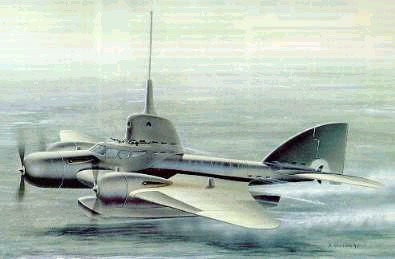
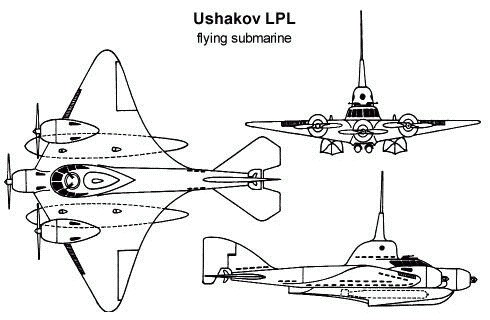
 www.youtube.com/watch?v=KIXnFgG4LdE
www.youtube.com/watch?v=KIXnFgG4LdE
Takeoff mass, kg 15 000
Flight speed, UZ (km/h) 100 (~200)
Flying range, km 800
Ceiling, m 2 500
Quantity and the type of aircraft engines 3 x AM-34
Power on takeoff conditions, hp 3x1200
Max. of add. agitation with vzlete/posadke and sinking, marks 4-5
Underwater SK -t6, knots 2-3
Submersion depth, m 45
Action radius under water, miles 5-6
Underwater independence, h 48
Power of rowing motor, hp 10
Duration of sinking, min 1,5
Duration of emersion, min 1,8
Armament:
- coaxial machine gun, pieces. 2
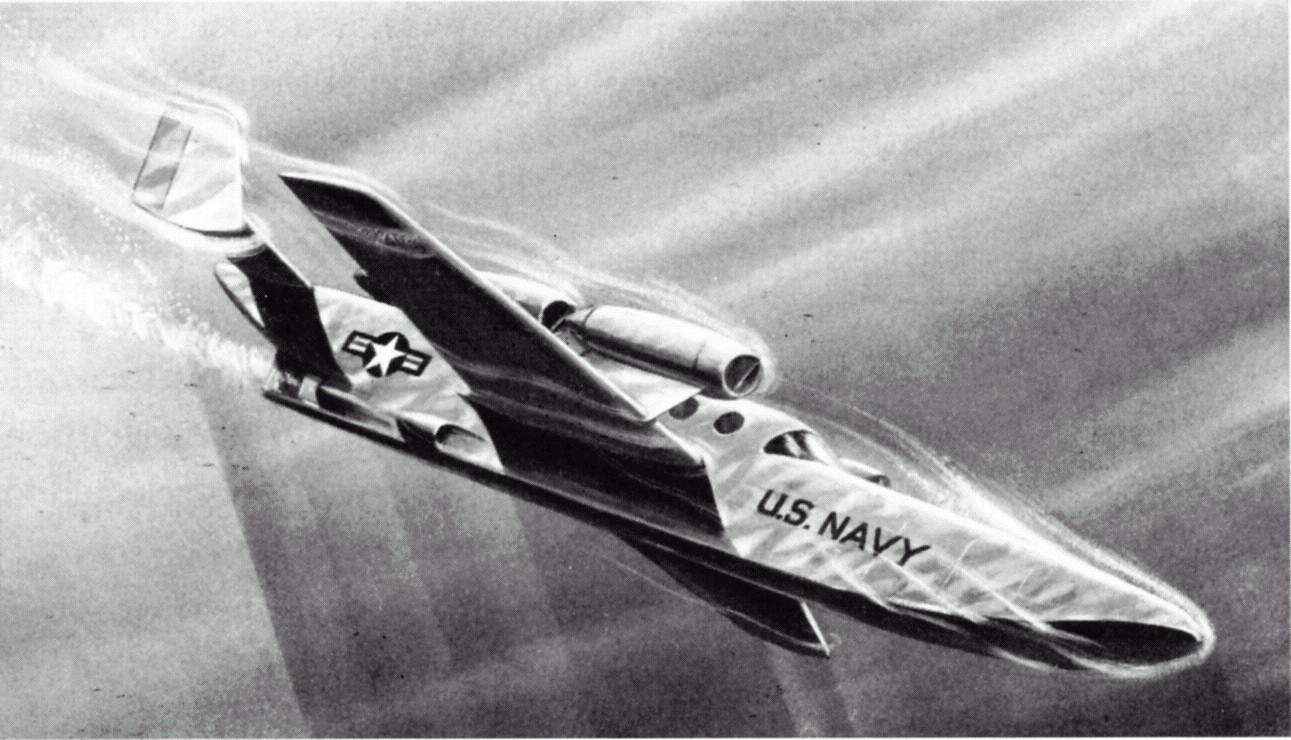
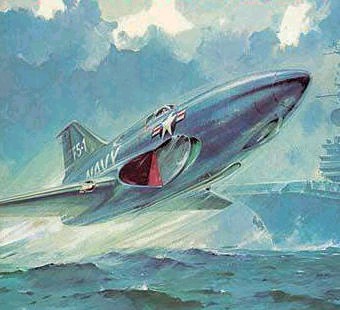
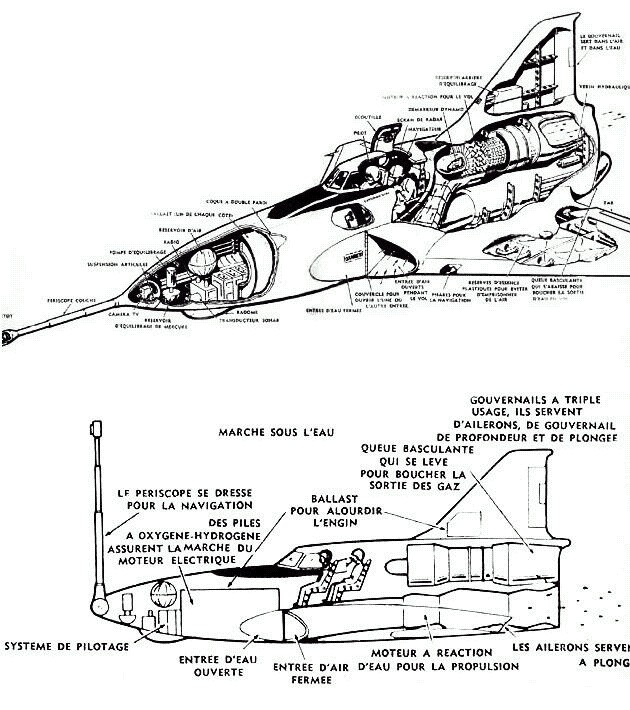
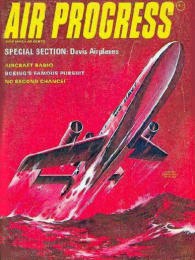
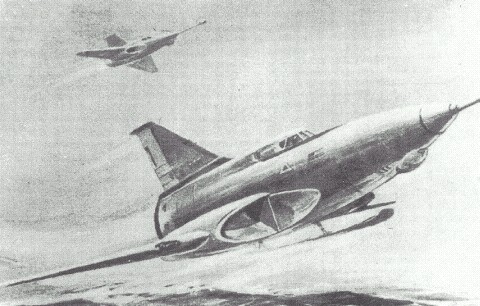
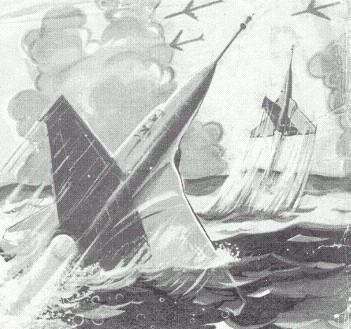
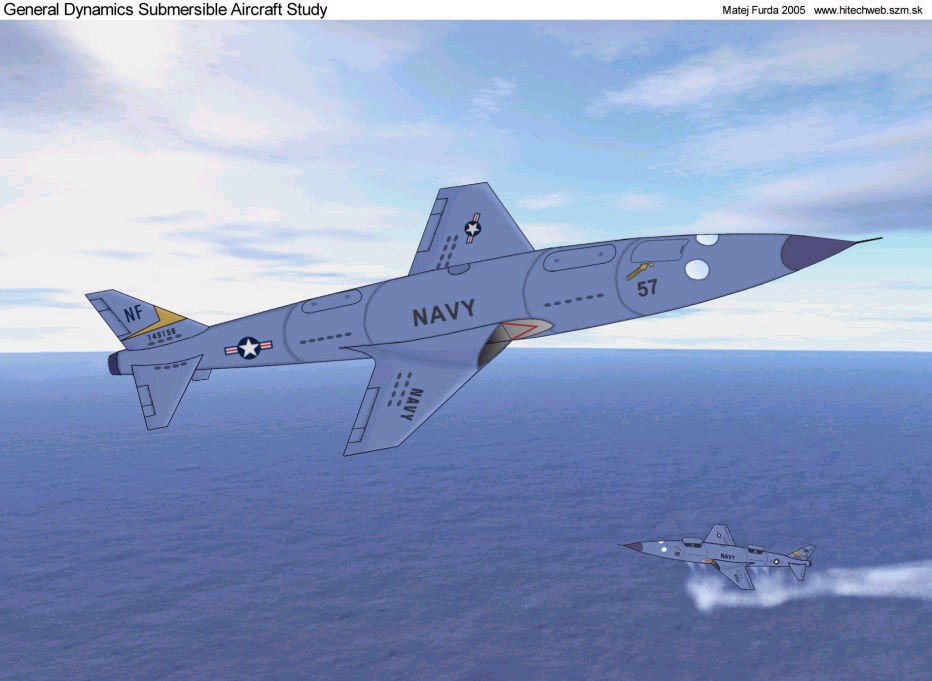
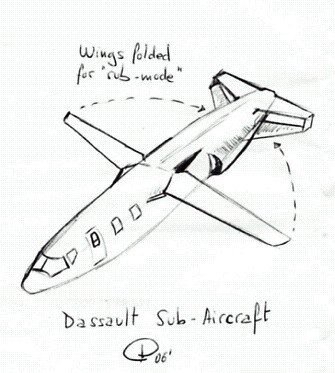
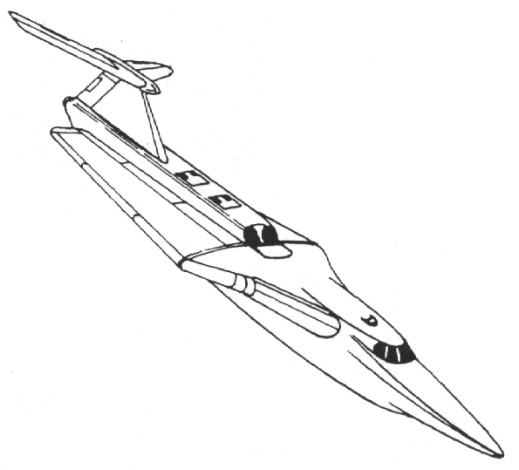
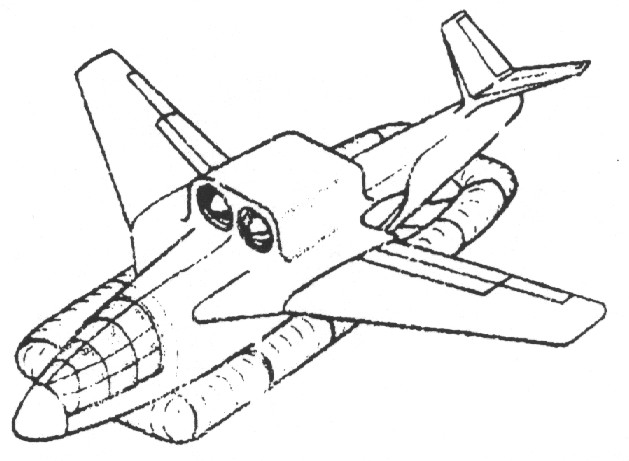

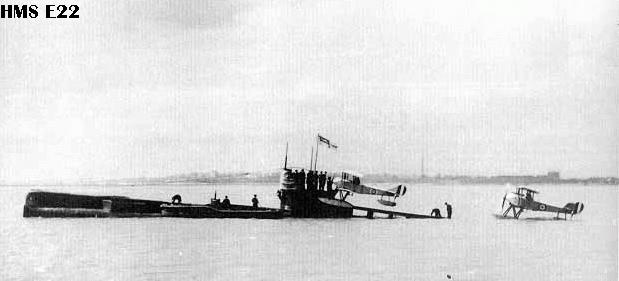
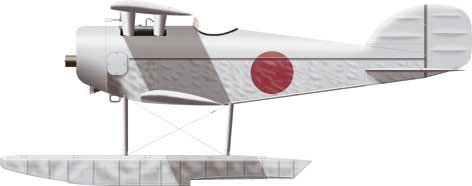
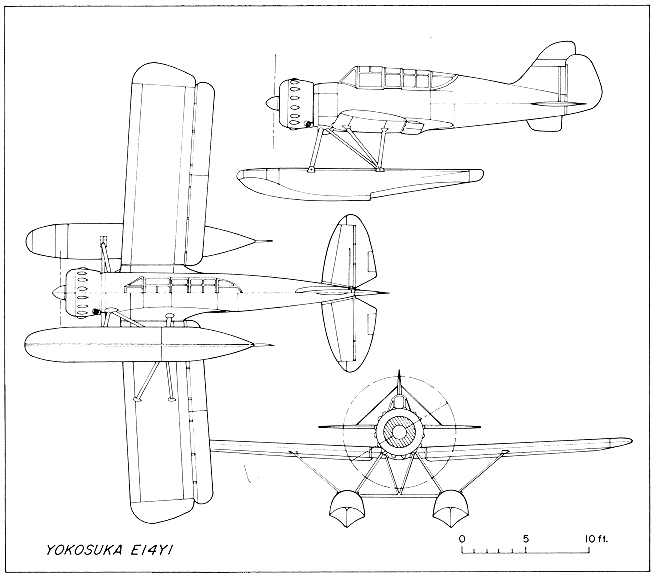
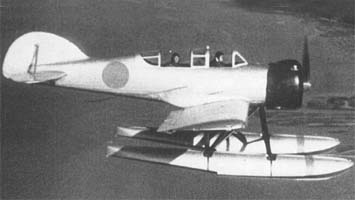
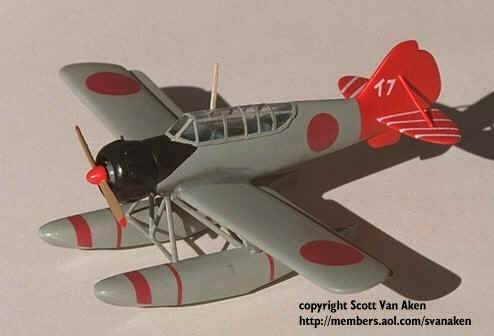
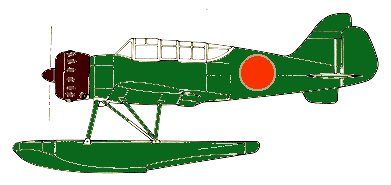
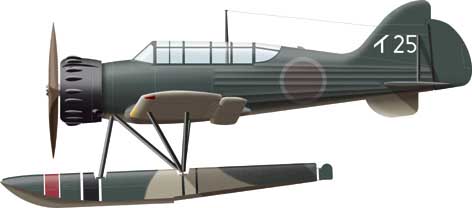
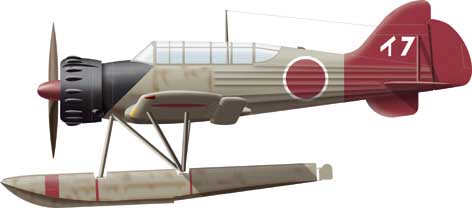
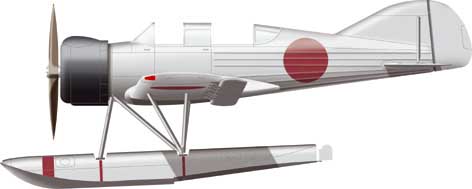

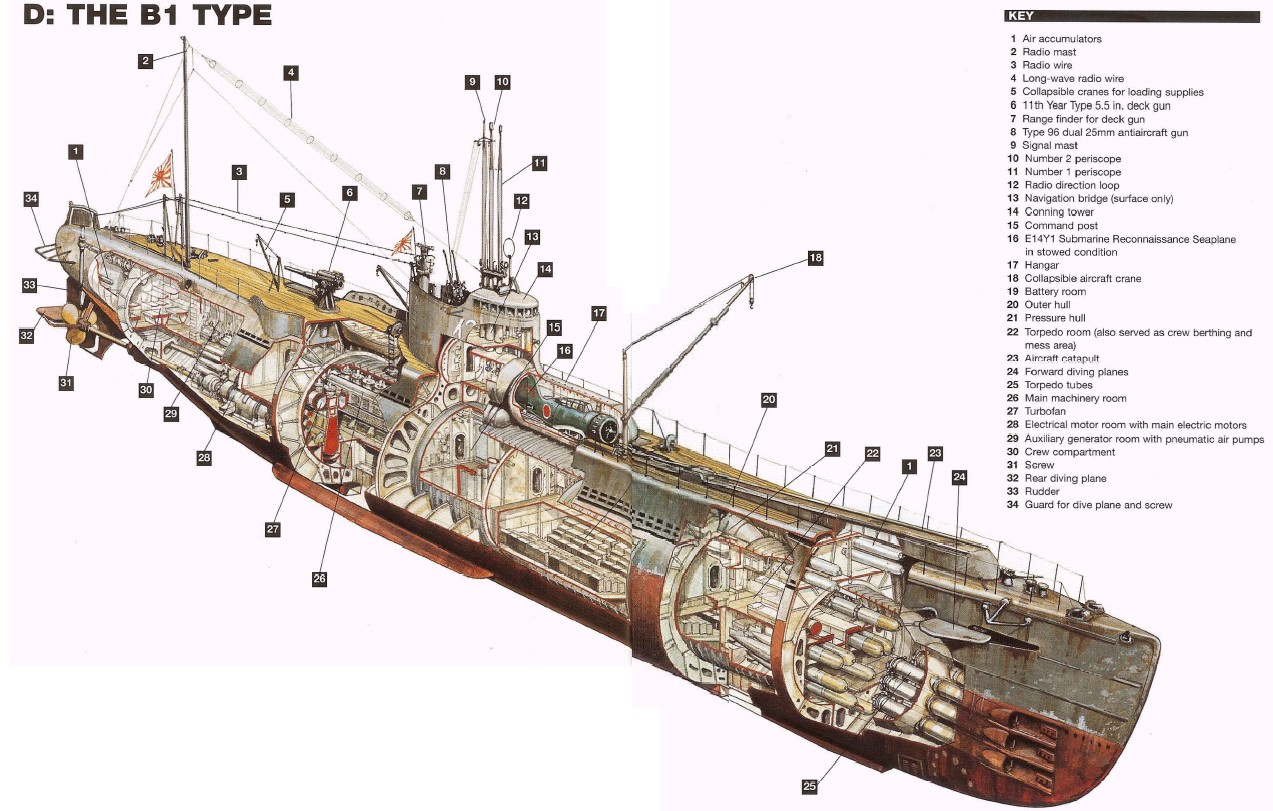
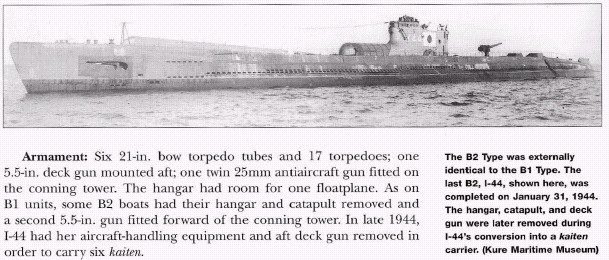

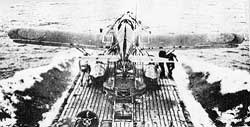
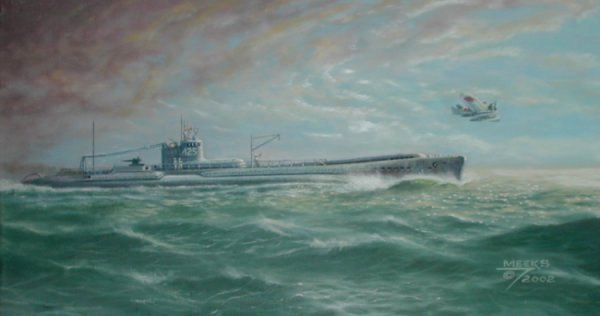
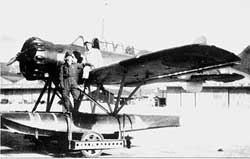
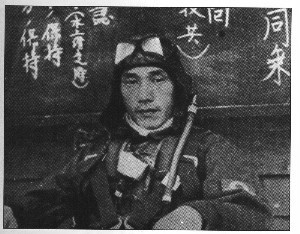
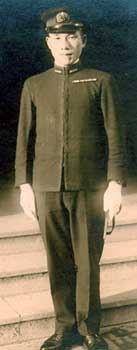
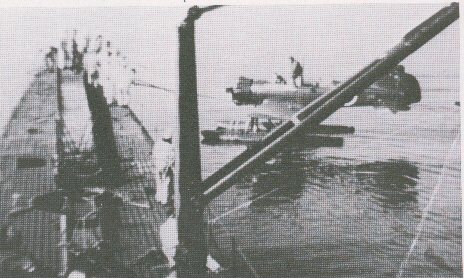
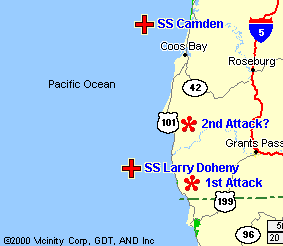
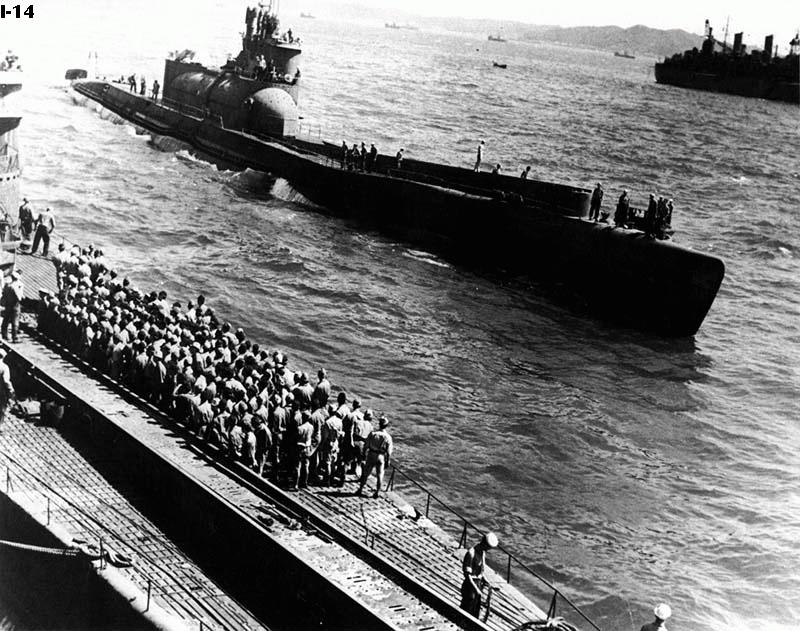

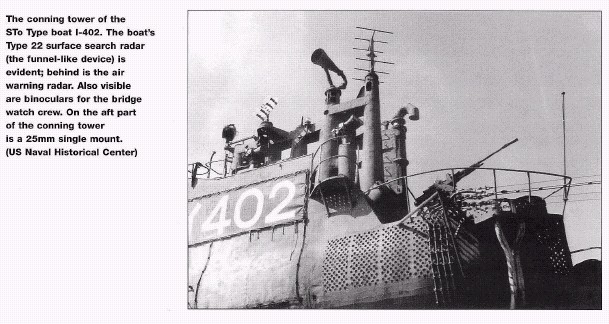
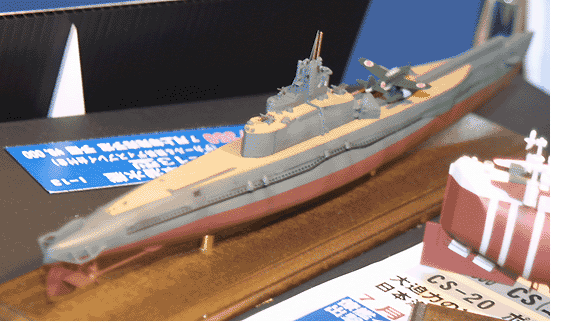
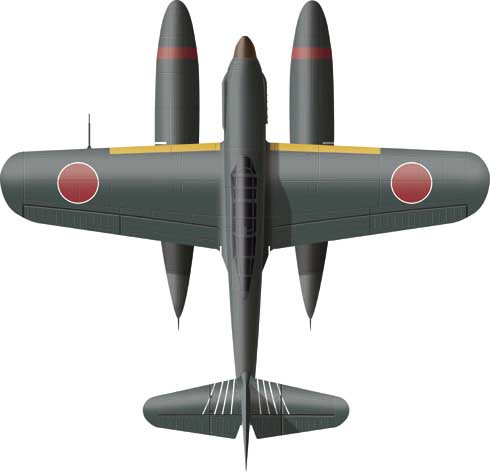

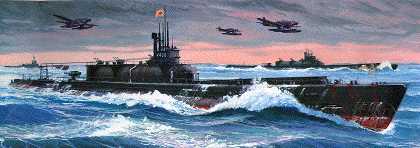

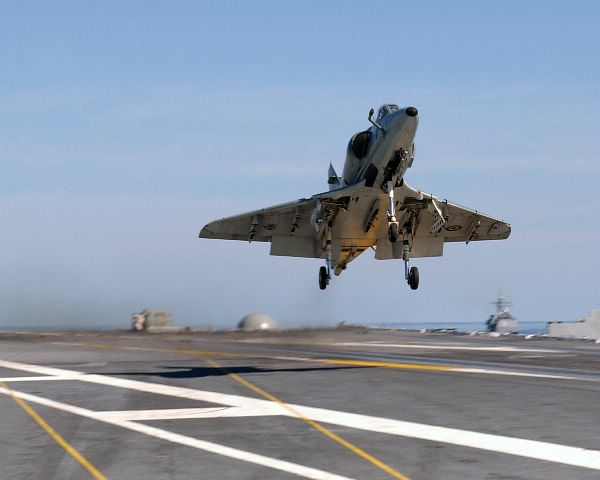
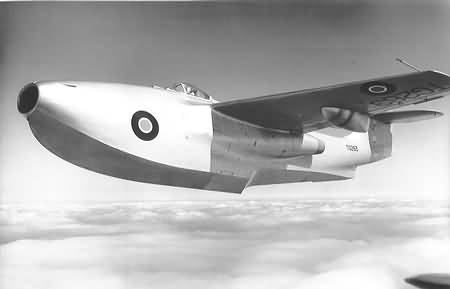
 www.youtube.com/watch?v=d9ks7RF9TBM
www.youtube.com/watch?v=d9ks7RF9TBM
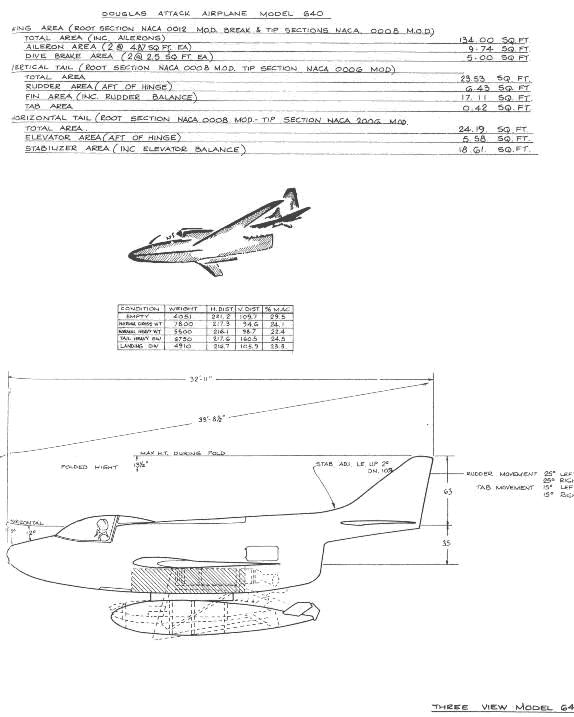
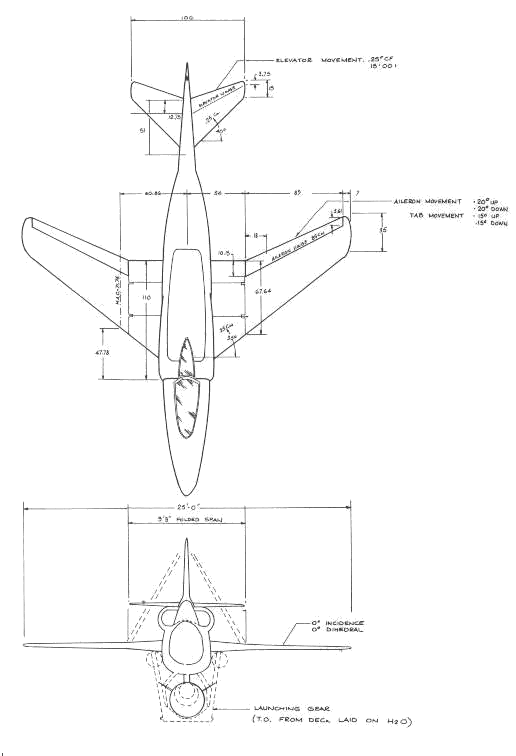
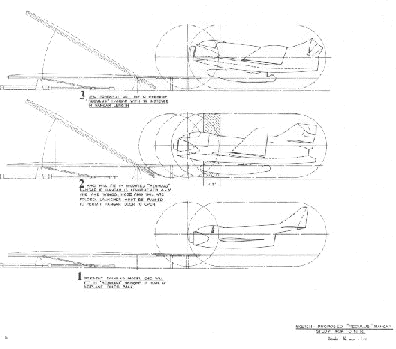
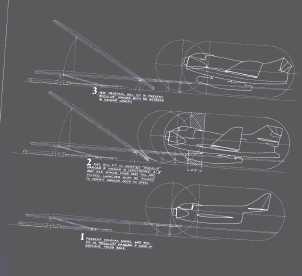
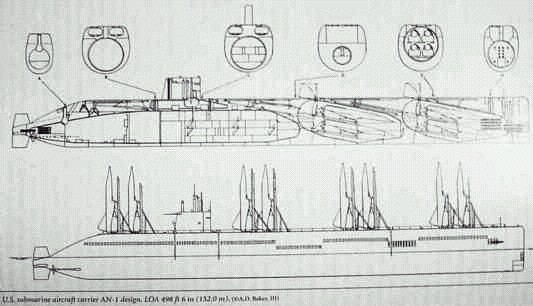
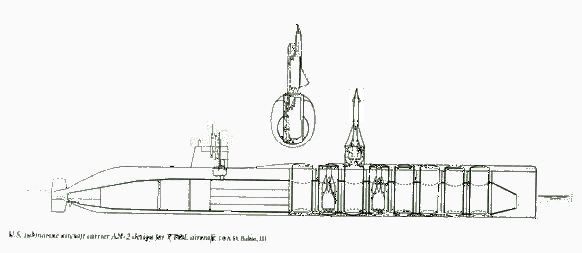
UnderSea Warfare magazine, U.S. Navy, 2001
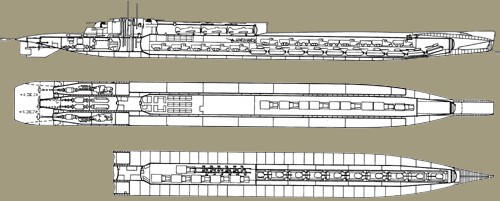


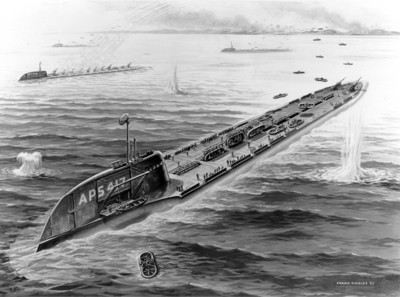
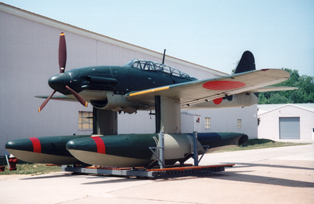
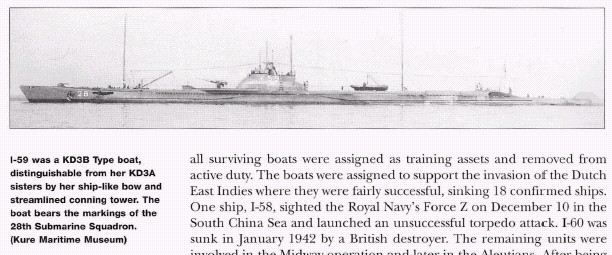
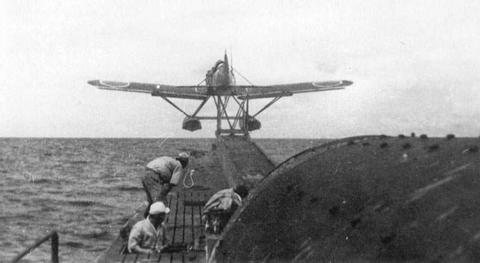
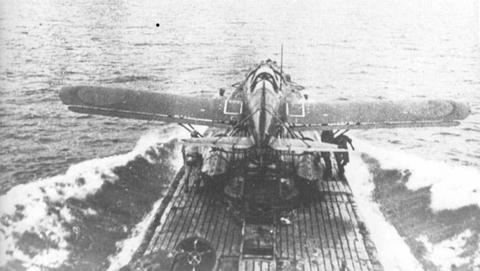

Ha- indicated coastal boats including
Midget-subs: 46 tons, 80 feet long, 6 feet diameter, 2 torpedoes, 16 hour range.
Two sizes of new mini-subs were building for the final defense of the home island at the end.
Japanese Aircraft-Carrying Submarines
I-201 to I-203 were snorkle equipped and came late in the war, 1945.
(b) to dispatch "special submarines" from their decks and to observe their war results;
(c) to attack escaping American war vessels, if any;
(d) to rescue operators of "special submarines", down fliers and others wherever possible.

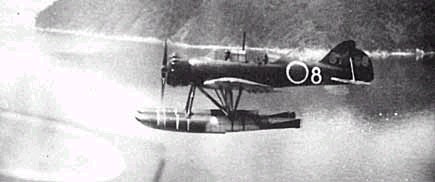
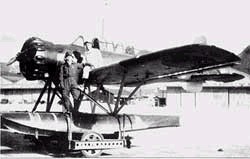
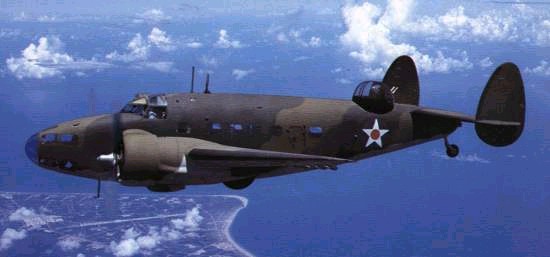
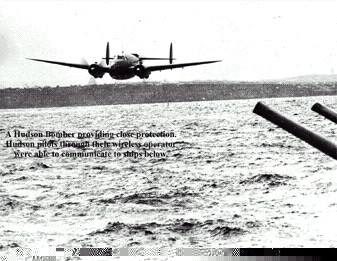
Length 11.63 m (38 ft. 2.25 in.)
Height 4.58 m (15 ft.)
Weight 3,301 kg (7,277 lb.) empty
J2 Class, I-6 carried one aircraft
J3 Class, I-7, I-8 carried one aircraft
A1 class, I-9 thru I-11 carried one aircraft
A2 class, I-12 carried one aircraft
AM class, I-13, I-14, I-15, I-1 carried two aircraft
B1 class, I-15, I-39 carried one aircraft
B2 class, I-41, I-45 carried one aircraft

NOTE: Some B2s were modified later to carry Kaiten mini-submarines.
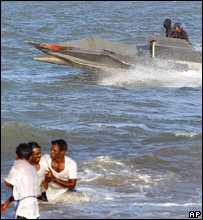
History
Independant
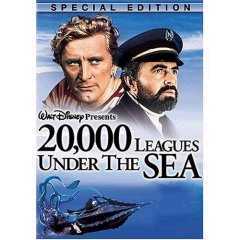
 www.youtube.com/watch?v=84QceTOO8v4
www.youtube.com/watch?v=84QceTOO8v4

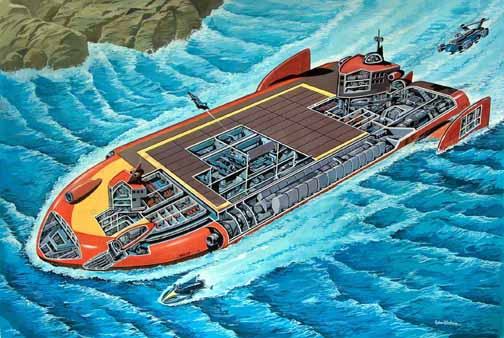
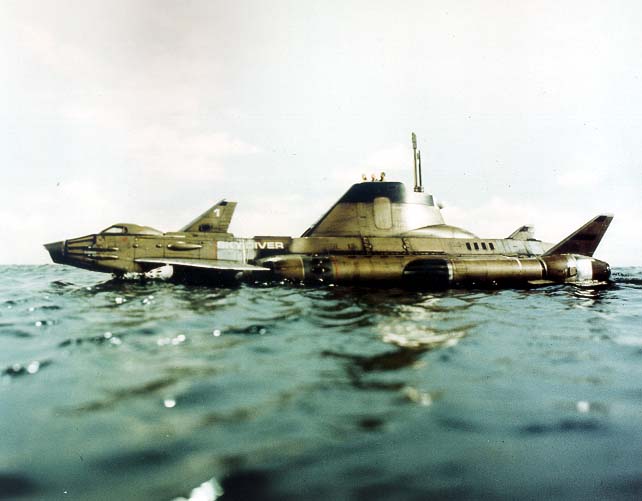
FEEDBACK!
Date: Tue, 30 Jan 2007 18:38:44 EST
